THE SKATE HISTORY OF SOUTH AFRICA CUSTOMIZED SKATEBOARDS



Vol.6 No.5Spring 2008 $4.95 100%SKATEBOARDING However beautiful the strategy, you should occasionally look at the results. —Winston Churchill concretewavemagazine.com VOL. 6 No 5• SPRING 2008 Canada Post Publication Agreement number 40671108
REPORTS FROM GERMANY, AUSTRALIA & ARGENTINA
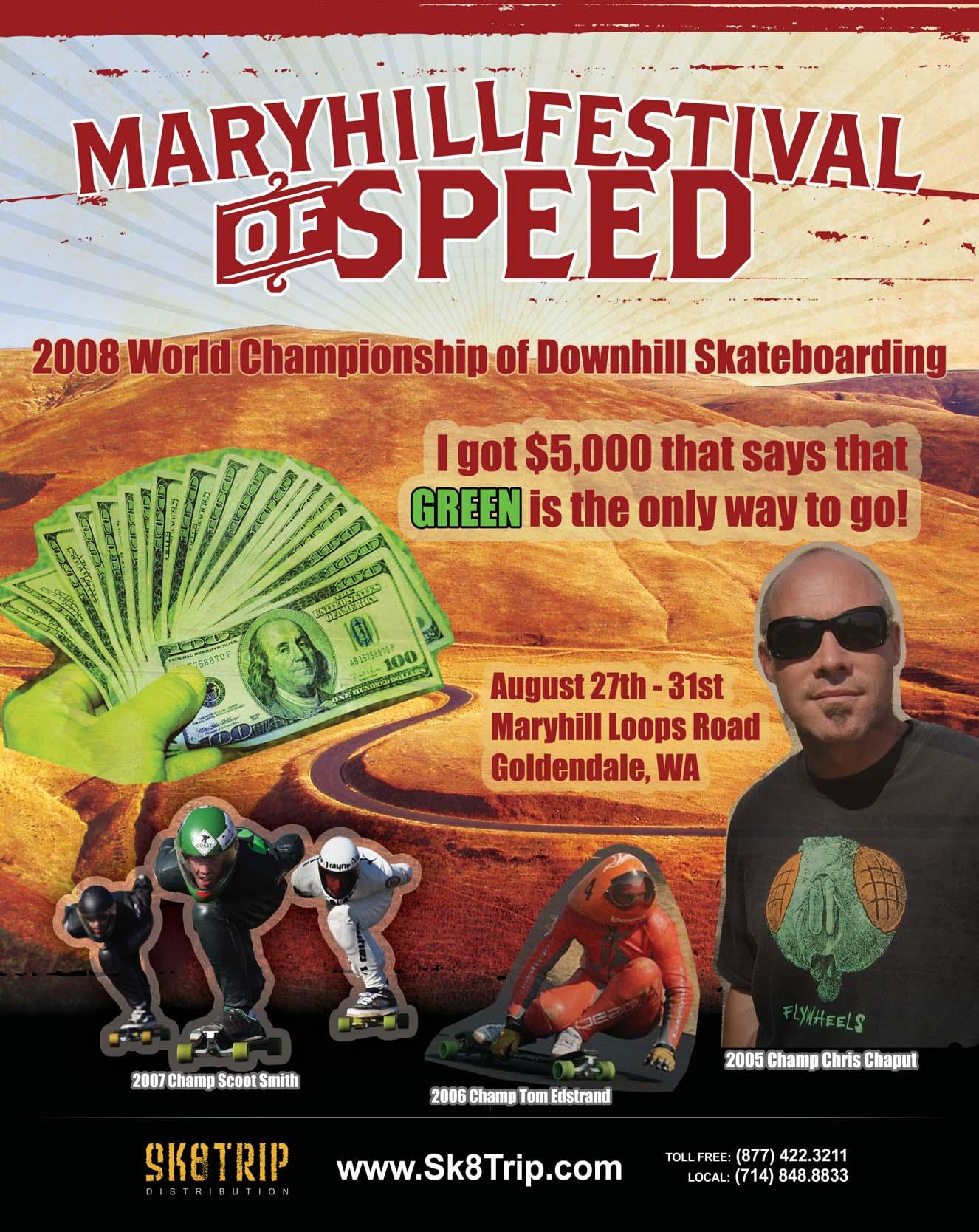








CONTENTS
EDITORIAL ....................................20
NOTEWORTHY ................................26
LETTERS ........................................40
THE 'FISH REPORT ..........................42
THE REALITY OF LIVIN' FREE ........44
PRODUCT REVIEWS ........................47
SPEEDBOARDER OF THE YEAR:
NICOLAS DESMARAIS ....................48
A WAVE OF CONCRETE ROLLS
OVER NORTHERN EUROPE ............52

VIVA LOS BARRIOS ........................56
SKATE CAMP ..................................57
PORTFOLIO: JEFF NASS ................58
CONCEPTION TO REALITY
SLALOM SKATING IN OZ ................67
STORM AT BONDI BEACH ..............68
HAVE IT YOUR WAY — SKATEBOARD CUSTOMIZATION ......72
PROS & CONS — A HISTORY OF SOUTH AFRICAN SKATING ........80

NEXT WAVE ....................................92
ART DEPARTMENT ........................94
12 CONCRETE WAVE SPRING 2008
Sergie Ventura at the Bondi Beach contest, OZ
Photo: Bill Fonseca



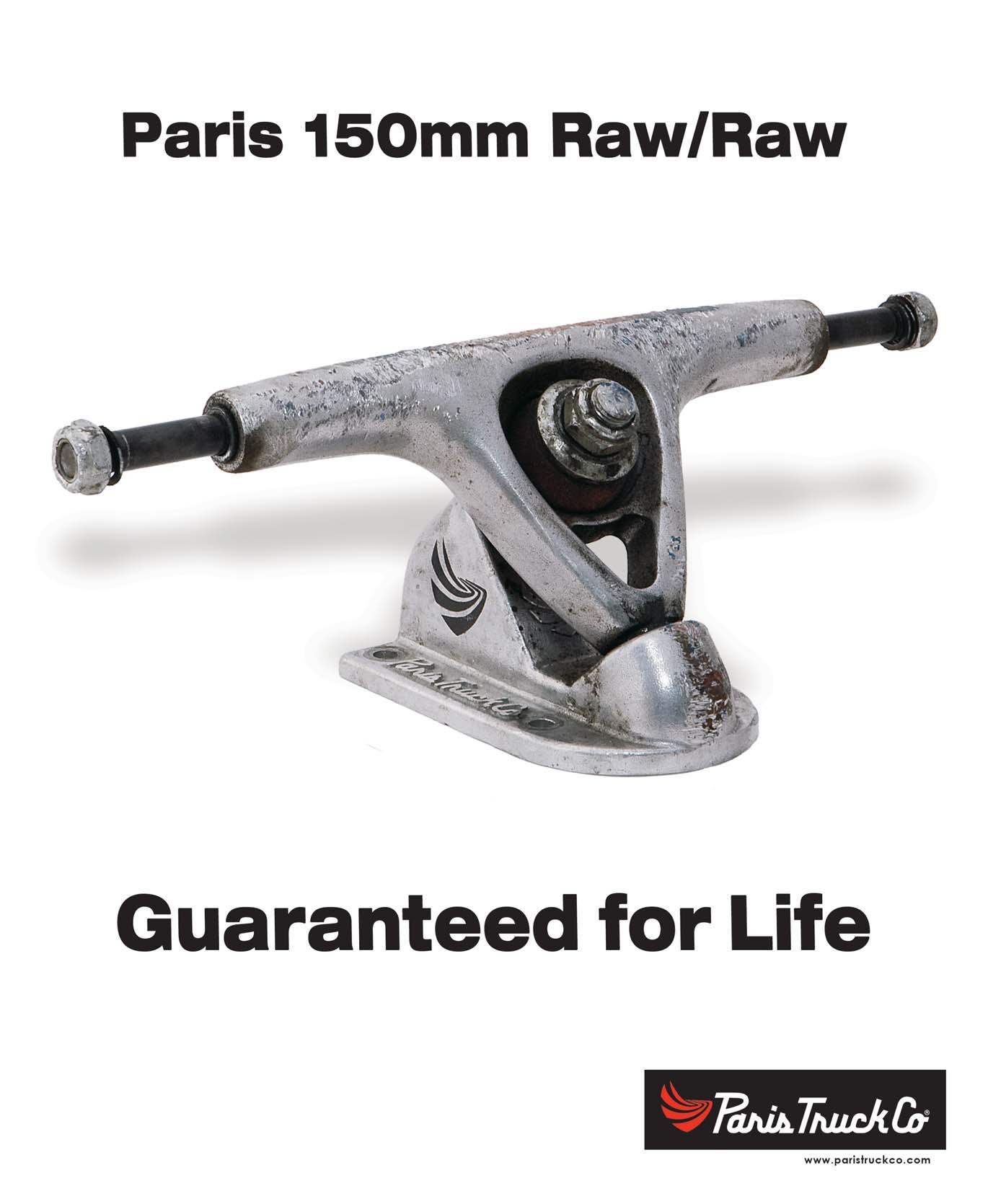
PUBLISHER/EDITOR Michael Brooke • mbrooke@interlog.com
SENIOR EDITOR Blair Watson
ART DIRECTOR Mark Tzerelshtein • MarkintoshDesign.com
ASSOCIATE EDITORS Mike Moore | Buddy Carr
DOWNHILL EDITOR Jon Caften
DOWNHILL PHOTO EDITOR Jon Huey
QUIVERS EDITOR Dave Hackett
CORRESPONDENTS Jim Kuiack | Mark Kessenich | Kilwag
NORTHERN EUROPE Markus Suchanek
LATIN AMERICA, SPAIN Diana Gracida | Pablo Castro AND PORTUGAL
AUSTRALIA David Pang | William Fonseca | Nick Sable
WEBMASTER Owen Gottschalk
VIDEO EDITORS Brennan Anderson | Stephen Hoff
COPY EDITOR Jonathan Harms
HEAD OFFICE 1054 Center Street Suite 293 Thornhill, Ontario L4J 8E5 Canada ph: 905.738.0804
SKATESHOPDISTRIBUTION Indaba Group PO Box 1895, Carlsbad, CA 92018 tailtapinfo@yahoo.com
FLORIDA DISTRIBUTION Robert Stack 786.229.7336
CONTRIBUTORS (In order of appearance): Jeff Nass, Dan Bourqui, Gia Canall, Dave Clark, Robert Lefebvre, Bricin Lyons, Steven Fröhlich, Simon Vita, John Zant, Adam J. Dabronka, Nick Faust, Jeff Sanders, Stefan Hauser, Ruebe Maleczek, Andy Dennis, Keith Butterfield, Michael Goetz, Chris Cunio, Christine McCrudden, Andrew Bielicki, Oliver DeFilippo, Julie Lapointe, Erwin Rechsteiner, Axel Torschmidt, Roman Hackl, Matias Bombal, John Harle, Miles Masterson, Edge Archives, Peter Wright, Gary Smith, Skate Edge Archives, Jorik Blom, Chris Van Lennep, Miguel Howell/Red Bull, Steve Steadham, Brian Fick, Malakai Kingston, Sergie Magdalin, Chris Clemens, Ryan Simpson, Scott Selover, Tory Cautela, Mario Moya, Bill Hensley, Michael Furukowa, Anayaphotography.com.
concretewavemagazine.com
Concrete Wave is published by North of La Jolla Inc.
Subscriptions (5 issues) are US$26 FIRST CLASS or CAN$26 (US$38 outside North America). Address change? Mag not arriving? Email us... don’t go postal. We can sort it out. mbrooke@interlog.com. We will notify you when your subscription expires. Publisher’s permission is required before reproducing any part of this magazine. The views and opinions expressed in Concrete Wave are not necessarily those of the publisher.We happily accept articles and photos. Please contact the publisher directly at mbrooke@interlog.com before you submit anything. We are looking for a variety of stories and images as long as they are skate related.
COVER: Cameron Lawerence. Photo Jeff Nass
OPENING SPREAD: Juergen Horrwarth, frontside ollie, San Diego pool. Photo: Dan Bourqui.

Distributed by ph: 416.754.3900 f: 416.754.4900
Printed in Canada
ISSN 1708-3338
Canada Post Publication. Agreement number 40671108
WELCOME TO THE FINE PRINT: Oddly enough, two things hit me at the same time this last week of March. (Before I continue, can I just state for the record how much I hate March? It’s the last gasp of winter and it seems to take a helluva long time to finish. We’ve been plastered with snow this year here in the East. To say that skaters here are somewhat anxious to get out and ride would be a vast understatement. It’s cabin fever like you wouldn’t believe.) OK, now that I’ve got that off my chest, it’s time to march straight into this edition of fine print. As I was saying, two things hit me at the same time, and they made me realize that there truly is “room for everyone.” I picked up a book called “Microtrends,” which you may have heard about. It was written by Mark Penn, the guy who coined the phrase “soccer moms.” In this book, Penn details numerous subsets of society. These include people who spend more than 90 minutes commuting each way to work, teenage knitters and the “New Luddites” (those folks who have rejected e-mail and the Internet). It’s a fascinating book, and of course, if you look carefully, you’ll see skateboarding is in there. In terms of overall participants, bicycle riding, basketball, fishing, golf and swimming have huge numbers, but their growth is either small or reversing. Skateboarding’s dramatic increase
in participation (from 4.5 million in 1995 to 12 million in 2005) has meant that it was the fastestgrowing sport in the USA, according to the National Sporting Goods Association. As Penn states: “notably, not one of the fastest-growing sports in America – skateboarding, kayaking, snowboarding, archery, backpacking, mountain-biking or bow-and-arrow-hunting – depends substantially on teamwork…today’s growing sports are heavy on personal intensity and inner strength and lighter on playbooks, whistles, uniforms, and manicured fields.” I couldn’t have said it better myself. I guess the only thing I felt missing from Penn’s book was some analysis of those 12 million skaters. Most surveys I’ve seen suggest that about 15% of skaters are over the age of 18. This means that there are more than 1.8 million people over the age of 18 who skateboard in the USA. I don’t know about you, but I consider that a pretty significant number. Maybe it will wind up in his next book? No matter what happens, I’ll still be skateboarding, and I‘m sure you will be too. And really, that’s the whole point. I sense that when some younger skaters (who are familiar with only street skating) pick up a copy of Concrete Wave, they are somewhat bewildered. There are a number of unfamiliar brands and skaters, and I am sure they are puzzled by
16 CONCRETE WAVE SPRING 2008 Vol. 6 No. 5 SPRING 2008
TM
the overall tone of the magazine. This sense of puzzlement might lead them to jump to conclusions, which I can see is somewhat understandable – to them CW must seem like an entirely new skate universe. I have discussed this “inter-generational skate thing” on numerous occasions both in print and on the Web. It really boils down to tolerance and respect. The young might be somewhat dubious of the old, and the old might be somewhat dubious of the young, but the fact is that we can all enjoy skateboarding. As I’ve stated before, each generation can learn from the other. For what it’s worth, all these younger skaters out there will eventually move on to something else or stick with skateboarding. If they stay with skateboarding, this means there will be a dramatic rise in the number of older skaters over the next few decades and that gradually, older skaters won’t be a microtrend, they will be a major trend.
Despite the growth in skateboarding and the “invasion” of skategeezers, the fact is that skateboarding is still one of those activities that most of the mainstream media don’t quite understand. It’s not covered in the sports section of your local paper the way baseball is, and most of the time, skaters are hassled by security guards and the police just for the act of skating. A lot of folks can’t
quite seem to understand the lure of skateboarding. However, many corporations seem to have grasped skateboarding’s potential as a commercial vehicle, and of course millions of participants can’t be wrong. So maybe skateboarding really isn’t that much of a marginal activity as I first thought? It really boils down to what crowd you associate with. I was reminded just how much less of a fringe activity skateboarding is while I watched a video called “Air Guitar Nation.” You might have found yourself at one time playing air guitar to one of your favorite songs, but did you know there were contests? The documentary follows a number of air-guitarists as they compete across the world. It’s exactly as you picture it – metalheads showing off their best air guitar moves, and an audience who appears to be in on the joke – at least, that’s what you hope. As I watched, I began to sense that some of the air guitarists really took things very seriously indeed. So while there’s much parading around, along with bizarre facial expressions, for some, this is as close as they will come to being an actual rock star – talk about “virtual reality!” I can appreciate the humor with air guitar, and I admire the sense of camaraderie between the contestants, but for me, I think I’ll stick with skateboarding – it’s 100% real.
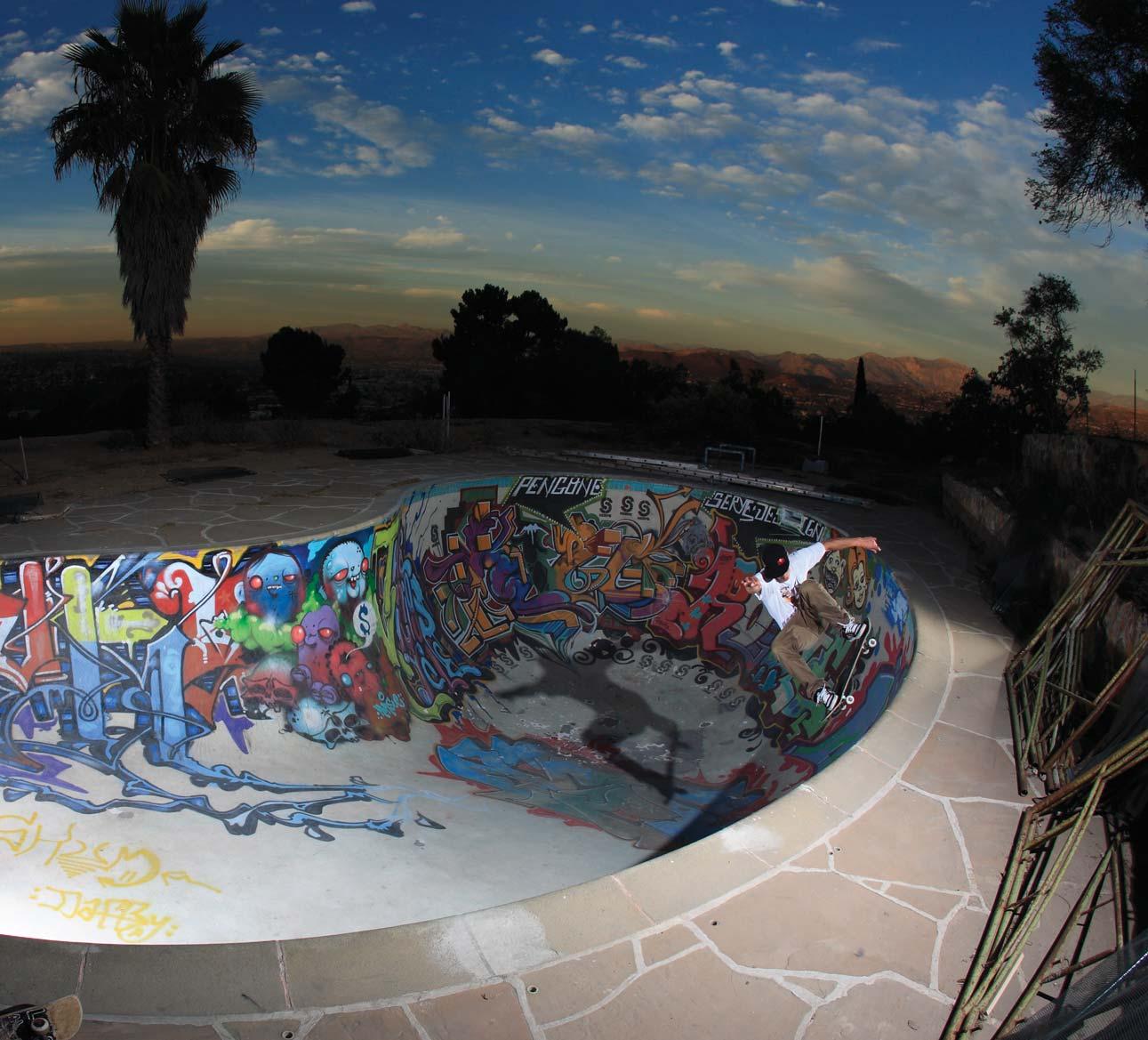
SPRING 2008 CONCRETE WAVE 17


DROPPING OUT vs. DROPPING IN W
e’re facing some challenging times here on planet earth. Every day it seems like we are bombarded with depressing news: the economy, the environment, wars, crooked politicians and human rights abuses. As things lurch from bad to worse, it can get mighty depressing. Many of us just throw our hands up and tune out, hoping that it will all blow over. It will, but the antidote is not to ignore what’s happening — don’t drop out of what’s going on. Engage in something that is positive and makes a difference and if that revolves around skateboarding, well, that’s even better.
So things are little crazy out there — what about the state of skate? I believe the act of skateboarding is probably pretty healthy right now. There are literally hundreds of incredible skateparks. There are dozens of contests and more media coverage than at any other time in history. There are also lots opportunities to try different types of skateboarding and the internet provides a great way to communicate with fellow skaters. At the same time, the business of skateboarding is going through some convulsions. We’ve discussed the rampant myopia that has clouded many in the skate industry. The focus on one type of skateboarding and one type of skater has meant that a lot of
companies have put all their eggs (wheels?) in one basket. Now that street skateboards have become pretty much a commodity, it’s doubtful they’ll turn the opposite way.
Like many of you I have found that skateboarding has pulled me through some difficult times. It’s been a long winter and going several months without the ability to skate outside warmed by the sun can take its toll — even on folks like me who are surrounded by skateboarding. When you take all the depressing news and couple it with “cabin fever” it can be a recipe for disaster. March is a cruel month, no doubt!
Thankfully, there’s always humor to bring you back from a semicatatonic state. With that in mind, I proud to present to you Don Wimmer – the skater you see pictured in the above photo. Don has a new movie coming out called “Dropping In.” The teasers on the website (droppingmovie.com) are sure to put a smile on your face. You’ll be learning more about Don’s quest to become a pro skater (at the age of 42) in our upcoming issue but for now, don’t drop out, drop in!
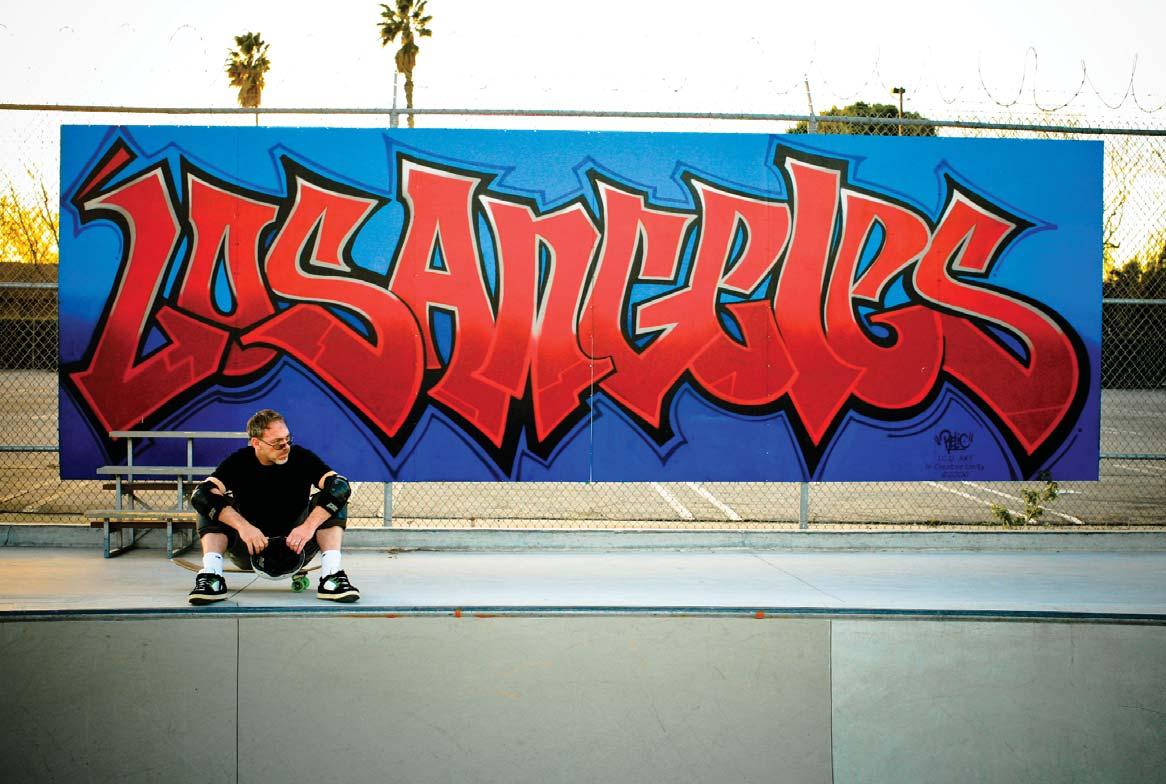
Enjoy this issue,
Michael Brooke, Publisher/Editor
20 CONCRETE WAVE SPRING 2008 EDITORIAL
Don Wimmer contemplates whether to drop in or drop out. Photo: Gia Canali

SKATEBOARD SHOPS LIST
ARIZONA
Soul Sticks Boardshop 23 South Beaver Flagstaff
928.853.3033
Sidewalk Surfer
2602 N. Scottsdale Road Scottsdale 480.994.1017 admin@sidewalksurfer.com • www.sidewalksurfer.com
CALIFORNIA
Board Gallery 3333 Newport Boulevard Newport Beach 714.902.3769
Cellular Skate 6787 Carnelian Street Alta Loma 909.941.1004
Mike McGills Skate Shop 335 First Street Suite #S Encinitas 760.943.7730
Mike’s Bike Shop
5507 West Pico Blvd. Los Angeles 323.935.4338
Viva Skateboards 1709 Howard Road Madera 559.664.8997
Bill’s Wheels Skateshop
1240 Soquel Avenue Santa Cruz 831.469.0904
Purple Skunk Purpleskunk.com
5820 Geary Blvd. San Francisco 415.668.7905
Skate Supply
1135 Garnet Avenue #13 San Diego 866.310.2654
The Trading Post 622 Upham Street San Luis Obispo 805.801.6653 ccmfjay@yahoo.com
Random X Boardshop
13222 Springdale St.,Westminster 714-898-7070
Sonoma Old School Skate and Surf 1001 Broadway Sonoma 707.938.5500 skatesos.com
Cellular Skate 287 Mountain Ave Upland Tel: 909.981.8856 cellskate@verizon.net
COLORADO
All Board Sports 1750 30th Street Boulder 303.415.1600
CONNECTICUT
Skate Valencia 4 Castle Court Stamford
GEORGIA
Feral 190 Park Avenue, Athens 706.369.1084
Skate Madness
1344 Stonefield court, Alpharetta 770.777.0336 skatemadness.com
Woody’s Halfpipe 6135 Peachtree Parkway Suite # 603 Norcross MASSACHUSETTS
Boardroom 6 Armory Street Northhampton 413.586.8857
MICHIGAN Ollies Skate Shop 120 ½ E Maumee Adrian 517.265.2031
MINNESOTA
Old School Skaters 1119 NW 2nd Street Faribault 612.578.3326 www.oldschoolskaters.net
MISSOURI
Genesis Skateboarding 13 NW Barry Rd. #147 Kansas City 816.456.1307 genesisskateboarding.com
MONTANA
Wheaton’s
214 1st Avenue West Kalispell 406.257.5808 wheatonscycle.com
BlackTop Surfshop 176 5th Avenue West North Kalispell 406-752-6006
NEBRASKA
Vinny’s Skatepark 1112 Applewood Dr. Papillion 402339-3399
NEW MEXICO
Timeship Raicing 825 Early Street Suite H Sante Fe 505.474.0074 timeshipracing.com
NORTH CAROLINA
Soul Ride Skatepark 6049 Victory Lane Concord 704.454.7433 soulrideskates.com
OHIO
Old Skool Skateboards 19E College Avenue, Westerville roxtar55@hotmail.com
OREGON
The Longboard Store 1238 SW Wheeler Place Bend 541.480.4254 thelongboardstore.com
Cascadia Longboards 3366 West 17th Street Eugene 541.729.7392
Daddies Board Shop 7126 NE Sandy Blvd., Portland 503.281.5123 daddiesboardshop.com
Rebel Skates 1025 SE Sandy Blvd. Portland
503.232.0434
Oregon Skate 38962 Proctor Boulevard Sandy 503.826.8427
RHODE ISLAND
Seven.Ply 3 Canal Street Westerly 401.348.0656
TENNESSEE
Planet Sk8 7024 East Church Street Suite 2 Brentwood 615.377.1947

Sk8sations Skate Shop 3032 N.John B.Dennis Hwy. Kingsport 423.245.0994 tbec@charter.net
UTAH Salty Peaks Snowboard Shop 3055 East 3300 South Salt Lake City 801.467.8000 Milo Sports 359 E.1300 S. University Parkway Orem 801.426.4300
VIRGINIA
EastCoast Boardco. 10358 Fairfax Blvd. Fairfax
703.352.4600 x:8 213 25th Street Va Beach
Black Cat Skateshop
1325 A West Main Street, Charlottesville 434.244.0014
WASHINGTON
Gravity Sports 126 Rainier Ave South Renton
425.255.1874 Mountain Goat Outfitters 12 W. Sprague Avenue
Spokane
ALBERTA
Avenue Skateparks
9030.118 Avenue NW Edmonton 780.477.2149
Easy Rider 4211.106 St., #153 Edmonton 780.413.4554
Pipeline Surf Co 10336 111 Street NW Edmonton 780.421.1575
BRITISH COLUMBIA
Area 51 191 Station Street Duncan 250.746.8869 a51.ca
Raven Skate Shop 411 Campbell Street Tofino 250.725.1280 ravenskateshop.ca Salton Rides Saltspring Island, BC 250.537.4984 saltonskate@canada.com
Switchback Longboards 4385B Boban Dr. Nanaimo 250.751. 7625
ONTARIO
Orbit 406 Cumberland St., Cornwall, 613.932.9754
Hammer Skate Shop 2225 Queen Street East Toronto, 416.698.0005
Hogtown 401 King Street West, Toronto 416.598.4192
McPhails 98 King Street North, Waterloo 519.886.4340
QUEBEC
DLX/Deluxe 2480, chemin Ste.Foy Ste.Foy 418.653.0783 dlxdeluxe.com
OVERSEAS
New Zealand— Serenity Island Surf & Skate Café 202a Wainui road Gisborne serenityisland@windowslive.com serenityisland.com
Boardshop Australia boardshop.com.au04 15883371
friendlyfolks@skateparkguide.com
UK – Octanesport.com
Skateboardsofchoice.co.uk
Bath, United Kingdom. Tel: + 44 1249 715811 Germany – seasondistribution.com, concretewave.de Hackbrett Longskates Im Wechselfeld 12 St. Peter Hack@customlongskates.com
Longboarders.de Gustavstrasse 49 90762 Furth longboarders.de kontact@longboarders.de
Tel: 0911 9772500
France : Hawaiisurf.com
Y & T Fussa Fussa.City,Tokyo
2348 Fussa Fussa.City,Tokyo 1970011
Netherlands — Sickboards
Fuutlan 45 Delft sickboards@yahoo.com
Sweden 2FUN Ärtvägen 14 Fjaras 43033 2fun.se
ON.LINE RETAILERS
Allboardsports.com
Bordz.net
CascadiaLongboards.com

Coldwarskateboards.com
Daddiesboardshop.com
Denverskateshop.com
Edsbearings.com
(pleasure tools)
Fuegolongboards.com
Genesisskateboarding.com
Latterdayskates.com
Lbhaven.com
Longboardshop.de
Longboardstore.com
Milehighskates.com
Oldschoolskates.net
Pressuredroplongboards.com
Roadkillskates.com
Sk8supply.com
Socalskateshop.com
Solidskate.com
VSLboardshop.com
22 CONCRETE WAVE SPRING 2008 Want to know where to find Concrete Wave Magazine? Would you like to find all the amazing skate gear you see in these pages? Lo ok no further than our shop list. If you’d like to have your shop listed here, it’s easy. Simply send a check for $115 to Indaba Group PO Box 1895 Carlsbad California 92018 or pay pal tailtapinfo@yahoo.com, ph: 760-722-4111. You’ll get 10 copies of 5 issues mailed out along with this complete listing. For international rates, please email us. Yes, shipping is included. If you think your local shop or park should be carrying Concrete Wave, email mbrooke@interlog.com.

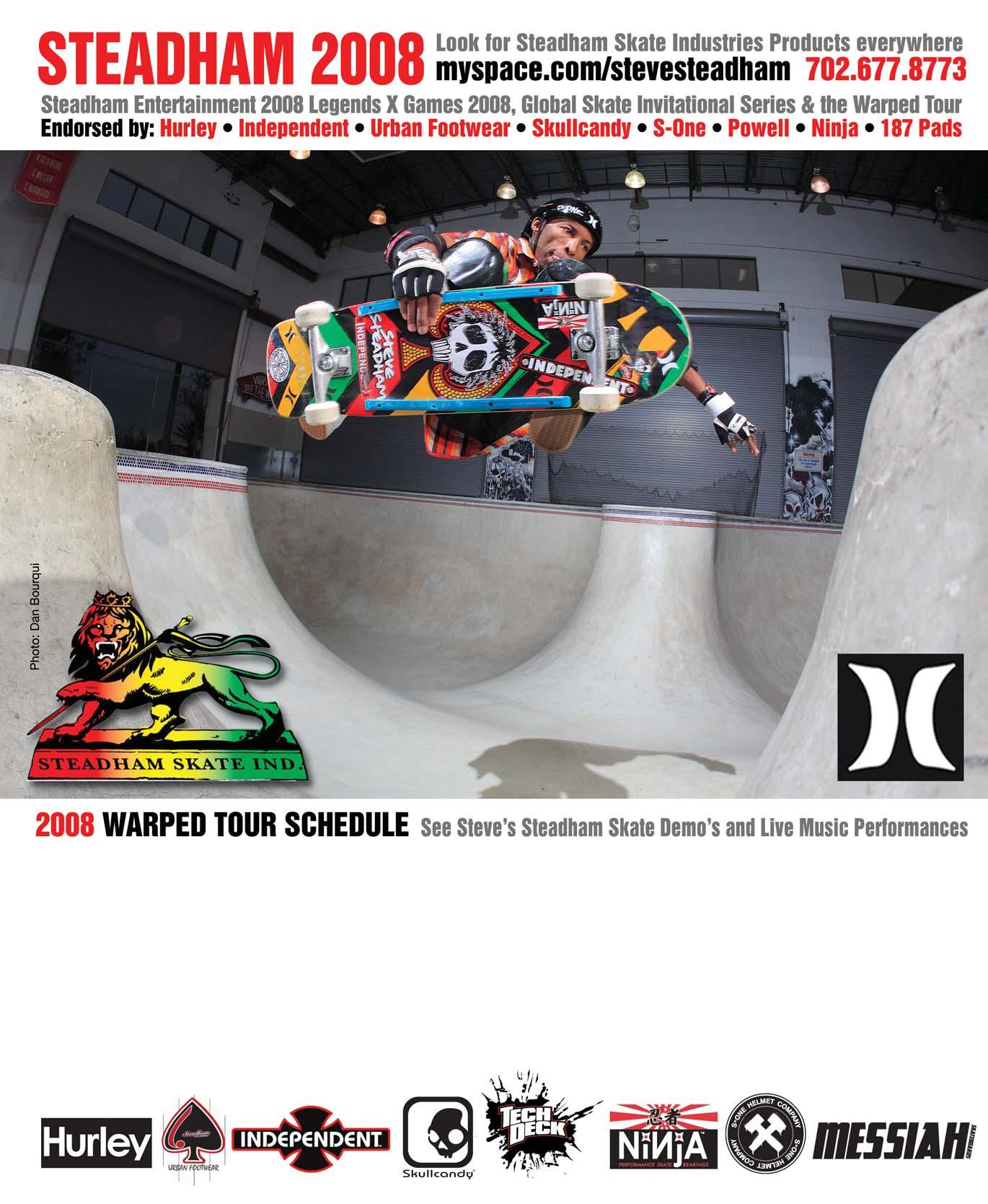

4/11 Vans Warped Tour Kick Off Party Key Club, Hollywood, CA 6/20 Pomona, CA 6/21 San Francisco, CA 6/22 Ventura, CA 6/25 Phoenix, AZ 6/26 Las Cruces, NM 6/28 Salt Lake City, UT 6/29 Denver, CO 7/1 St. Louis, MO 7/2 Kansas City, KS 7/3 Dallas, TX 7/5 San Antonio, TX 7/6 Houston, TX 7/9 Atlanta, GA 7/10 Orlando, FL 7/11 Tampa, FL 7/12 Miami, FL 7/13 Jacksonville, FL 7/14 Charlotte, NC 7/15 Virginia Beach, VA 7/16 Washington DC 7/17 Cleveland, OH 7/18 Detroit, MI 7/19 Toronto, ON 7/20 Montreal, ON 7/22 Buffalo, NY 7/23 Boston, MA 7/24 US Open H.B., CA 7/25 Philadelphia, PA 7/26 New York, NY 7/27 Scranton, PA 7/29 Pittsburgh, PA 7/30 Cincinnati, OH 7/31 Indianapolis, IN 8/1 Milwaukee, WI 8/2 Chicago, IL 8/3 X-Games L.A., CA 8/6 Calgary, AB 8/8 Boise, ID 8/9 Seattle, WA 8/10 Portland, OR 8/13 Fresno, CA 8/14 San Diego, CA 8/15 Mountain View, CA 8/16 Sacramento, CA 8/17 Los Angeles, CA Check out the fresh new stuff from Steadham: Steadham Skate Ind., Urban Footwear, Messiah, Lionwood, Big Generator, Sk8 Grommet & The Timz Mgmt. J Gabriel Mgmt. 734.556.0488

METROBOARD

NOTEWORTHY PRODUCTS, PEOPLE, EVENTS
A new ultralight electric skateboard, the Metroboard, is now available and made in Portland, Oregon. It boasts a top speed of 15 mph, a powerful 450-watt motor, regenerative braking and a wireless remote. The Metroboard is available in models that weigh just 18 lbs, making it very portable. metro-board.com
CONSPIRACY
Conspiracy Skateboards has recently released the Glen Charnoski Model. Glen is riding the 8.25 x 32 with a 14.5 wheel base but it also comes in other sizes. 8”, 7.75 and 7.5 for the kids. It’s got good concave and nice steep nose and tail. Last year was an Epic Year for Glen, winning the Overall World Cup Masters Bowl division and having his first son. Congratulations Glen! conspiracyboards.com
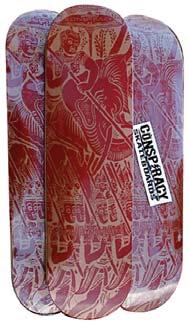
SK8KINGS
Now celebrating ten years in business, SK8KINGS announces the latest additions to their catalog of specialized gear.
Racing: Maximus
Super G – biggest baddest of the AXE series with multi-wheelbases (35 x 9”) built for speed, Flatland: Gary Holl Pro Deck –redesigned symmetrical shape and new Christian Cooper graphic (30 x 7.625”); Diane Desiderio Pro Deck – hot leopard print trick deck honoring the skate diva (26.75 x 7”); Park: Amoeba Invasion Art Deck –limited edition deck featuring graphics by guest artist CP Kaestner (31.5 x 8”); Slasher Wheels – hubbed with offset bearing seat & wide contact patch (60mm/98a). SK8KINGS.COM or call 714-636-7308.
BUSTIN BOARDS ROOTS LABEL

The “Roots Label” series is Bustin’s take on sustainable engineering and design. The new line uses biodegradable composites developed at Cornell Uni-
versity in New York. Composed of sustainably harvested bamboo and a patented cross-linking soy resin-infused hemp, this board combines the durability of a composite deck with a 100% earthconscious design. The first shape in the series, the Sojourn, is a 33”, super-responsive carving board with the classic stability of a Bustin shape. Each board can be customized. bustinboards.com
GECOBOARDS




GecoBoards is a new company based in Germany that was founded to build the perfect board for a perfect ride. As they state: “we just want to have fun so we started to design and created new ideas and styles.” gecoboards.de
SK8MAFIA
SK8MAFIA has just released a promo DVD featuring a full-length part from their newest pro, Kellen James, featuring footage from their newest addition to the am team, Jamie Palmore. The DVD is called “Jus Liv’n” and is available for free at your local skateshop. sk8mafia4life.com
BEER RUN
The new Circle Star line up is replacing the Red Star boards and will be available in sizes: 7.625”, 7.875”, 8.125”, 8.5” and 9.0”. In other news, Gavin O’Brien is the latest pro to join up with Beer Run. 408-6267600 brent@defenderdist.com

CHARLESTON BOARDS
Charleston was founded by Jamison Beck, a woodworker by trade and an avid surfer. Jamie shaped his first longboard as way to get around Folly Beach, South Carolina. Friends took one look at his vertically laminated masterpiece and wanted their own board. Four different shapes are offered at their site, charlestonboards.com

TECH DECK

Besides adding a new line of Santa Cruz graphics and shapes, Tech Deck has come up with a tribute to two legendary skate meccas: the Hubba Hideout and the Brooklyn Banks. Visit TechDeck.com to learn more.
LOTUS
Lotus was founded around the fundamentals of why anyone does the same thing for twenty years –because it’s fun, doesn’t cost much, and never gets boring. Two friends reunited in 1997 on the Southern California coast and began to experiment with the basics of the long board. They have combined the inspiration of the original long boards used to bomb the big waves of Hawaii, quality craftsmanship, unique and sustainable woods, along with an enjoyment of riding a long board no mater what your age. lotusskatedesigns.com
HERRON TRUCKS
Herron headquarters are in the Kansas City area and the trucks are 100% made in the U.S.A. Herron is not out to reinvent the basic skate truck but did combine aspects from the top selling trucks all into one simple design. They added a new (no hang) design with a reverse king pin available in 7, 8, and 9 inch hangers. The trucks are constructed of solid carbon fiber and hardened steel axels that make Herron Trucks much lighter and more durable. New distribution accounts available. herrontrucks.com
GREENLONGBOARD
It’s true, all skateboards are somewhat green, after all they produce no emissions, nor C02 gases. However, some are greener than others. Here is the “latest and greenest.” The Green Longboard is made from recycled scrap hardwood and sealed with a NO-VOC clear coat to last a lifetime. The board is

26 CONCRETE WAVE SPRING 2008
NOTEWORTHY PRODUCTS, PEOPLE, EVENTS
machined on a computer and all shavings are recycled as well. Additionally, 7 trees are planted for every complete purchased. greenlongboard.com

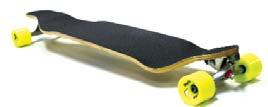

DESCENT
Descent Longboards, the home of the original solid hardwood Drop Through, introduces another industry first. The Gnome, is the shortest drop through available, measuring in at only 33”.Made of solid Sapele and Maple, the Gnome has unsurpassed turnability and the stability that only a drop through possesses.All boards are completely handmade in Bend, Oregon, and are the highest quality solid hardwood longboards. descentlongboards.com or at thelongboardstore.com
LANDYACHTZ
Landyachtz have taken many of their favorite aspects of their freeride boards and put them together in one fully capable package — The Chinook. The deck is lowered by 1” in the back and 1.5” in the front, giving it a nice forward rake. This innovative design is the first of its kind.The forward rake puts you in a more aggressive stance for carving and cornering as well as making tucking more comfortable for speed demons. The rake elevates your heal and puts you in a more forward leaning position.This breakthrough design also enables the rear wheels to break-out and drift with less effort and more control than a traditional lowered or dropped board. The nose is lowered with a wedge providing more steering in the front, the rear is lowered with the truck mounting flat to allow for a more natural feel. landyachtz.com


MUERTO
Muerto Skateboards is run by two skate friends from Arizona.


Onewho now paints and tattoosin Denver and the other nowsurfing and skatingin Oceanside. Annual gatherings at Oceanside’sDía de los Muertos Festival have been fun for all present, both living and dead.Muerto rider Ben Vigil canregulalarly be found flowing the Denver Park.Muerto’s latest offering isthe Señor Loco deck. Available in square tail or pill shape. Available at better skateshops in Denver and Oceansideor online at muertoskateboards.com
SOCAL SKATESHOP

SoCalSkateShop.com has a new wheel - the 60mm /101a Winged Ones. The wheel has the same formula as the 59mm wheel but has been re-designed with a modern wheel shape. New SCS decks are also available and come in the following sizes: 7.75",8.75" and 9". checkout SCSSKATE.TV for all the latest videos from SCS. socalskateshop.com

G&S FIBREFLEX
Skip Frye, Legendary Surfer, was one of the first Teamriders for Gordon & Smith in the 60’s. Skip, forty years later, has rediscovered the stoke of skateboarding and re-joined G&S for a special project—the 25” Perpetual Motion Egg. G&S Fibreflex has designed a modern version of Skips favorite Fibreflex from back in the day that challenges anyone to see how far they can perpetuate motion without more than one push. legenddist.com
SECTOR 9
The folks at Sector 9 have been busy formulating new race wheels. There are a number of combinations available: a 75A or 80A in sizes 69/70/74/76 and 81mm. Their website has been completely redone, too. sector9.com
SURF RODZ
The newest creation from Surf-Rodz is the 72” Proteak OLO deck. This handcrafted teak performance-driven deck is the result of an exclusive collaboration between Surf-Rodz and Proteak. The Proteak OLO deck is a truly “ecogreen” skateboard deck. It features more than 12 laminated strips of teak; no fiberglass or petroleumbased composites are used in its construction. The OLO Gun Longboard has a natural flex, similar to bamboo, but its thickness and strength make for the liveliest longboard ride for this length. surf-rodz.com

STREET SWELL
What started in a small garage in Colorado has grown into production of some truly beautiful longboards. No plies here, just stunning exotic woods. A fiberglass top with integrated grip ensures years of pleasure without the risk of cracks. Three shapes are available: the Cruise (10” x 46”), the Tomahawk (9.5” x 46”) and the Scud (9.5” x 45”). streetswell.com
DTC CONCEPT
DTC Concept is the new wheel from DTC, a company born from a blend of performance and passion for downhill skateboarding. This 80mm wheel is the first precision wheel for downhill skateboarding and features the following durometers: 75A, 78A, 80A, 83A. fullsurf2002@hotmail.fr

EARTHWING
The Thruster (9.75” x 36.5”) is a shape that Earthwing founder Brian Petrie has been quietly working on over the last year. There is nothing super-technical about it; it’s just one of those fun, magic shapes that work, and reminds you how much fun skateboarding is. Call (347)623-3421 or visit earthwingskateboards.com
HYBRID
Hybrid Skateboards introduces their 52mm wheels. The wheels are made of a premium blend of the best urethane. They are not too hard, nor too soft. They are perfect for either street or use in the park. They feature a ribbed surface for more grip on smooth surfaces like ramps and the pipe, while also gripping the asphalt and concrete. hybridskateboards.com
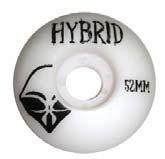
NiNjA
NiNjA is proud to announce the new Kenny “Nature Boy” Mollica NiNjA 7 pro model bearings. Mollica has dominated the slalom and banked slalom pro circuit for years, with major wins at La Costa, Indian School, Kona, Europe, and the 2003 World Championships. NiNjA is Nature’s way. ninjaskateusa.com
SPRING 2008 CONCRETE WAVE 27
NOTEWORTHY PRODUCTS, PEOPLE, EVENTS
DECKCRAFTERS
Every Deckcrafters deck is designed and manufactured by Chuck Hults. Chuck has been involved in many of the major innovations of the modern skate deck and has shaped decks for countless legendary, innovative and current top pro skaters. Many top name brands still use Chuck to create their master templates and to help develop new products. 35 years of skating and 25 years of shaping go into every deck he makes. Custom orders and exclusive OEM also available. deckcrafters.tv
AFFIRMED ARTES
Affirmed Artes is an artist-first products company, made up of art advocates, accomplices and instigators. Their inaugural effort is the Affirmed Artes Longboard Co., a skateboard company for those with artistic merit. With limited editions of 450, the decks are built to ride, but should also be proudly hung as working art when not in use. affirmedarteslongboards.com

will be longboard- and family-friendly. TAP encourages design input from Concrete Wave readers. All ideas as well as donations are welcome, but only donations will be tax deductible. The Project is a 501(c)(3) tax-exempt organization. To find out more about donating visit theamphibianproject.org or call (949) 548-1462.
PYROKLASTOR
Rainer Sachrau, the German owner of longboarders.de, has been skateboarding since the early ‘70s. He had a dream: his perfect longboard. The PYROKLASTOR is his personal soul. Its shape and material are the result of experiences and testing. USA handmade with a variety of woods: walnut, maple, birch, oak, lacewood, hickory, cherry – in classic stringer design. Constructed and shaped especially for Carver C7 trucks combined with real big wheels. 38”- 50”. longboarders.de


SEISMIC
After uncovering an original ‘70s deck made out of beautiful exotic purple-heart wood, Ladera couldn’t help adopting the stylish retro shape into their own line of boards. The Purple Heart has contemporary touches like a kicktail, mellow concave, and a slight nose kick to turn the board into a high-performance mini fit for the modern rider. laderalongboards.com

THE AMPHIBIAN PROJECT
The Amphibian Project (TAP) is planning a skate park in Fountain Valley’s Mile Square Park. The 30,000-square-foot, ecologically friendly skatepark
Seismic Skate Systems is proud to introduce an innovative line of skateboards. Nearly two years in development, they’re available separately or in expertly-tuned complete setups featuring industryleading components. The lineup includes minis and cruisers in lengths from 28” to 42”, designed for everything from recreational carving to transportational cruising to aggressive styling. seismicskate.com
MARBLE
Marble Wheel Co. has created multicolored wheels including camo, candy corn, rainbow, salmon, rasta, skulls, checkers, and tie-dye. Making urethane attractive, these wheels feature both unique designs and bright colors blending across the wheel. Made in the USA and produced without lead, they are available in three sizes: 50mm, 52mm, and 53mm. Packaged with marbles in each set, they offer a unique visual experience both on and off the skateboard. grindking.com

BOARDELI
Boardeli Longboards is a small company that currently calls Edmonton (Canada) home. They are trying to bring the graphics aspect of skate decks into the longboard community. Established names such as UNKLBRAND and Motomichi
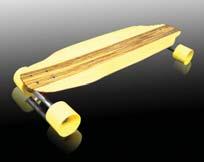

Nakamura have helped them develop a line of limited-edition decks that, even though they deserve to be on the asphalt, are more inclined to be hung as art. boardeli.com



SUPERGREEN
Supergreen uses bamboo that is sustainably harvested, along with the newest technologies in ecofriendly glues. They are currently working with a company that is developing a soy-based alternative epoxy that will take green boarding to a whole new level. The company is also perfecting a board built with a fiberglass-alternative made from extremely fine woven bamboo. supergreenboards.com
LONGWOOD
This year’s lineup for Longwood Skateboards includes the 27” 008 Zippy. It is a total old skool, geared with a modern flair needed for today’s fast-paced world. This deck comes in two styles: Wenge or Zebrawood, both sustainably forested woods. The 008 Zippy features a beautiful teak wedge tail block, which has been added to give skaters more options whether in the pool or on the street. It even blends in with your furniture. longwoodskateboards.com
DEATH SKATEBOARDS DVD
Hailing from Harrow in London in the UK, Death skateboards proudly give you their latest DVD offering, “Better Than Life.” Insane skate locations worldwide, pulling stuff that shouldn’t be pulled. Contact Smart Monkey Distribution at (831) 457-8206 or deathskateboards.com

CW MYSTERY WORD IN BG
Honey Skateboards in conjunction with CW is giving away a deck if you find a mystery word in the 2008 Buyer’s Guide. If you are having trouble locating the word, visit their website for a clue – honeyskateboards.com

28 CONCRETE WAVE HOLIDAYS 2007
LADERA
NOTEWORTHY PRODUCTS, PEOPLE, EVENTS


SATURDAY SKATEBOARDS

Backlipping down 15 stairs is a radical and brave thing to do. No one is disputing that. But don’t you just wanna take it down a notch sometimes? Don’t you yearn for a warm summer evening where you just push down the street, carve around and maybe ollie over a dead bird or empty soda can? Just load your iPod with some Belle & Sebastian and put the “O.G. Pusher” under your feet for a journey back to pure leisure skateboarding. Saturdayskateboards.com
KONTROL
Kontrol is a new urethane company based out of San Diego. For the past two years, they have been working on a new formula and process to manufacture wheels. Both have patents pending. The materials are made in the USA. Call (619) 814-4411 or visit kontrolwheels.com

GECKO
Gecko Decks, together with pro slalomer Martin Drayton, have produced a slalom board that they believe sets a new benchmark in quality, performance and finish. Weighing only 600 grams, the deck is 30” long, 8.75” wide, 7.75” at the waist and 8” at the tail, with 18” and 19” wheelbases for pro and amateur courses on both sides of the Atlantic. geckodecks.com

TUNNEL
Tunnel Products is proud to announce the Tarantula Wheel, a 70 mm wheel designed specifically for longboarding that was over a year in the making. An off-set bearing placement with a core results in quick turning, and the Tarantula wheel features the Tunnel specialty, an outside “Tunnel” lip that grips the road like no other design. Available in 75A, 78A, 82A and 84A. tunnelwheels.com
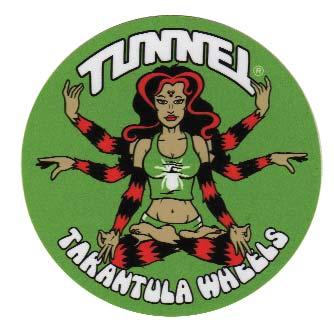
LIFE , LOVE & DEATH

This DVD focuses on backyard pools. It’s a closer look at some pool heavy players such as Salba, Rob Slob, Toby Burger, Ricky Stiles, Darrel Delgado, Nilton Urina and Bruno Passos. The soundtrack includes The Needles, Clay Wheels and JFA among others. The bonus includes ‘90s pool sessions with Duane Peters, Jay Adams, Tony Alva, Christian Hosoi and more. brasilskate.com/cexae.html
ULC
As a deck company based in Quebec, ULC Skateboards is slowly leaving its mark across Canada. As part of their 2008 line, they are introducing two “bro” models. A feature film is to be launched this summer called ULCity. ulcskateboards.com

BUSTIN BOARDS
AND
EASTERN SKATE SUPPLY
Bustin Boards and Eastern Skateboard Supply are proud to announce the first-ever Limited Edition Bustin shop program. The special series of graphics will be released in quantities of 100 and then retired. Each board in the series will be hand numbered for authenticity and will include a hang-tag with an artist bio and graphic meaning. The new program comes in response to an outcry from customers who are hesitant to buy online or who just want to touch and feel the board before purchasing. There will be a Bustin open house on May 16-18 and it includes a weekend of activities at the Bustin loft and in/ around NYC and is open to all Bustin customers. bustinboards.com/openhouse
FRANK’S CHOP SHOP
For the first time ever, Frank’s Chop Shop, a New York based fullservice traditional barbershop has collaborated with Shut Skateboards, to produce a limited edition skateboard designed by popular artist, Steve Ellis. The FCS/SHUT skateboard is an exclusive collectable, with only 151 boards being released. The deck will be available at Frank’s Chop Shop (19 Essex Street, NYC), as well as on frank151.com

COMET
Comet Skateboards and e2e Materials are stoked to announce the opening of the East Coast Comet Skateboards manufacturing operations located in Ithaca, NY. The new operation will produce Comet’s new Bio Whip skateboards incorporating e2e Materials’ exclusive biocomposite technology. The Comet/e2e biocomposite is comprised of a cross-linking soy polymer (which can replace petroleum epoxies) and North American hemp and bamboo. Comet has also reopened its OEM business and is now accepting orders from companies of all sizes. Call (510) 625-8045 or visit cometskateboards.com or e2ematerials.com
DR. SKATEBOARD
Dr. Skateboard’s Action Science is designed to incorporate both a four-part video series and an accompanying activity booklet that focuses on concepts in physical science that integrates both skateboarding and BMX. Action Science explores concepts suitable for middle grade students in a curriculum that is designed to address both the objectives and enduring knowledge of physical science in content and process skills for the National Science Standards. The video instruction focuses on the physical science concepts found in the areas of motion, forces, Newton’s laws of motion and simple machines. The main purpose is to link the concepts of science to skateboarding and to provide an interesting method of engaging students in the exploration of science in a real-world context. The overarching theme for Dr. Skateboard Action Science is the appeal of skateboarding and other action sports as teaching and learning vehicles for families, young people and adults. drskateboard.com
SKATELEGENDS
Lynn Cooper, expanded the Skatelegends Demo team last year and invested in a large trailer, truck and several demo ramps due to the high demand for their Skateboard Programs and Demos. Their new setup now allows them to provide much needed mo-

HOLIDAYS 2007 CONCRETE WAVE 29
Bill Robertson
NOTEWORTHY PRODUCTS, PEOPLE, EVENTS
bile Skateboard Instruction to the many communities that still have no skate parks, or Skateboard Program offerings. Skatelegends.com
SHUT FINALLY OPENS
sions rolled on all winter. The transitions have hosted the talents of many great skaters including Sheldon Lloyd-Smith “Swell”, Will Marshall, JT Rogers, Steve Picken, Brad Ceasor, Mike Lefebvre, Matt Crawford, Chris Cousineau, Rob Dawson, Chris Chartrand and Mark O’Byrne. It has been an epic winter thanks to the Broken Bones Sk8 Team riders who help support skateboarding and make great sessions happen everywhere.
LEARNING TO SKATE
Phoenix, to hit two to three different skateparks in one day. “This way the kids experience different park setups, so they get good on all types of obstacles,” said Erik. Culminating the experience is Graduation Day at the end of the eight-week session. Beginners get to do a one-minute demo to show off their new skills, they get presented a certificate, and there’s music, a product raffle, snacks, and sometimes, visits from pro skaters like Aaron Suski.
Shut Professional Skate Mechanics has opened it doors to the public. Located in the historical Lower East Side of Manhattan, Shut supplies a wide range of hard good to service the needs of all styles of skateboarding. Select other brands and SHUT soft goods. Give them a call or skate on by and say “hello” to the SHUT Crew! 158 Orchard St. 212.420.SHUTshutnyc.com
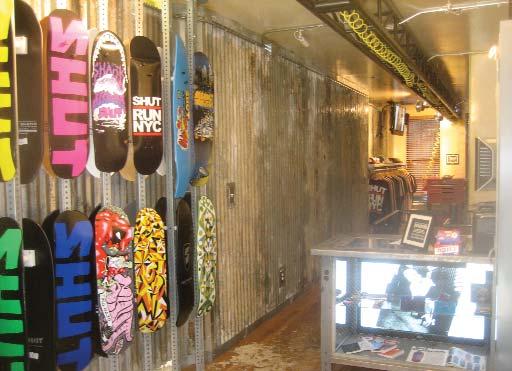
CORNWALL, ONTARIO’S INDOOR RAMP
 By Dave Clark
By Dave Clark
Danny Alvarez, age 7, stares down the flow ramp for the very first time. The 45-degree angle ramp looks very intimidating and is enough to totally psych out any beginner. Angelo the instructor is in the flow area, saying, “Danny, don’t worry about everything else, LOOK AT ME, then go!” Danny shuts his eyes for a moment as a bead of sweat rolls down his cheek. He’s unsure but goes for it. He does his push, plant, pivot, squares his stance on the board, leans forward, goes over the edge, eyes locked with Angelo’s – and one second later he zooms past Angelo into the flow area with a huge grin. “Yeah!” Everyone cheers. Boards clack against the concrete, and Danny’s parents sport the same 100-watt smile on their faces.
Once a year, they even plan out an extensive week-long summer road trip to California. Another cool aspect of this class is that it gets adults involved too. Parents see how much fun their kids are having and decide they want to try it too. “We’ve managed to convert several soccer moms and dads into skate moms and dads,” said Angelo.
COAST LONGBOARDING REPORT
By Bricin Lyons
In times of climate change bringing unpredictable weather patterns, there is an inevitable need to adapt. In Cornwall, Ontario, that is exactly what happened. After years of traveling through death-defying blizzards to the nearest indoor parks (which were usually an hour away), the locals went in search for a private space to call their own. With the support of the local Broken Bones Sk8 Team and one master craftsman, this small town gave birth to a transitional monster they will not soon forget. Squeezed into a small warehouse space is a 24’ x 40’ private mini ramp, which includes an 8’ extension with pool block and tile, a 5’ to 4’ escalator and an 8’ oververt wallride built onto the platform. For the first three months, skaters dodged low-hanging wires, pipes and a counter that stuck out over the flat. Despite ongoing renovations to the space, the evening ses-
This is the typical scene every Saturday morning at the OTT YMCA Skate park in Tucson, Arizona. Danny is just one of many beginners who got started their skate journey here. The Learn to Skate class was established roughly around 2003. Conceived by veteran skater Remo Williams (former LA resident who skated with the legendary Z-Boys), the class is the first of its kind in Tucson. “We just wanted a venue where we could skate and learn from everyone, and it just evolved from that” said Remo, who now resides in New Zealand. He was later joined by fellow skaters Erik Nickerson, Alan Shimato and Angelo Azana. What’s unique about this program is that all the instructors are volunteers, happy to spend their Saturday mornings working with kids of all ages and skating experience. Some of the advanced kids get to be “junior instructors” to help teach the class. “Sometimes we’ll have as many as 40 kids in the park at the same time, and that’s a lot for three instructors to handle, so the junior instructors help us keep an eye on the beginners’ progress, plus it teaches the junior instructors how to mentor,” said Alan. During their first eight-week session, beginners learn the basics, including how to care for their board and safety gear. “We definitely emphasize safety. We say, ‘You WILL fall’ – everyone does. But your safety gear will determine whether you can get back on the board in two minutes or two weeks,” said Angelo. Every so often they’ll organize a field trip into
Well, the roads were snowy, icy, slick, wet and full of longboarders this winter over in the West! The hazards just add to the fun for most riders.
With weekly Saturday sessions run by longtime Coast Longboarder Mike Benda and more than a few longboarding hockey matches under the cold bridge, I think it’s safe to say we’re ready for spring. The Coast Longboarding dream has come true! The speedboarding crew just keeps growing, and now all the names you got familiar with last year are coming back again this year. You can also expect the older riders to be racing hard and riding fast, and a good handful of new blood hitting the race scene doing the same. The ladies of Coast Longboarding are also a year older, a year wiser and ready to kill hills and races all over the globe!
The Attack of Danger Bay (Canada’s first downhill race) is back for a 7th year in Pender Harbour, B.C. on May 15-19, 2008. Last year’s amazing Nate Lang (“Shnate the Great”) will be doing something that has never been done before in Coast Longboarding history – he’s going to win two Danger Bays in a row! Attack of Danger Bay is one of the hardest races in the world to win. Though the track isn’t the fastest or hardest, you have all of British Columbia’s best there and ready to kick your ass! From punks to pros, you will have the race of your life trying to make it to the finals to race the best. I wish Shnate good luck in his

30 CONCRETE WAVE SPRING 2008
Photo: Robert Lefebvre
Participants on the Bull sculpture at the finish right near Wall Street
Bricin “Stryker” Lyons
Matt Crawford




SPRING 2008 CONCRETE WAVE 31
NOTEWORTHY PRODUCTS, PEOPLE, EVENTS
quest to win another Danger Bay. I think if anyone can do it, Shnate can. He destroyed 160 hungry racers last year.
The Danger Bay ladies’ race is back for a third year in a row. No woman racer has been able to beat hall of famer Brianne Davies. The woman is unstoppable. By the way, in the women’s division, when you sign up for Danger Bay, you race two races. You get to race and have a chance to win the coed class and win a big cash prize, and you get to race a women’s class and win a good cash prize. So even though it’s not as much as the coed cash prize, you still have a chance to win both cash prizes, an option the guys don’t have. We all just love watching you women race. Last year we gave out the most prize money in the world for women’s racing!
So gear up, pad up and hike up your local hills and get some wind in your face. Then get a plane ticket to Vancouver, British Columbia, hit a few Saturday sessions and plan to race! For more info, visit coastlongboarding.com. For more info on the Vernon Downhill event, visit vernondh.com, and for the Sullivan Challenge 7 info go to nuac.ca. We’re adding two new races this summer (in Vancouver and Whistler), dates TBA. Keep your helmets strapped on! This year is going to be nutz!
ESCALERA – BAND ON THE RUN

 By Steven Fröhlich
By Steven Fröhlich
Danny Way: “Our band is not a gimmick.”
“We never really had plans to start a band,” explains Danny. “We’ve just always been jamming. All of us played instruments, and we all have jam facilities at home. We always hung out together and ended up grabbing guitars. We got some ideas over the years. Finally we had so much content we decided to put a set together and make it happen. The beautiful thing is we all live close to each other. We all love playing music, as it’s a big escape from all the stuff we’re doing all day long. It’s a release for us. We make time for it, as it’s a form of therapy. Although we have a lot of fun together, it’s not just a fun project. We spent a year and lots of money on it. We want to show people that we’re serious.”
It’s optimistic and enlightening. It is about appreciating life and not taking the simplest things for granted. In general it’s about looking back on the road traveled and trying to remember to enjoy the ride along the way – just the whole ‘climbing the ladder of life’ thing, I guess. Climbing ‘la escalera de la vida’ and expressing these things through words and singing definitely served as therapy in dealing with heavy issues — like losing a loved one, for example. The good thing about writing a song in memory of someone is every time you hear the song, no matter what, you always are taken on a ride of good memories of that person.’
Is getting two famous skaters an instant formula for success? Not necessarily, as Danny explains: “I would have to say it probably works against us. Of course lots of people will hear about the band because of Bob and me, but because of that people will have really high expectations as well. We have to live up to something. I feel like people are scrutinizing me more because of those expectations that have to be met.” The two asked Ananda to downplay the pro skater aspect as much as possible as they want the band to be known for the band. “But I think when you hear the record, we did something legitimate. I feel like we’ve created something that’s real. It’s definitely not a gimmick about Bob and Danny having a band.” escaleramusic.com
NEW ZEALAND BOWLRIDING CONTEST


Words and Photo: Simon Vita
What do you do if you live full throttle, drive from point A to B, skate and slam all day? Right, you play music at night and try to relax and wind down a bit. At least that’s what pro skaters Danny Way (lead guitar) and Bob Burnquist (percussion) do with their close friends Ananda Moorman (vocals/guitar), Casey Gee (keys) and Jason Mueller (bass). As Danny states: “We’re always in full gear. At night we can jam and play some mellow and soulful music, as it’s a shift from being wired up all day!” This jamming resulted in the band Escalera and a self-titled debut album with an eclectic blend of laid-back, feel-good rhythms infused with raw metallic riffs.
Danny believes that skateboarding is a vehicle for creativity, but that music can be as well. Both offer an infinite, open canvas for whatever you want to put down on it. “With skateboarding you can invent a new trick every day you go out. On the guitar, every time you pick it up you can write a new song.” As Danny sees it, both have infinite creative possibilities. “I think making music is the non-painful way of experiencing the same feeling. Well, as long as you don’t party too hard while you’re playing music, then it’s a little less painful than skateboarding.” But Danny assures me that they’re not partying that hard. That means that Escalera’s experiences probably won’t lead to a sequel of Motley Crue’s biography “The Dirt.”
The music of Escalera, as Danny states himself, is mellow and soulful. Although the guys have fun doing the band, the topics of the lyrics are not all fun and games. Ananda Moorman explains: “Unfortunately, I talk quite a bit about loss – not much related to love, but more about death. Everyone in the band has lost someone close to them over the last 10 years. [But] I’m not singing with a depressed tone.
Wellington skaters waited more than 25 years for their downtown bowl, so waiting a day for the weather to clear for the city’s first international bowlriding contest was fine by them. Waitangi Park’s nine-footer was the venue for Bowl-A-Rama, the first stop on Sasha Steinhorst’s World Cup Skateboarding roadshow set down for February 16, 2008. Two heats were completed before it rained on everyone’s parade. The following day New Zealand’s capital turned on a blinder.The field of 26 included international pros and locals who were amped to share their turf with the visitors. None of the locals made the finals, but acquitted themselves well amidst the big names.
32 CONCRETE WAVE SPRING 2008
Danny Way
Bob Burnquist
Benji Gallowey and Sergie Ventura




SPRING 2008 CONCRETE WAVE 33
NOTEWORTHY PRODUCTS, PEOPLE, EVENTS
In the finals Sergie Ventura kept his pre-teen cheer squad happy and won hearts, if not trophies. Omar Hassan muscled his way around with big boardslides and insane airs to take out third. Benji Galloway tore up insane lines on his way to second place. He was all over the bowl, more often than not riding switch. The Danish technician Rune Glifberg knew what he had to do to win and upped the ante when needed, culminating in a 540 that tipped the balance in his favor. Eight riders lined up for the 30-minute masters jam. Old campaigners Lance Mountain and Pat Ngoho worked the crowd with double boardslides in the deep end. Wellington local Steve Crump used his home advantage to full effect, riding hard to literally grind his way into third place. MASTERS PRO: 1st—Lance Mountain; 2nd—Pat Ngoho; 3rd—Steve Crump. PRO: 1st—Rune Glifberg; 2nd—Benji Galloway; 3rd—Omar Hassan.
BDS KONA JAM III
The sweeping skyline views are amazing, and the skating is even better. The event now draws a steady 25 to 40 people. This time, they started in NYC and skated across the George Washington Bridge all the way down into Hoboken, N.J., a total of 11.5 miles. The event was sponsored by Bustin Boards, Skatersocks, Concrete Wave Magazine, Louisiana Longboards, Tunnel, Gravity, Khiro, Seismic and Longboard Larry. myspace.com/thejerseyjumpoff
POLAR CUP CHALLENGE
Skateboard Competition and Charity Fundraiser


 By Blair Watson
By Blair Watson
Recovery Fund. Many of the competing skaters donated their prizes/prize money to the Recovery Fund as well. Now that’s a sense of community!
The Bulldog Skates BDS KONA JAM III went down the weekend of March 14-16, 2008. The Jam centers around the classic Kona concrete and takes advantage of the abundant skateable terrain in Jacksonville, Florida. Thanks go out to Martin Ramos and the whole Kona crew for hosting, and of course a big thanks to Wes Humpston.
THE JERSEY JUMPOFF
By Adam J. Dabonka
When the skate community comes together for a cause, it’s an amazing thing. Aaron Fancoeur and Mike Sanders of the Local 124 skateshop and skate elder and ripper Glen Miller in Edmonton heard that an Edmonton skater was injured severally after falling from an elevator structure on the roof of his apartment building while teaching English in Thailand—and was left with serious brain injury, costly Medivac back to Alberta and huge medical costs in the interim. The Polar Cup in benefit to the Tyler Alec Recovery Fund was born. The event went off on Feb. 23rd at Avenue Skatepark.
Edmonton’s art community also jumped in with artists donating some very cool works for an art show and silent auction at the skatepark. Punk rock bands
The contest—held at Avenue Skatepark—featured a jam in the infamous Blood Bowl with three divisions, a bowl speed event and a mini ramp contest. The contests were well attended and populated. The mini ramp contest was furious with every constant turning things up a notch. Trick of the day was a backside ollie allyoop off the ¾ pipe wall to the mini’s cement coping tombstone. Edmonton legend Glenn Miller mopped up the competition in the Blood Bowl with an amazing quiver of tricks, killer lines and speed—he also mopped up the bowl itself in-between each of the heats to ensure the bowl was perfect for contestants. Shaun Auger continually tried to air from hip to hip in what would be one of the largest channel airs ever. He landed it several times but slid out almost immediately—knocking him out of the top 4. Adrian Richard accidentally ran with the Intermediate heats and then skated in his intended Master’s bracket. While he was killing it in the practice session, a slam and iron-manning two competitions left him exhausted and sore but still scoring 4th in both divisions. The bowl speed event was crazy with riders pushing the limits to the maximum. Steve-O was a blur as he raged through three revolutions of the bowl in 16-seconds—a second and a half faster than the wily veteran, Glenn Miller. It was an amazing event and seeing the skate community and connected subcultures all come together for a cause was quite amazing. And fun!
On Saturday, Feb. 2, 2008, skaters ranging in age from 15 to 50 descended upon 179th Street/Broadway in NYC to attend “The Jersey Jumpoff.” The event, first held more than two years ago by myself with only three people, has been steadily gaining popularity. The event focuses on the hills that wind alongside the New Jersey Palisades.

The Mange, Thrashtic Fibrosis and The Get Down set up right beside the Blood Bowl and performed for free while the bowl contests were on—stoking the riders that entered and spectators alike. Sponsors included Local 124, Avenue Skatepark, Buster Boards, Shivs and Shanks, Lucky Strike Tattoo, S&J Sales, Skull Skates, Meridian Dist, Solid Skateshop, Swerve Skateshop, 780 Longboarding.com, Empress Ale House, Sleeman, Beaver Buzz, Britannia Distribution, Sonic 102.9, Speed Dealer Distribution and Concrete Wave Magazine. Buster Boards provided beer and pizza in the backstage area for bands and contestants in addition to donating product, helping with logistics and bringing in a PA system for the bands. They also skated in the event. All income generated by the many facets of this event were donated to the
POLAR CUP RESULTS:
Blood Bowl- BeginnerBlood Bowl- Intermediate
1st John Brodie1st Malachi Chapman
2nd J.P. Bouliane2nd Kevin Kunce
3rdJake Macdonald3rd Mike Grochowolski
Blood Bowl- MastersMini-Ramp
1st Glenn Miller1st Shawn Auger
2nd Denis Arseneau2nd Damian Desroches
3rd Bob3rd Justin Lewis
34 CONCRETE WAVE SPRING 2008
Photo: Nick Faust
Photo: John Zant
Photo: Jeff Sanders
Photo: Mike Shaw Glenn Miller Mike Sanders


































SPRING 2008 CONCRETE WAVE 35
NOTEWORTHY PRODUCTS, PEOPLE, EVENTS
MEET THE HAMBORGS
Gus, age 17 – Lifeguard and surfer in Huntington Beach. Student at Orange Coast College.

Anders, age 15 – Surfer and Junior Lifeguard in H.B. Plays football at Edison High.
Chapman, age 13 – Junior Lifeguard. Surfs in H.B. Busy with girlfriends.
Jachin, age 12 – Surfs the pier in H.B. Junior Lifeguard. Moses, age 10 – Spreads light and love in the world.

Wedge a lot, and the bodysurf/bodyboard communities there think each other is silly. I love surfing and try to go out almost every day. It works out great living in Huntington, and my whole family surfs, including my mom. I’m leaving for a surf trip to Peru this week, and I definitely don’t plan on boogie boarding there.
Superficially you guys are poster children for California – blonde, blue-eyed skater types. What would you say to folks who would stereotype you based on your looks?
or “the man,” but I have a huge interest in the company. I really want it to do well, and so I’m stoked to be able to work for it.
You guys seem to have gotten slides dialed in perfectly. What’s the next thing you want to be able to do with the Hamboards?
I’m excited to experiment more with pools and bowls. I’ve hit up a few skate parts, but I’ve only begun to scratch the surface of the possibilities. I also have been perfecting this little 180 helicopter off the nose. I cross step to hang five, then swing the tail around.
What’s it like skating as a group of five brothers?
Gus: Probably the most interesting thing about being a brother to all of these blond-haired skaters is that I get to see how their personality and style transfer over into their skating. It’s also really cool to see how their surf style goes into to their Hamboarding and how Hamboarding effects their surfing.
From the times we’ve met up, you guys have always seemed to get along great and treat each other with respect. In fact, I would say that I have never seen siblings behave the way you guys do. Why do you think this is?
It’s all an act. Don’t fall for it. We really hate each other deep down; we’ve just mastered the art of hiding it. In reality, yeah, we get along pretty well. I think it’s because we were brought up with a lot of love and discipline. We were home-schooled, so we pretty much had to learn to keep from stepping on each other’s toes, and how to make up when we do, because we are together about 24/7.
Whatisyourskatebackground?Doyouguysalsosurf?
I have never really gotten into street or vert skating. The only thing I’m good at is Hamboarding. We would very rarely buy a skateboard; the vibe was mostly the big boards we were making or designing. So I was riding some version of the Hamboard almost my whole life with some “normal” skate time mixed in. We don’t surf that much, I kind of specialize in boogie boarding. That whole ‘stand up on the board thing’ doesn’t really do it for me. I prefer sliding around a piece of foam on my belly – makes me feel like a snake. OK…In reality I’m an avid surfer. I just had to get a bodyboarding dig in there because I also bodysurf the
If you are assuming that I live near the beach and spend a lot of time out of doors, skating and in the water…well, then you’re right, and I would have to agree it’s pretty obvious. It’s surprising how many people assume I’m perpetually high or can supply them with some substances that they can abuse. I guess that doesn’t really bother me either, I just find it ironic. It would bother me if someone would assume that I’m unintelligent or naïve just because of the way I look. People also sometimes assume we are stuck up, and that’s a drag. My parents raised us to treat people kindly and respectfully. My dad really doesn’t like it when people are treated in an uncool manner just because they don’t have the best tan or wear the right type of clothing. The whole idea is our family feels very fortunate to live near the beach, and to ridicule someone who doesn’t get to, is really ignorant.
Do you recall the first timeyouallwentoutthe pier to skate around on the Hamboards? What was the reaction like?
It was a long time before we had enough boards for all of us to ride, but it was still long ago. I vaguely recollect it, and I’m sure that reactions were how they always are. People always get really excited about the boards. We usually get stopped by at least one bug-eyed person who needs to know more about the boards. How often do you see a 6’8” skate board, and one that freakin’ rips at that?
Do any of you think you’ll wind up working in the Hamboard business?
I definitely want to take advantage of the opportunity, and I am already pretty involved. I think it would be pretty stupid not to. It’s been really cool being able to do what I have done for the business because it feels like I’m not just working for some obscure company
SWEDISH SKATEPARK AIMS HIGH

Words: Stefan Hauser
Ten years ago, public skateparks were a rarity. Today they are commonplace. During those years, I have been a professional skatepark developer, working on the design and construction of some of the top skateparks around. I started my career in Oregon as an original member of the Dreamland crew which is often credited with beginning the building of modern concrete parks. Design/build is what brought me to Sweden, and after the successful Stapelbaddsparken in Malmo, I was asked to design more, this time in Stockholm.
Highvalley Skatepark stands in my mind as unique both in its diversity and size. The local skateboard club, The Stockholm Sub Surfers, intends to create a skateboard destination that accommodates all styles and abilities of skateboarding. They've allotted sufficient area to do that – over 80,000 square feet! The park is designed to fit naturally into the existing terrain. Many different features are integrated into the park. One is a ditch for slalom and all around cruising. There is a ½ mile downhill run with bank corners. In addition, four distinct bowls will provide a variety of challenges. Around the bowls lie a wraparound tranny/street/mini-ramp/course providing plenty of flow. Also included in the park design is flat ground area for free-style riding, summer ramps, a mega-vert ramp, concerts and other events. Highvalley Skatepark will be one of the largest and most inclusive parks around. placed-to-ride.com
36 CONCRETE WAVE SPRING 2008
3-D Image: Ruebe Maleczek
Gus Hamborg
NOTEWORTHY PRODUCTS, PEOPLE, EVENTS
OLD MAN ARMY AZ CANNONBALL RUN “16 ON THE 16TH”
By Andy Dennis
A while back somebody here in Arizona mentioned that the skateparks around the Phoenix valley area are close enough together that it might be fun to skate them all in one day. The idea was looked over, considered profusely, tabled, folded up and hidden lest someone actually have the nerve to attempt it. In the meantime, a bunch of people we know and love went out last June and skated a plethora of skateparks up in the Northwest. Props, gentlemen.
“So the idea came up, we could do that here.” “Yeah, but sure as hell not in the middle of JUNE!” “No sh*t. Let’s do it in February.”
“Okay...”
Through one of those skateboarding-Internetclub-forum-website-thingies, the dudes who call themselves OLD MAN ARMY planned out a route that basically spanned the entire Phoenix valley. It didn’t matter how good or bad the parks were. We hit up a lot of concrete. The thing was set for the 16th of February, which was fitting because there are 16 parks. World record? Hardly. Worth doing? Most definitely. We met at the north Scottsdale skatepark at McDowell Mtn. Ranch. Members of OLD MAN ARMY were skating the park at 6 a.m. The fence was locked but easy to scale.
There is a lot worth mentioning, but here are a few highlights. The bunk parks turned out to be pretty dang fun. Making something out of nothing gives one a sense of accomplishment. Several guys made it a goal to have at least one beer at every park. We barged the Chandler BMX-only park 20 heads strong
and skated for about 15 minutes before the (hot) ranger chick put a kibosh on things. Our charm prevailed and no tickets were issued. The kids at Goodyear actually asked for autographs. “We’re just old guys, you don’t want our signatures,” we said. A good deal of amazing skating went down that day. Every silver lining has a cloud, though. It rained the night before, so there was an ass-load of puddles. Everyone’s bearings disapproved. We drove all the way to Apache Junction to find the gates locked. There were a few wet spots… Union Hills had a contest going on, so part of our crew had to return way later to check it off the list. The last park (Paradise Valley) had closed half an hour before we got there. It proved to be really hard to get people to stop skating and move on to the next park. When you’re having a good session it isn’t easy to bail. Towards the end however, we were so cracked out, just one run seemed like a chore. We finally returned to the MMR skatepark in Scottsdale at 6 p.m. Final tally: 17 parks visited. 15 skated. 12 hours. I won’t forget it.
KEITH BUTTERFIELD
After a 24-year hiatus, Keith Butterfield is back into the (now underground) scene of freestyle skateboarding. Keith was a top pro skater in the early ‘80s with a signature model called the Vision Trickster. In the early ‘80s Keith won 16 out of 16 international amateur freestyle skateboard contests. This got him noticed and eventually sponsored by Vision, Tracker Trucks, OJ wheels, Santa Cruz, Bucci sunglasses and a few others. Keith is known for creating a popular freestyle trick called the “Butterflip.” In 1985 he vanished from the scene and pursued an acting career. After this, Keith took up competitive skimboarding, vert riding and amateur surfing and eventually joined the United States Marine Corps in 1990.
Currently, Keith is on his 19th year in the service, serving a seven month tour of duty in Iraq. Keith has been married for 17 years and has three children. Keith is currently working on putting together the Armed Forces Skateboard Association (AFSA with Bob Staton. This is a nonprofit organization bringing skateparks, demonstrations and competitions in all genres of skateboarding to military locations around the world. As Keith explains, “Even though FS competitions are rare today and the public is basically unaware of freestyle skateboarding, it still offers me

the same joys as it did 24 years ago. It gives me something that is all mine. It’s always there for me and never talks back. It gives me tons of joy and keeps me lean. Moreover, it’s a great opportunity to set a good example for my kids and other kids and allows me to mentor kids from around the world. I get lots of e-mail from kids and teens from all over the world with nothing but positive feedback and lots of props for being an old man that serves in the military, maintains a family and still skates.” Here is the first letter from Keith during his time in Iraq. It was written in late March of 2008.
DEAR MOM, LETTERS FROM IRAQ
 By Marine, father and skateboarder Keith Butterfield
By Marine, father and skateboarder Keith Butterfield
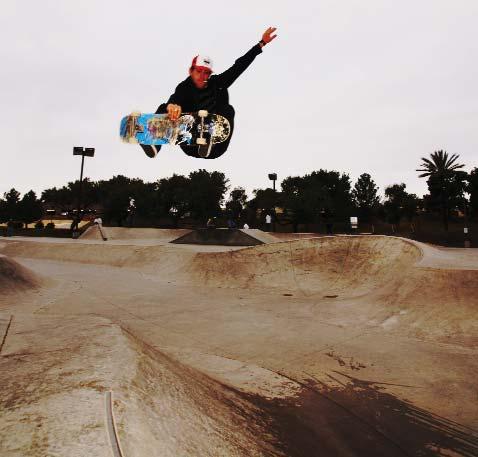

Dear Mom,
It’s a bit ironic how this area is called the “cradle of civilization”yetdeathcanbearoundanycorner.Ihavebeen inIraqnowforjustshortoftwomonths.Inthisshorttime I’ve seen things in person that I usually see on TV back home.I’vedriventheroadsofIraq,wavedtothechildren ofIraq,flewintheskies,walkedinasandstorm,slepton thegroundandeventastedthesoftdirtofIraqasitblows softlyamongstus.Thedaysaregrowingincreasinglyhot. I’veheardthatthetemperatureswillsoonreach125degreesgiveortakeafewdegrees.AtthatpointIdon’tthink I’ll be counting. We are all doing very well. Food is very plentifulanddelicious.InmycurrentlocationIgettheoccasional TV channel and internet access. My Marines aresmart,trainedandmotivated.Theseyoungmenand women are focused and proud, excited and truly feel a senseofpurpose.Myhatisofftothem.ImissSusanand the kids terribly. Being a 42 year old man in the desert with out his family can be hard at times. I know Susan doesgreatwiththembuttheystillneedtheirDaddyand Ineedthemmorethenever.WhenIallowmyselftostop long enough and fall into one of their pictures I get teary eyed. I’m so in love with all three of them, they are healthy,beautifulandhappy.Notsurehowwepulledthat one off but I’m oh so thankful for them.
SPRING 2008 CONCRETE WAVE 37
Bobby
Russel
Speaking of thankful, I’m also very thankful for my crazy little freestyle skateboard. I mailed two complete FS decks to myself before I departed the states. I have found a place to skate twice so far and had so much fun. It’s very strange for me to skate out here. First off it’s hard to find cement; secondly it’s even more difficult to find cement with no people in the area! If I skate around people it would cause a commotion and I feel I would end up getting reprimanded. This area is very focused on what we do as service members. I’m on a big, protected base and some people do play basket ball, volley ball and ride bikes to get around. There are gyms, library’s and even the occasional aerobics class! All of these activities are meant to keep the military members healthy and somewhat relaxed. The problem for me is that skateboarding is what does this for me. It energizes me, relaxes me, stimulates me and also keeps me very healthy both mentally and physically. The few times I did skate I felt very sneaky, which I didn’t like. However, I am driven to ride again. Even though I’m a responsible Marine serving with integrity and honor I still have the need to skate. It simply soothes my soul and gets my head straight. Prior to skating I took a few days of scouting the local area as I walk to and from various locations, simply looking for a private place to practice my tricks. Picture this, dirt, dirt and more dirt for miles and then a few temporary buildings with people going about there business. There may or may not be any cement in the areas with buildings. Once I had a place in mind that looked protected from the personnel walking around I tried it. I went there right before sunset and had all my skate gear in a gym bag. The place I discovered had a small area of cement and was surrounded by a dirt berm and a couple large boxes. I had an amazing session with this little FS deck and even got a few great pictures of myself skating in Iraq. I used a timer and a tripod.
Anyway, there is my dilemma. I want to skate on my exercise time but simply don’t think it’s appropriate in this area and may be perceived as a man with a toy or a man not focused on the mission? Maybe I worry too much about it? All I know is that I am the only person out here with a skateboard for hundreds of miles believe me, if not thousands of miles. A few days ago I started a new job, I’m in a new location and once again I secretly search for cement. So, this is my life now, let me know how you are and what you have been up too. I love you mom, don’t worry about us in Iraq. Thanks for sending the care box, those cookies, magazines and Easter card from home means a lot!
Love your son
Keith
BUSTED FOR BOMBING HILLS? WHAT YOU NEED TO KNOW…
By Chris Cunio
So you’re cruising down a hill, wind in your face, when suddenly the blue lights start flashing behind you, sirens blaring, and a stern, low voice over the loudspeaker tells you to pull your vehicle over to the side of the road. You frantically search for your li-
fraction” classification, which treats skateboarding no-no’s like minor traffic violations.
cense and registration before realizing: hey, wait, this isn’t a car…it’s a skateboard. What the hell!
I bet you never considered that weaving back and forth at high speeds down a steep concrete slope filled with cars, small children and other obstacles could be illegal. Yes, it’s true (no matter how many times we try to tell ourselves it isn’t), there are laws governing skateboarding. What are we, bikers? Surely we’re not cars either. And yet, under the guise of public safety, the local authorities have deemed it proper to tell us where, when and how fast we can skate. Cities are whittling down legal skating areas to the point where one must be quite resourceful in finding a suitable place to carve. In some cities, like San Diego, skateboarders are banned from all public roadways. Don’t worry, though, you can still carve on the itty-bitty sidewalks, but only between sunrise and sunset, and in no case inside the business district, unless you want to go straight to jail (without passing GO and collecting your $200). What else to avoid in San Diego? School property, beachfront walkways, parks, bridges, sports facilities and just about anywhere else you might have fun. Of course, if you’re seeking lightning-fast speeds up to 10 miles per hour and terrifying grades of less than 3 percent, you should go to Los Angeles, where the local ordinance prohibits all but essentially “bunny hill” activities.
While these laws certainly seem harsh, it is comforting to know that not every city is so “anti-skateboard.” For example, in Annapolis, Maryland, skateboarders are generally allowed to go where they please, as long as they don’t skate recklessly or jeopardize the life, safety or property or nearby pedestrians, drivers, innocent bystanders or anyone else who happens to be around. That seems reasonable. Oddly, however, Annapolis is one of the few cities that classifies a violation of skateboarding laws as a misdemeanor, instead of the less serious “in-
Which brings us to the next topic: penalties. What kind of hard time are you looking at if you do get “pulled over?” In most cases, skating on “forbidden” public property in violation of a local skating ordinance carries a fine ranging from about $25 up to $100 or $200, depending on the nature of your offense and how many times you committed it. (Some people never learn…) Solution? Find a nice private road, outside the jurisdiction of the city’s code. Not so fast. Ever hear of trespassing? Want to be labeled a criminal? Generally, under most states’ criminal trespass statutes, it is a crime to skate on private property when (1) you know you’re not supposed to be there (see e.g., fences, signs, verbal warnings), or (2) when you decide to stay after the owner has told you to leave. Criminal trespass comes in several flavors, including first-degree, second-degree and third-degree, is generally treated as a misdemeanor, and can carry jail time and heavy fines, regardless of how sweet the terrain is.
So how do you hit the streets without being hit by fines (and jail sentences)? (1) Know the local skateboarding ordinance for the area you’re skating in. Most city and county ordinances are available to the public online. Search “[your city here] municipal ordinance.” The ordinance should identify any illegal skateboarding areas. Stay away from them. (2) Beware of signs. “No Skateboarding” and “No Trespassing” signs are a skater’s worst enemy. They are there for a reason. Obey them. (3) When you’re out bombing hills, be aware of who and what is around you. Don’t crash into it. With luck, you will avoid the flashing blue lights.
Chris Cunio is an avid skater and a partner at Cooley Manion Jones in Boston. If you’ve got skate-related legal issues, contact the mag.
CORRECTIONS
•The photo of the Trashmore ramp incorrectly identified Glenn Gutierrez. We apologize for the confusion.

•The Galit Skatepark in Tel Aviv was initiated by landscape architect Izak Hail and associate Zvika Kanonich of Kav-Banof Landscape Architecture Ltd. It was designed by pro skater Avi Luzia with the supervision of chief architect Rakefet Spielberg.
•You can contact Bob Stack of Paved Wave Promotions (Florida) at 786-229-7336.
•Kevin Carmody’s email is kevinc@kevincarmodyart.com
38 CONCRETE WAVE SPRING 2008
NOTEWORTHY PRODUCTS, PEOPLE, EVENTS



SPRING 2008 CONCRETE WAVE 39
TRY BEFORE YOU BUY
I enjoyed surfing through your websites and I wondered where can I find a copy of Concrete Wave to preview before I subscribe? I am trying to find a magazine for myself but mostly want to get it for my 8-year old son. With that said, as a parent I am trying to avoid any media (mags and DVDs) that have as many expletives as nouns and verbs. This endeavor has proven to be a bit of a challenge, especially with skateboarding DVDs. Hopefully your magazine will prove to be a refreshing change from the norm and I’d appreciate it if you could point me in the direction of a dealer in the Tacoma, WA, area where I could purchase a copy prior to subscribing.
Regards,
Don J.
(Back issues are going to be available at silverfishlongboarding.com – Ed)



MAGNIFYING THE SITUATION
Just a note of thanks. As a 40-something longboarder, it’s nice not to have to grab a magnifier for your magazine. Keep up the great work. All of you there are connecting all generations.
Mark P., New Castle, DE.
(Mark, you might be missing the Fine Print. If so, I suggest a visit to your local optician – Ed.)
CRISIS AVERTED
I quit skating 29 years ago after a potentially lifeending slam. For all this time something’s been missing in my life. The mid-life crisis was
kicking me like Jackie Chan, so with the help of some old friends I started to skate a little bit again a few months back. Just trying to find a board that reminded me of what I used to ride. There were no ‘concave’ boards in ‘78. Anyway, thanks for giving us 40-plus year olds a magazine that speaks to us. You guys rock.
Sid B.
PIONEER DAYS
I agree with the general consensus that the skateboard evolved out of homebuilt scooters, and thought that you might enjoy my own story. In about 1959 I lived on a military base in North Carolina. One of my friends found an old book, perhaps published by the Boy Scouts in the 1930s, that had been his dad’s. It had lots of projects for boys to build, and one of them was a wooden scooter made from a disassembled “key skate” and 2x4s. It would have looked like a Flintstones’ version of the more modern Razor Scooter. My friends and I got the wheels on securely, but didn’t brace the vertical piece that the handlebar attached to. It wasn’t at all secure and we soon just ripped it off. We learned to ride it as it was, down a hill, but also holding onto a bicycle and being towed down the road. Fortunately, we did not have any hills that were too long or steep—otherwise we would have probably gotten hurt more than a couple of “strawberries.” It was fast and very bumpy. Our feet and legs would get tingly after a few rides. I was already an avid water skier then, and found it pretty easy to learn to ride the thing. In the summer of 1960, my dad was transferred to Hawaii.
Soon after we got there I built another copy of just the one board with the skate trucks attached. It was built more solidly than the original. Although I got plenty of chance to water ski on weekends, I used my “roller ski” around the neighborhood — where there were much bigger hills and (fortunately) fairly smooth road surfaces. I even got away with taking it to Jr. High School, where I’d ride it between classes (and in one class, one time, resulting in confiscation until the end of the day). Early on, I never saw anyone else in Hawaii with one, although some of the kids who saw mine tried to ride it and later built their own. The kids that I went to school with were almost all surfers (Kailua High School Surfriders, after all), and were pretty tuned in with what was going on in the sport in California (through Surfer magazine and some of the independent filmmakers showings of surfing), but I don’t recall any mention at all of skateboards at that point. Life’s funny some-
times. I wonder how many of the local skate rats would believe me if I, an old, fat, balding guy, told them that I was one of the pioneers of their sport. Cheers!
 Bill R.
Bill R.
FIRE IN THE HOLE!
I work for the Fire Dept here in Austin, Texas and even the guys who don’t skate like to read your magazine. They keep asking if the new one came yet.
Chris S.
ENVIRONMENTAL OR JUST MENTAL? letter of the month


As I read the article on how skate companies are deciding to go “green” a few thoughts came to mind. I am a big supporter of being a good “steward” of our planet. I do what I can to recycle, and not waste resources. I drive a very fuel-efficient car, etc. I think an issue that needs to be addressed by the skateboard community is that of litter, and graffiti. At our local parks, (we are blessed to have five fairly new, fairly well equipped parks in our area) there a very clear posted signs that say “no smoking” and “do not litter”, and yet it never fails that some kid, or even adult will blow smoke in everyone’s face, and then throw the “butt” on the ground for the rest of us to skate or even fall on. A few of the kids at our local parks “trash” the place on a regular basis, leaving behind “butts”, bottles, broken decks, and even torn clothing. I have even seen used condoms left on the scene. And while I know that graffiti is and has long been a sort of “tribal thing” to locals, I think that in this age of greater awareness, it is out of style and out of place. Now that I have kids, I am more aware of the graffiti as I have to explain some of the words to my 8 year old, as she reads it. I know for a fact that in our area if it continues, they will close the park all together. The boro have already given up on keeping it clean, or even patrolling it to enforce the rules. Once they stop maintaining it, it is only a short ride to condemning it because it is no longer “safe.” So please lets encourage everyone, lets not ruin this new “wave” for skateboarding with the same old bullsh*t. I love that the skate co’s are making an effort for less global impact on the planet, but let’s not forget our own parks, streets and beaches.
James, Denver, PA
40 CONCRETE WAVE SPRING 2008
Andy Adams
LETTER OF THE MONTH RECEIVES A PRIZE PACK FROM
Photo: Mike Goetz
The Charger, a truck better engineered for your carving needs. Race geometry coming soon. go to www.gullingtruckco.com for more details or call 858. 408.0083












Put down the magazine and Go Skate! When you get back, read the rest of this.

How’s your local skate scene? Drop into the forums on the ‘Fish to recruit new skaters for your crew, find races, events and more! If you’ve got what it takes to go fast, then you already know about the Maryhill Festival of Speed – the 15-minute long, DVD QUALITY VIDEO by Orangefiist of the ’07 Fest is a free download, along with literally hundreds of skateboard videos of all kinds. If you haven’t got the stoke, we’ll give it to you!
Everybody wants to know who’s got the fastest bearing, which wheel shreds pool best, whose deck keeps its pop and which truck comes in what width, etc If you’re looking for specs and reviews by other skaters, then you’re looking for the Silverfish PRODUCT REVIEWS PAGES. Every product in the current CW Buyers’ Guides, plus thousands more from years past: photos, specs, descriptions and your reviews. Skated it? Hated it? Ripped with it? Post about it and help other skaters find what’s gonna be right for them.









If you’re looking for killer PDF’s of magazines, articles and more, log in at the ‘Fish. You’ll find current Concrete Wave mag articles, the entire collection of Inter-National Longboarder and now, The Legacy of Warren Bolster – a collection of core skate photos like you’ve never seen, taken by the man that defined skate photography. All this is online now, only at Silverfish!



If ya ain’t skatin’ fast enough to need a helmet, put on your lid and skate harder! Fear about yer hairdo is for toeflippers (not that there’s anything wrong with that, heck we like shoes), so get out there and rip!



SPRING 2008 CONCRETE WAVE 43
THE REALITY OF OF “LIVIN FREE”
By Michael Brooke
As a magazine publisher, a number of skate videos cross my desk each year. While each one has a unique quality, I had a sense there was something truly special about “Livin Free.” Little did I realize, when I started to investigate the story behind this video, that it would turn into a four-page story. While “Livin Free” is on its way to becoming a hit in the longboarding world, the story behind the film turns out to be just as intriguing. Turns out that reality doesn’t bite after all.
“Livin Free” is a documentary that follows
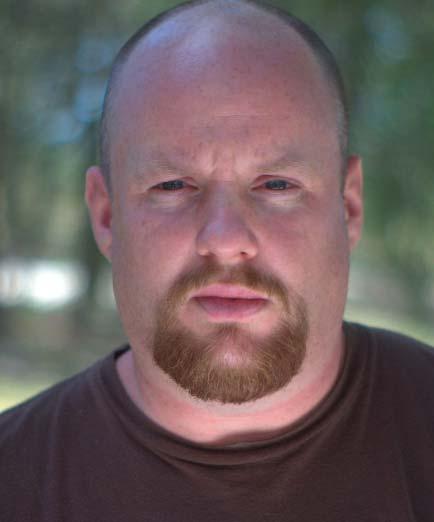
the adventures of four skaters: Marc McCrudden, Bryan Heffron, Thom Mayer and Jason Clayton. The documentary is an intimate profile of a skateboard road trip. We witness a wide range of events, from moments of triumph to sad little encounters with locals. The scene in which one of the skaters gets spat upon is extraordinary. But “Livin Free” is an unusual skate film — it doesn’t contain footage of huge rail slides or people screaming down hills at 50 mph. In its own quiet way, it just simply celebrates the joy of skateboarding.
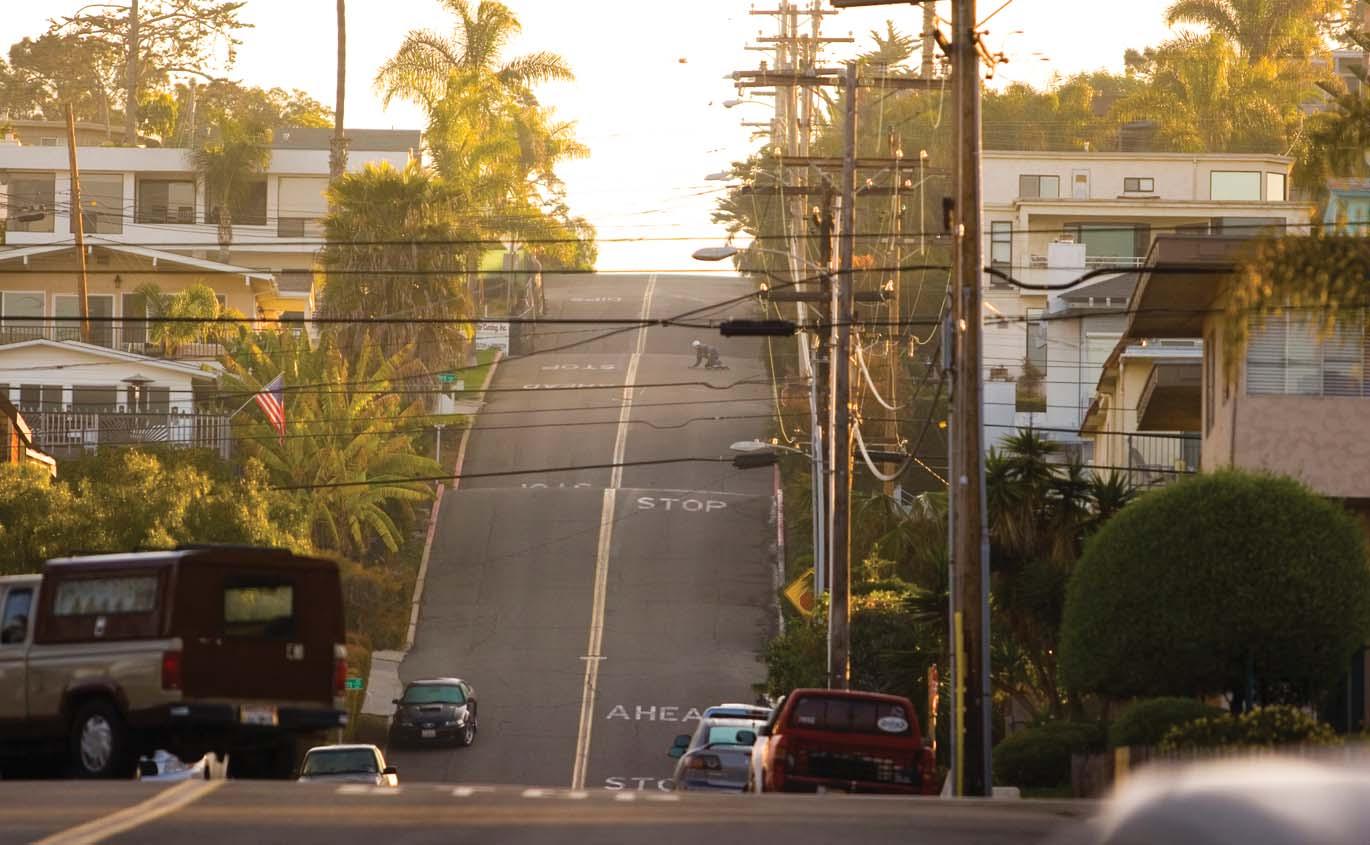
44 CONCRETE WAVE SPRING 2008
Bryan Heffron – from non-skater to believer
Photo: Andrew Bielicki
Marc McCrudden at Cardiff by the Sea
Photo: Christine McCrudden
The first question I had about the film was the name of the production company. It’s called “OrangeFiist.” No, that’s not a typo. The question is why. For that I turned to Marc, one of the film‘s creators. “Orangefiist, pronounced ‘orange-feast’, is an original word that I created back when I was painting in the late ‘90s. To me the word describes the core parts needed to generate something unique or original in the world.” The way Marc sees it, “Orange” represents “creativity or color, the thought in your head to do something or create what you envision — the idea that feels so right when you have it.” The word “Fiist” represents the combination of the determination necessary to bring any idea to life and the truth that ideas, which begin in the mind, are made real through the use of human hands. The fist in the company’s logo represents the power of individual and collective will. Although Marc never corrects anyone who says “orangefist,” he admits it’s confusing. “The pronunciation, ‘feast,‘ is about the celebration you feel inside as what you set out to do is realized. The use of ‘orangefiist’ as a term is not something I have ever experienced, nor do I say it myself. To me it’s a reminder to be creative.”


Marc is aware that for some this may all seem overly “arty,” but he has always trusted that people will identify with the feelings he has during the process of idea, execution, realization and all the challenges to overcome along the way. “There’s a line from the surf movie ‘Blue Horizon‘ that Dave Rastovich‘s dad says, which parallels what I see in Orangefiist. The father says, ‘If you think in your mind that you can do something, and you feel in your heart that it’s possible, then the only thing left is to do it.’”
All the creators of “Livin Free” have a background in media — specifically reality TV. I asked Bryan and Marc what it was about working in that environment that led to the creation of “Livin Free.”








“I moved to LA from Chicago in December of 2002,” explains Bryan. “I started as a production assistant with a car with a slipping transmission, while performing in a sketch comedy show on the weekends.” He had decided before his move to try to break into the business side of television production, hoping to use that knowledge and networking as a transition in front of the lens. “My first day of work as a PA was for the Home Shopping Network, moving 50 grand worth of high-end borrowed furniture from the studio to various chi-chi furniture shops in LA, in a monsoon rainstorm. I was grateful for the work, as I was
facing a large repair bill for my transmission and was staying with friends, doing the famous LA couch tour.”
The day of work turned into a few days of work. The connections Bryan made from that experience led to spotty work on an MTV show, and finally to “Oblivious,” a hiddencamera game show where he met Marc and Jason. “Jason and I were both PA’s, and Marc was on one of his first camera-operator gigs. Jason and I hit off from the start, and I slowly got to know Marc,” Bryan said. The trio worked the entire season, and Bryan even managed to appear on camera. After this, Bryan was involved with a show that also included Marc as a camera operator, along with Jason, who had moved up into the position of camera assistant. “Thom, who I met on this show, was an audio guy,” recalls Bryan. “We had a perfect production team — though we had no plans for this — and a few guys to hang with on this seven-week adventure.”
As explained in documentary, Thom had just revived his skate lust before leaving on the trip and had brought his board. This motivated Jason and Marc to buy boards. As Bryan confessed, “Television, reality TV in particular, can be tedious, and calls for LONG hours. We try to make something that is inherently produced look spontaneous while following a pre-conceived format, to guarantee you have something of a story when you return to LA.” The guys started skating in the pre/post shift hours. “Due to the demand for me to appear on camera in between my duties, the producers transferred some of my pre/post duties, freeing me up to hang with the boys. I had never even thought of stepping on a skateboard before this trip,” Bryan said.
Thom had brought his own mini camera rig
on the trip in hopes of renting it out to the show on shoot days. They brought this camera along on their early skate trips and would replay the footage nightly in the hotel. Thom had also brought a copy of “Dogtown and Z Boys” along on the trip, which Bryan viewed in awe. “As I watched the footage from Jason‘s kamikaze run in Boston, we started to realize this footage was more interesting than the material we were being paid to shoot which was having a few hundred of thousand dollars spent on it.”
Together, the guys decided to shoot all that they could. Bryan volunteered as the camera guy as he was shooting on the show and loved learning even more. He was also the only one not skating, although you can see his first attempt in the film. “I got on the board in the skatepark for the first time in Cleveland, after a brief tutorial in a Days Inn parking lot. I attempted the now laughable cement berm at the skate park.” Looking back, Bryan says he resembles an elephant on a stool. “I was so nervous, but this was the start of my long courtship with a board with wheels. The group continued to shoot and only tried to structure events so we could have a kick ass personal video.”
Marc has a background in documentaries and says he feeds off their authenticity: “You simply can’t fake the footage or reactions people have.” So while reality TV might not be that real, the exciting part for the gang was simply the change of subject matter.
“Everyday we worked on that reality show we went from capturing 12 hours of content none of us cared about or identified with to capturing a few hours of ourselves rekindling all of our childhood passion for skateboarding,” Marc said. It became an addiction.
“We constantly sought out the next opportunity to steal away from work and shoot each other bombing the hill around the corner. When we were off for a whole day and went to skate and shoot, that was what made all the other work palatable.” In the end, though, Marc is thankful for the opportunities that reality TV provided them. “Thanks to reality TV, we were able to be in all those incredible locations and situations. We then have to thank
SPRING 2008 CONCRETE WAVE 45
Marc McCrudden in the editing suite. Photo: Oliver DeFilippo
ourselves for seizing those opportunities and trying to make something completely fresh to put out into the world.” Ironically, by working in the “semi-reality” world of reality television, a real production was birthed, giving a whole new definition to the word “survivor.”
Upon Bryan’s return to LA, he landed a few other gigs with reality shows and worked on a Ralph Nader documentary. This led to him joining up with Thom in Venice. At this point, due to the lavish food provided by Hollywood catering companies, Byran’s weight had begun to reach a crisis point. “I began walking miles, a la Forest Gump, and skating with Thom literally holding my hand, improving each time.” Thom had bumped into Neil Stratton of Carver on a street corner in Venice. “I fell in love with the control/challenge Carver provided. I paid the blood tax in full, and after months of pain and joy, my talent began to emerge. I made skating my top priority.” Bryan says he sacrificed money and eventually his car to pursue his passion. “I lived to skate in my tiny Venice studio apartment. Eventually, over the next year skating two to three times a day, four to six days a week, Bryan lost more than 90 pounds. “I was skating 40-60 miles a week and biking dozens of miles as well,” he said. After a few near-death experiences, Bryan started wearing pads and a helmet. “I realized each injury meant days or potentially weeks of not skating.”
Although Bryan has gained back a little bit of the weight he lost, he is at peace with himself. “I have decided to focus on the joy I feel when I am in the wind carving, and [on] the 80 pounds skating has carved from my body.” He
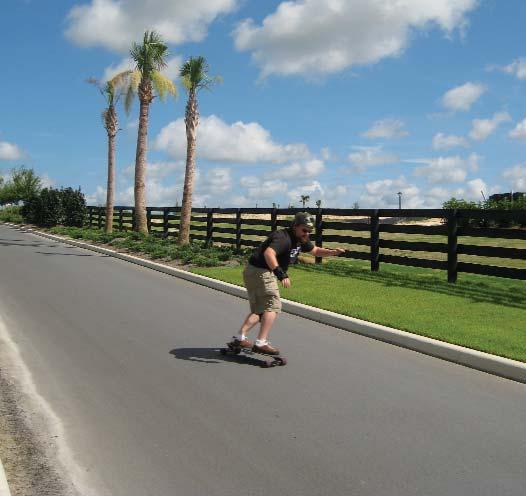
plans on transitioning in two areas of his life: skateboarding and work: “I want to start skating in skateparks, and I hope to transition from production into a more normal life that includes performing/creating.”

Giving birth to “Livin Free” was not an easy task. As Bryan explains, there were several “Behind the Music”-style meetings and heated debates. “What emerged from these discussions was Marc being incredibly mature and humble and handing our baby over to his wife, Christine, for a recut.” Bryan believes that the newly cut film kept a similar style to the first cut but now told the story in a much better way. “What was unique about us was the way we came together, what we took away and how it shaped our lives to different degrees. To me that is the definition of soul, what you learn on the road of life.”
When I asked Marc about the soulfulness that “Livin Free” seems to ooze, he was pretty humble. “It isn’t always easy to tell a story without needing to connect certain dots. At one point during editing I wrote some lines for Jason to record for voiceover, lines that set up what happened after the cross-country trip ended. It was the worst thing ever trying to make that work in the film. So hopefully, part of the reason the film oozes soul is because it contains practically no intentional or set-up content.” As Marc states, “We didn’t have a cor-
for people to ingest and digest.”
Marc has some choice words for entertainment executives who assume the general public is stupid. “Communication is a tool far more powerful than a weapon. I think it’s a sad, pathetic, and assumptive perspective from which so many people responsible for what makes air in the media work.” Marc points to how skateboarding’s image is perpetuated in the media. “It’s so boring and unreal to me, the idea that the kid holding a piece of wood with four wheels has an attitude.”
Marc recounted a story that happened to him recently that reflects his concerns about stereotypes. As he was cruising on his longboard in a park near his house, a park ranger spotted him. “He came barreling through the park, across the grass, onto the basketball court, jumping curbs in his one-ton truck to speak to me.” Marc stopped and waited for the ranger to reach him. “I watched each of his ridiculous and unsafe choices in navigation.” The ranger asked Marc if he knew how much the ticket was for skateboarding in the park. Marc replied, “No.” The ranger said “$360.” “I said, ‘Wow!‘ He asked how old I was, and I said 34. The ranger replied ‘Wow,’ and just drove away.” To Marc, “The skateboard in my hand automatically removes our ability to have a conversation about anything, much less the ranger’s choice to off-road it through a park where kids were playing, and that’s just weird to me.”
poration looking over our shoulders trying to guarantee that our film would perpetuate lame and useless stereotypes or push some elitist agendas in an effort to be cool.” What you get with the film is a group of guys out enjoying their freedom for what it is. “We aren’t trying to pretend that hypocrisy, hate, and mediocrity in this consumer society of ours don’t exist, so we’ll rush out some fluffy skate-porn video. It was necessary for each of us to call things like we see them. It’s important to try to open up people‘s minds with healthy, inclusive perspective if you’re going to put something out there
There are plans for “Livin Free Part 2,” but until that time one item has emerged on the radar: their documentary about the Maryhill Festival of Speed. Before “Livin Free” was premiered at the Maryhill Festival last September, Marc had been speaking with promoter, John Ozman, about shooting while they were there. At the time Marc was completely new to the downhill race scene, and his only memories were from when the sport was covered in the Gravity Games years ago. “I remember the event being well shot and really cool.” Ozman introduced Marc to a bunch of the top riders, and he did interviews with many of them to get a sense of where the sport is today. “I wanted to know, and I figured this was a good approach.” Over the five days the crew shot as much skating as they could. “It was a magical week for us, and I hope that the video gets people stoked on the sport and make this year‘s Maryhill event a huge success. We’re definitely coming back this year, and hopefully Thom and Bryan will make it up as well.”
For more info on the adventures of the reality crew, and to see a preview of their films, visit orangefiist.com.
46 CONCRETE WAVE SPRING 2008
Bryan in The Villages, Fl
Photo: Andrew Bielecki
Marc practices the art of “livin free”
Photo: Christine McCrudden
PRODUCTS Review




PAIN CHEATERS
Kevin Day, the guy who runs Pain Cheaters, is a long time skater who has one goal in mind: creating excellent custom knee pads. In keeping with the idea of customization (see the story in this issue) Pain Cheaters kneepads are made according to your measurements. This customized fit may mean that you spend more, but the comfort and quality are definitely worth that extra investment. The pads feature 3/16” caps that are replaceable. The shock absorbing foam really adds to the “beefiness” of the pads. What really stands out is the seam work. The seams are double stitched and overall look and feel of the pads is one of immense durability. The pads are also very easy to adjust. As their websites states, “the outside fabric color choice is black and blue, so you don’t have to be.” For more info, or to order up a set for yourself, visit paincheaters.com.


LOADED DERVISH/ TRACKER FASTRACKS/ ABEC 11 FISHBALLS
Thousands of longboarders search the internet forums looking for opinions on what constitutes a truly amazing setup. This is the kind of setup that just screams “behold a carving machine!” We decided to put together a complete consisting of the three companies you see listed here. While the debate will continue to rage as to what the greatest longboard setup is, the truth is that this is one complete we thoroughly love. The drop-thru Dervish features a low center of gravity along with a fairly stiff feel. The deck has a very responsive character and was simply a joy to ride. Loaded offers two choices of flex – flex 1 is for riders from 170 to 230lbs and flex 2 is for riders under 180 lbs. Tracker’s latest truck took over a year to develop and features an oversized, high rebound upper and lower bushing. These bushings give the trucks a good amount of stability at high speeds, but we found them to be quite responsive as well. Note that the Fastracks will accept regular bushings as well. Another unique feature is that the backside of the hanger has considerable aluminum ribbing, which increases the overall strength of the truck. Completing our setup up were a set of Abec 11 Fishballs. These wheels are super rare (and were offered for sale exclusively through silverfishlongboading). They are based on the Powerball (produced under Abec 11’s sister brand, Pink) and are 72mm with an 80A durometer. We found them to be a superb combination of speed and grip. If you can’t find them, you can still enjoy the many different wheels that Chris Chaput has developed over at sk8trip.com. Also make sure to visit loadedboards.com and trackertrucks.com.

SPRING 2008 CONCRETE WAVE 47
SPEEDBOARDER OF THE YEAR: NICOLAS DESMARAIS

 By Jon Caften
By Jon Caften
in all the years the editors of CW have been choosing a Speedboarder of the Year, this time was undoubtedly the most difficult. I think in fairness to the talent pool we should at least talk about the shortlist before getting into Niko’s interview. Kevin Reimer knocked JimZ off of the Sully podium, took the world’s unofficial speed record and got a second victory at Teutonia in Brazil. Nate Lang seems to stand on every podium out there including the coveted Danger Bay first prize, Erik Lundberg who ended up the IGSA champion for 2007 plus took Montreal was quoted by John Rogers this last summer as being the fastest guy he’s ever seen at the legendary Dump Road in the Los Angeles outskirts, and the green haired Scoot blew everyone’s mind with his consistent podium placing and walked away with Chaput’s cash at Maryhill. One thing that stands out about these other four dudes who were also pegged for the potential Speedboarder of the Year is that they are young, they’ve got many years of this ahead of them and I’d put money on it that barring some miracle outsider blowing onto the scene one of them will be gracing these pages in 12 months time.
Niko Desmarais, is not an outsider who’s just blown in. For the last six years he has been gradually working his way up the ranks and getting more and more solid with each passing day. He’s always taken it seriously and he’s a very interesting character. While many downhillers are ex-street skaters, Niko comes from the school of racing. He took up speedboarding without ever ollieing one set of stairs or dropping into one mini ramp. In the last year he won practically every race he entered with two exceptions. Montreal’s Top Challenge, where he choked himself and wound up fourth for the second year in a row. He probably screwed up by hearing the throngs of Montrealers chanting his name as he rounded the final corner. At Maryhill, he didn’t even make the finals but still won the equally full of talent consolation round. Rumor circulated that Niko had a decent lead in the semi-finals, he had won every heat leading up to it but his teammate and Speedparts sponsor JimZ was on his tail. Niko knew Jim was with him and wanted to make sure he made the finals too so he left a little extra room so Jim wouldn’t have to scrub off too much speed and Niko buggered up and hit the bails.
48 CONCRETE WAVE SPRING 2008
Niko in the lead followed by Tom Edstrand, Noah Sakamoto and Mischo Erban
Photo : Jon Huey

SPRING 2008 CONCRETE WAVE 49
Niko is one of those guys who clearly understands the concept of being a team player in such an individual sport and he’s impressed this upon many sponsors. He is one of the few pro speedboarders who’s not only winning cash at races and getting board royalties, he has a list of non-skate related companies also giving him a pay check and photo pay incentives. He’s paving the way for the four guys I mentioned above and all those to follow to genuinely make a living at downhill skateboarding if they follow Niko’s hard work ethic.
Not only did Niko win a swath of races this year, he produced two amazing video parts, one with Switzerland’s master of all things gravity Yvon Labarthe and his film Voyage au Quebec which was touted by many as the best speedboarding film of the year, and the second in High Definition broadcast on the show Tribal on RDS which is the French arm of ESPN/TSN programming in Canada. Niko started a mentoring program to help young skaters to ride faster and better and he’s having a run at making the Olympics in snowboarding. A very productive 12 months indeed for Concrete Wave’s Speedboarder of the year: Niko Desmarais.
Niko or Nico, and why?

Niko! It started at Danger Bay IV, one of my first big races. Bricin wrote it like that on the starting list and I thought it was a cool way to write my name, so it stuck.
You’ve had one hell of podium run over the last few years, did you always know you could start winning or were you surprised when it started to happen?
I’ve always wanted to win. So I tried and at my second year racing, it worked and I won Madison Country Gravity Fest. I was so stoked that day; I got to be on the podium with my friends and teammates JF Boily and Ian Comishin. We partied all night with the Munnsville community and called sick for work the next morning. I remember driving back to the campground bonfire while Kludy was riding on the hood of my car and calling me an “asshole”, I shot windshield washer at him. Hahaha! In anything, you have to put effort and time to achieve your goal. Soon or later, it will pay off!
Before riding a longboard, I was a downhill mountain biker. I did a couple of races and had pretty good results when I didn’t break the bike. But mountain bike racing is a very expensive sport. Switching to longboarding is surely the best decision I’ve ever made. Now, I race in snowboardcross during winter and I am starting

to do fairly well there as well. Racing in Vancouver 2010 would be INSANE... I am putting a lot of energy to do it.
Are you really in the running for making the Olympic team for snowboarding?
Right now, I am amongst the top riders in Quebec, but I am not on top of the list for the National Team. Currently, I am in Banff, Alberta for two weeks, training for the National Championship that will be held on Cypress Hill, Vancouver. This event will be pretty big, they will test the Olympic race track. So many people are supposedly coming; Canada, France, Italy, USA and Japan are sending their national teams to come to test the track. So, it’s a nice opportunity for me to race them all.
To shoulder to shoulder racing on skate and snow you’re kind of like what Shaun White is to vert skate and snow. Alongside of incredible race results you threw down two very impressive video parts this year, what do you like better, racing or filming?
Racing for sure! I focus more on races than looking nice in front of a camera. I did have an awesome time filming with Yvon Labarthe this summer. He is an incredible cameraman and movie maker. He stayed for a week at my place after Top Challenge and I think we filmed almost every day. Filming with him was a bit scary, driving or riding within six feet from the car wasn’t something I really enjoyed doing. On one run, we topped our speed out at 100km/h following right behind the car when another car came out of a driveway onto our route. Our
driver had to stomp on the binders and Yvon hit our car pretty hard. Fortunately, he was okay. The movie came out really nice. Go check all his movies on his website yvonvite.ch
You’ve traveled to races all over the place but most of them are in English parts of the world, do you ever feel like you’re the only French speaker around? Do people still let you party with them even if you don’t quite understand each other?
What? I’m not that bad in English! (Laughing)
You know what I mean Niko, North America has a population of more than 300 million people speaking English and only about 5 million who grow up in French homes and go to French school. It’s a very unique culture that so few know about. Do you ever encounter ignorance or get treated poorly just because they don’t understand you as well?
I really don’t see any language, nationality or religion barrier. In speedboarding we are all about the skateboard, we all want to have a rush of adrenaline, we all want to meet people that share the same passion and this is what regroups us. The international longboard community is getting so big with the internet. You make friends all over the world and skate together and we all get along great. You don’t see bad stuff at all, we’re all family.
Talk about your backyard and riding with J.F. Boily, Freddy Desjardins, Claude-Éric and now your crazy roommate, A.J. Powell.
I had an awesome summer. We were a small
50 CONCRETE WAVE SPRING 2008
Niko charges at the Paskapoo race in Alberta
Photo: Jon Huey
tight crew and we rode almost every day. I was lucky, my roommate at time, Aline, enjoyed driving us up the hills. I lived on a beautiful lake in the mountains and we could all just jump in the water it after a day of riding. Fast Fred D [Desjardins] was the hill seeker. He always wants us to try THE new and better hill he just found and he found some really good stuff. Claude-Eric [Charboneau] is the big motivator; he wanted to skate more often than everyone else. J.F. and me were like Rocky and Mikey, he always pushes me to get faster and faster.
One of my summer’s favorite freeride memories was ripping the Westmont corners side by side so fast with him, Rookie and Dwayne [Pereto]. My current roommate AJ and I are so far more snowboard partners than skate partners. He had a broken ankle last summer so he didn’t skate too much, but watch out for him next summer; he is hungry for some big standup sliding.
How do you feel about the army of kids from B.C. like Nate Lang, Max Erwin, Kevin Reimer and Scoot just to name a few? We’re all so lucky having them in this scene. They push the sport to the limits. They make a strong Canadian army that can podium our country at every race. I like being on the starting line with those guys, they are the best in the world. When you race with them, the adrenaline is at a peak, anything could happen, different strategies, lines, skill set… these days the bets are always on different names. This is good racing! I feel like I have to train more next summer because those kids will continue to get faster and faster.
Does Quebec have a youth army like BC or California, or is it going to still be the old farts for a few more years? Over half your teamriders have kids, they need to get the wives’ permission to come chase you.
For sure! Quebec has its army and it is growing. More and more kids around here are getting into the sport. Pierre Gravel’s Montreal sessions and also the Quebec forum are helping the cause. The riders in Quebec are so diversified. In slalom, we have the young gun phenomenon Louis who had and incredible season. Sliders like Fabrice Gaetan are everywhere and they get more adept all the time. They all ride together doing crazy tricks. We even have footwork riders here! In downhill, we have the young Andrew Rice who will rip some ass in the very near future. Every time I check the Quebec forums I see a lot of new kids who are looking for leathers. I am stoked to see the sport growing in my province the way it is.
How do you keep all those sponsors happy?
I think I have a good attitude and I am starting to have more visibility so companies are starting to sponsor me. I am racing all year long too, that helps! Recently, I just signed a major sponsor, Shark energy drink. I am super stoked, they are giving me a good hand. Finding some sponsors is not an easy job, you have to spend some time, do a good presentation and meet the good people. More, once you get it, you have to produce, give them regular feedback and good photos.
You have taken on the role of a mentor to some of the kids in your region, what’s your goal? I know that doing something charitable with your time was high on your list of priorities. My plan for the summer is to train some of the new generation of riders in the gym and on their speedboards. I already started some of them on a new weight lifting program. I would like that they progress a lot this summer and be competitive with the BC riders. It’s big goal, I know! I wanted to give back to the speedboarding community and thought a long time about taking over DRAS to grow the racing scene, but in the end I think creating this opportunity to mentor younger riders is the best way I can contribute to the well being of this sport. I realized I should go back to the skills I learned in school when I studied in kinesiology and couple that with my experience in coaching snowboarding like I did last winter with the kids from the Mont Blanc team. The best thing for this sport is better racers.
With all the companies out there why have you been loyal to KebbeK since day one?

You’ve ignored the ‘point chasing’ game when choosing your races, guys like Erik Lundberg’s sponsors will only support him to chase points, Canada has probably the strongest set of independent races but the Europeans aren’t really coming? How can we change this?
The Canadian circuit is awesome. We have a lot of riders, good spirit, great races courses, spectators, prize money… but the Europeans can race over there every weekend without taking the plane for hours on end just to get here. If we want more European riders to come here, we have to offer them something they don’t have at home, something like a professional race circuit. If all the Canadian race organizers regroup themselves and help with travel expenses and entry fees to go to the next race for the top 8, I think we can attract more overseas racers. If they can race here without spending all their money, I think they will come. That could be great!
Kebbek did so much for me, since the beginning. It all started when Pierre invited me to ride with the Kebbek team to make a promo movie. I was so stoked to ride with JimZ and Ian they were my heroes at the time. We rode the Devil’s Toy corners, I was following Ian. At that time, I did not really know how to slow down and I just passed Ian right in the inside line of the tightest hairpin apex. I was so stoked! He passed me back 30 meters after but I didn’t care. I accomplished something big that day, passing Ian hahaha! He put me on the team a week after. Since that time, I am proud to be in the KebbeK family.
Is your girlfriend ever going to make that Devil’s Toy movie? (Julie Lapointe is also a downhill skater who races at pro events)

Sure she is! Julie is a hard worker and when she has something in mind, she goes all the way to the end. Julie and her team are right now in the funding part of the project. They presented it and now they are waiting for an answer. I wish them the best.
NIKO’S 2007 RACE RESULTS:
Green Mountain Madness, Ascutney Vermont: 1st Place
MCGF 6, Munsville New York: 1st Place (third year straight)
Just for Laughs Downtown Sprint, Montreal Quebec: 1st Place
Paskapoo Downhill Rodeo, Calgary Alberta: 1st Place
Top Challenge, Montreal Quebec: 4th Place
Maryhill Festival of Speed, Goldendale Washington: 7th Place
SPRING 2008 CONCRETE WAVE 51
Descending Montreal’s famous Triple Set.
Photo: Julie Lapointe
a wave of concrete rolls over

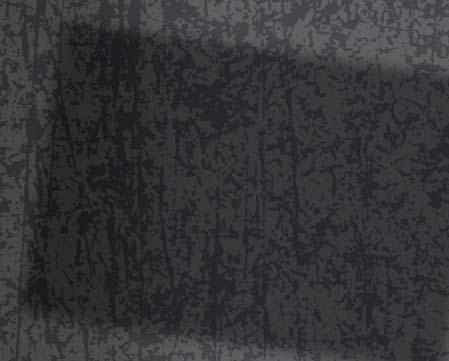



Northern Europe














 By Markus Suchanek
By Markus Suchanek
When the first skateboards appeared in Europe, in the old world, one thing was evident from the start: California is the holy land concerning skateboarding.
In disbelief we stared at the scarcely available issues of SkateBoarder Magazine, at all the wheels, boards, trucks and all the other stuff.
Against the plastic boards available in toy stores and supermarkets the Hobies, Freeformers or G&S Warptails made from wood looked like diamonds to us. When you managed to get a skateboard from an family member or friend in the States for Christmas. you were a hero in your posse and you kept staring at the board. But most fascinating of all were the photos of the skateparks at the time. They appeared to be out of this world. Skate terrain formed in concrete we didn’t even dare to dream about. And round skateable pools never seen before in real life.
Names like Cherry Hill, Big O, Apple, Upland and DelMar Skateranch were the fuel of daydreams and appeared on numerous drawings on school books. The years passed and what we saw in 1978 was a poor attempt to copy a snakerun in Munich, Germany: the famous Pfanni Hills. It was Germany’s first public skatepark, but it did not reach the examples from the magazines whose images we knew by heart.
What we had was slalom, freestyle, highjump and, occasionally, the first halfpipes without a flatbottom, giving us just a little feel of integration into skateboardmania. All the while we knew that England, France and Spain were much better at copying the examples available over the pond. We heard stories of concrete parks like Romford, Harrow or Kidderminster in England, Alcobendas in Spain and the first roadtrips happened. The boards slowly became better but real skateparks were still the stuff of our dreams.
The 80’s were not different than in the rest of the world. Vert was the keyword and halfpipes appeared where skaters came together. Slalom and jumping disciplines went away or stayed in the underground. Some really famous half pipes existed in Münster (the infamous Münster Pool and Snakerun)along with Dortmund, Konstanz and Stuttgart (as seen in Santa Cruz’s Streets of Fire). Skateboarders in Germany had the feeling of belong to the worldwide skateboardíng movement in these years.


When the Skateboard media and industry worked on the demise of vert skateboarding in the 90’s, several halfpipes

52 CONCRETE WAVE SPRING 2008
Glarnerland, Switzerland, by Bowl Const Photo: Erwin Rechsteiner
Vienna1, Austria, opening Summer 2008 by Bowl Construction Ag
Photo: Erwin Rechsteiner
Overview of new Vienna park
Photo: Roman Hackl
Hagen, Germany, by Minus Po
Photo: Axel Torschmidt
Flensburg, Germany, opening Summer 2008 by Bowl Construction Ag Photo: Erwin Rechsteiner
around here vanished. Some monuments where kept alive and still stand today like the Rheinaue vert ramp in Bonn or and our oldest and largest ramp in Karlsruhe called the Greenramp.







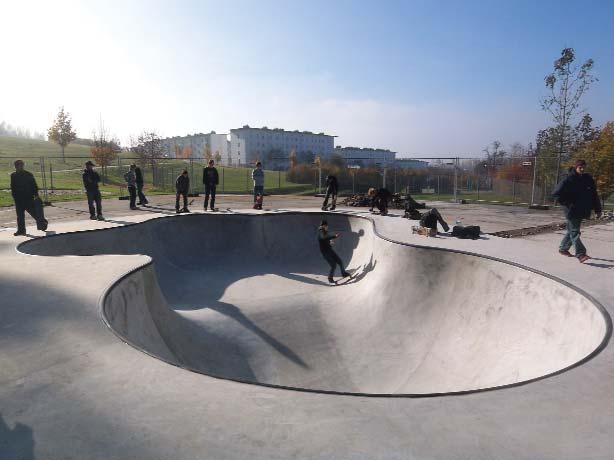

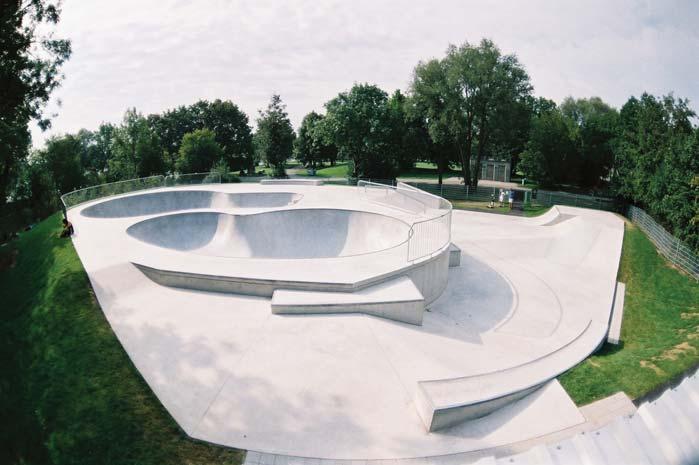
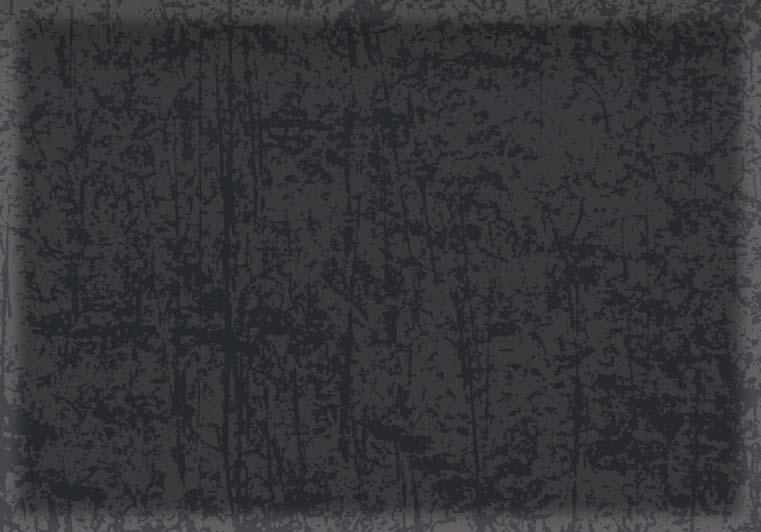
Adding to this the skaters who started it all became older. They had other focuses like jobs, family and planning for their future and they just could not comprehend the upcoming streetskating both physically and mentally. The skateboard scene was taken over by the next generation.




This was the time when companies who produced playground objects in the German speaking countries began to smell profit and took over skatepark building.



Prefabricated concrete ramp parts where sold to clueless city officials. Those “skateplaces” had nothing to do with a skatepark. One main argument for this building method was something called DIN (Deutsche Industrie Norm, something like a standard). Those companies produced their parts according to the DIN. Nobody really noticed that these companies actually created these standards together. The result were poorly built skateplaces. The skatescene did not really notice because no one was interested, because everyone skated real street.
What was even worse was the impact this had for skateboarding in the public eye. Because skateparks looked like playgrounds skateboarding was regarded in the same way. It was one of skateboardings saddest times in Germany and the surrounding countries. It was during this time that a company in Switzerland called Bowl Constructions AG made themselves known by constructing a one-of-a-kind wooden bowl in Winterthur, Switzerland.
Linz,Austria,byMinusPools


















SPRING 2008 CONCRETE WAVE 53
Hard2, Austria, by Bowl Construction Ag
truction
Photo: Erwin Rechsteiner
Ag
Sigmaringen, Germany, by Bowl Construction Ag
ools
Photo: Erwin Rechsteiner
Photo:Roman Hackl
Keyhole Skatepark, Munich, situated in beautiful greens on the banks of a lake, by Bowl Construction Ag, Photo: Markus Suchanek
PARADISE FOUND


 By Markus Suchanek
By Markus Suchanek

Imagine: You receive secret information about a just-finished skatepark in your area about which nobody knows! And the description just blows your mind because it sounds like daydreaming…No rails or steps to hurt the eye of the transition lover! A super-smooth concrete finish! Fat coping and round walls! An egg-shaped pool 12 feet deep with a kind of stairs that have never been seen before in a vert corner; next to it a fine, small kidney bowl, and behind that a ‘70s-style snake run! Flow and speed everywhere! Something brand new and unseen before in the country where you live! Innovative and individual shotcrete of the finest kind!
That’s exactly what happened to me over here in Germany last summer, and instead of continue to dream, I called my best skate buddies in Germany to ask them to hit the road to meet at this unreal place and to find out what’s the reality. Usually the parks here look like playgrounds produced from clueless prefab concrete manufacturers and designed by non-skating people, so you probably know what this information means to us over here. The tricky thing about this mission was to hit the park exactly on this one and only weekend in which the just-finished skatepark would be skateable, because shortly after it would be shut down for almost a year until the official opening. And yes, there were securities for sure but we figured it out to skate without any hassles. As you can imagine, it was a perfect, unreal session, absolutely alone, only with my good old skate friends. We will not forget this day for the rest of our lives to ride this virgin place. Still stoked – all I can say is that this was just the stuff of daydreams...
They later took the road to building concrete skateparks and for the first time in 25 years, Erwin Rechsteiner, COO of Bowl Construction AG, created skateparks that resembled the examples from the States. With the start of the new millenium the skatepark in Hard, Austria was completed and a new era in public skateparks had started. This park is known worldwide now and the site of the national austrian Quiksilver Bowlriders Qualification Contest and nearly everyone has been there at least once.

Against all the odds of the DIN calling for prefabricated ramps 3 feet high, building in shotcrete took over and more and more individual public skateparks are being built with features that have only been seen in the US. Skateparks with 10 feet vertpools, oververt corners, round hips, real pool coping and corner stairs.

An early exception was Brixlegg’s Cradle skatepark in Austria that was built on private ground and did not have to pay attention to the rules being privately owned and operated.

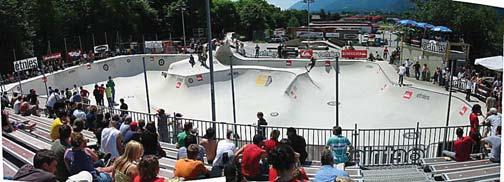

It is still a hard task over here to create good public concrete skateparks. Skateboarding is still not really recognized as a sport and the pressure of the prefab ramps is still there, but there are positive exceptions like the new Keyhole Skatepark in Munich that took three years of fighting on my side or the backyardstyle pool in Hagen, built by a company which is called „Minus Ramps“ and his owner Matt Grabowski. Both have been built and opened in 2007 and are without no doubt the best germany has to offer by now.
Although we do not have a standard like in California or Oregon, things are better than ever. More and more parks are built with the skater in mind and skaters involved and we don’t have to dream about parks we can never reach.

Another good thing which comes with all the new parks is that the older generation of skaters have woken up and started skateboarding again. With the rebirth of oldschool, a more wider range of skateboards are slowly available in the skateshops over here. Hopefully, what happened over here in the last couple of years in terms of public concrete skateparks was not only a single rolling wave but also the first wave of a long period groundswell!

54 CONCRETE WAVE SPRING 2008
Flensburg, Germany, opening Summer 2008, by Bowl Construction Ag
Photo: Erwin Rechsteiner
Schoolyard in Grüningen, Switzerland, by Bowl Construction Ag
Photo: Erwin Rechsteiner
Brixlegg, Austria, by Dreamland Skatepraks
Photo: Markus Suchanek
Chris Eggers

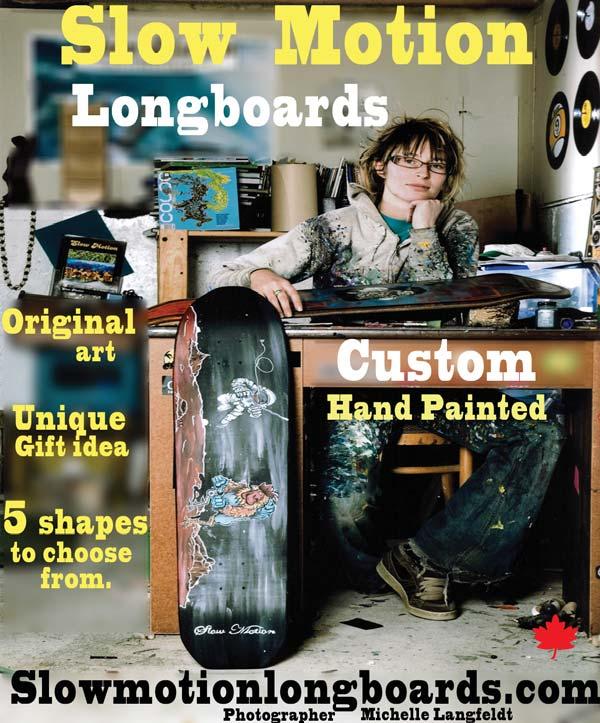


SPRING 2008 CONCRETE WAVE 55
z ti rg rgen
ntin


na
s M W
a
Words by Matias Bombal
Mendoza,Argentina
In West Argentina, nestled beside the Andes mountains, is the city of Mendoza. In its desert climate a man-made oasis has sprung. With a strong wine culture, it has blossomed in the last few years to become an important tourist destination – particularly due to the Vendimia festival. In Mendoza you can find rivers to raft or kayak, two ski resorts to ride, and plenty of opportunities to wreck yourself in all ways imaginable – including, of course, longboarding. With thousands of kilometers of downhill, the entire province is a

VIVA LOS BARRIOS
VA LO
InW In de its in med Ve e ple d gboa the is ount s ung of e
San Martin Park







mecca for longboarding. The city of Mendoza itself boasts at least two prime longboard skate spots: the San Martin Park and the Challao route. Mount Challao is located less than 10 kilometers (and a direct bus ride) from downtown and provides 7 kilometers of pure speedboarding. More than 100 years old, San Martin Park is the most important urban green space in Mendoza. Covering 307 hectares, with 17 kilometers of paved roads, scenic hills, and historic monuments, it’s a beautiful place to ride. There’s a core crew, kids like Beto, who has ridden the park for more than 10 years. And others, like the Burning Downhill Squad – with their “Adam Squared” riding style, creating and freeriding,
smiling just for the ride. Also there’s a crew from a neighborhood beside the Challao (Dalvian neighborhood), and shortboarders who have begun to explore downhilling. In the “Plaza San Martin” you’ll feel the skate vibe: with great riders like Piti, Jack, Milk, Javier, CheloBBK, Lucas, Chucky and hundred of local kids. There are no sponsors, just constant research to find boards and parts, and a consistent effort to push the level of riding.
The Hills

































The numbers are always growing; every day there are more and more people getting introduced to longboarding and riding their first kilometers. And there are tons of short-board skaters who are extending in to longboarding – attracted by the flow and the ride.











SKATE CAMP

 By Michael Brooke
By Michael Brooke
Hard to believe that summer is almost here. When I was skating in the 1970s and of “camp age,” the idea of actually going off to a camp for skateboarding was inconceivable. Nowadays, there are a number of skate camps offering a multitude of options. Some are run by local skateparks or YMCAs, but it’s the overnight camps that seem to be the biggest attraction.
The first and best-known overnight skate camp is Woodward. When I asked Michael Bennett, Action Sports Director of Woodward, what made his camp so remarkable, he was quick with a response: “Our staff is great and normally returns year after year. Our facilities are top notch in order to help accelerate the learning curve of all of our campers.”
camp can be found in Woodward, Pennsylvania. You’ll also find locations in Tehachapi, California (Woodward West) and at the Lake Owen facility in Cable, Wisconsin. All locations feature an incredible amount of street and vert terrain. In fact, there are 17 different areas you can skate at Woodward’s Pennsylvania location. From vert to street, every conceivable type of terrain is at your disposal, ready and waiting to be ridden!





Though located in Oregon, approximately 95% of Windells campers come from outside the state, Ryan said. And last year, Woodward pulled in campers from 47 states and 19 countries.
curriculum. “Several weeks before camp opens, we will teach our instructors how to teach using the methods developed by Dan,” explains Chris.
Fees for the camps range from about $650 to about $1000 per one-week session. Most camps recommend a two-week session. For Woodward and Ohio Dreams, the starting age for campers is 7 and goes to 17. Ohio Dreams runs two special sessions for those over 18 at the end of the summer. Windells offers a
Another well-known skate camp is Windells, based in Oregon. Camp director Ryan Sabol says the campers’ progression over a session is truly remarkable: “We also have amazing coaches and facilities to match.“
Both Windells and Woodward aren’t kidding when it comes to creating a skateboard paradise. Both boast incredible facilities. Windells includes a 12,000-square-foot indoor park along with a Dreamland concrete bowl, outdoor vert and mini ramps and various other concrete skate features tucked in throughout the campus. “Our biggest resource, which other skate camps lack, is our access to all the unbelievable concrete parks Oregon is famous for,” adds Ryan. If you add up all the skateable terrain at Windells, it hits a mind-blowing 90,000 square feet.
Woodward has three locations. The original
A fairly new entrant into the world of overnight skate camps is Ohio Dreams. Based in Butler, Ohio, the camp is now entering its second full year of operation. Located about an hour outside of Cleveland, the family-run camp has a different approach to the camp experience. “We wanted to take a more personable approach,” explains camp director Chris Ashcraft. “We partnered up with an established outdoor educational facility, and with the help of some very talented ramp builders, created a truly exceptional facility.” Like Woodward and Windells, Ohio Dreams is jam-packed with a huge amount of terrain; they have over 60,000 square feet of skate space. The ramps were designed by Nate Wessel, who has worked with EXPN and Discovery Channel’s “Stunt Junkies”.
While researching this article, I was contacted by Dan MacFarlane, creator of the “Skateboarding Explained” video. If you haven’t seen this video, it’s an absolutely terrific teaching tool. What is interesting is that Dan’s instructional video has been picked up by Ohio Dreams as part of their teaching
summer-long opportunity for skategeezers. As their website proudly states: “If you’re 18 to 80, you’re still a camper!” Adults are housed separately, and there are numerous options available to suit any type of rider.
If you find that one of your children wants to improve his or her skate skills and another is more into BMX or snowboarding, there is no problem whatsoever accommodating the two. In fact, all the camps seem to thrive on variety. As Tim Windell eloquently puts it in one of the site’s videos, “It’s like we’ve built Disneyland for action sports.”
Camps start around mid-June and run through the end of August. All camps offer a safe, friendly environment for children to participate in an activity they love. What a way to experience summer!
58 CONCRETE WAVE SPRING 2008
Woodward.com Ohiodreams.com Windells.com
Woodward Camp Skater Sierra Fellers
Windells Camp
Ohio Dreams
PORTFOLIO JEFF NASS
Idon’t remember the first time I was on a skateboard or the first photo I captured. I do remember the first time I skinned my virgin elbows skating behind the local supermarket. Those elbows are now and will always be hot pink. Photography came as natural as skinning my elbows. As a kid I would always try and show my friends my photos from family vacations using my disposable camera. They never seemed interested. At that time, I couldn’t understand why. I came to realize different photos are intended for different people. I attended college at the Maryland Institute College of Art as a photography major. One summer I interned at the Baltimore Police department printing crime photos. I learned life is short and unpredictable. This made me question what really made me happy in life. Skating was always a freedom from the world around me. It was at this time that I realized how to use my camera to capture the things that I was most passionate about in life.

SPRING 2008 CONCRETE WAVE 59


SPRING 2008 CONCRETE WAVE 61
Rob McKendry and Braden Wahr (left)
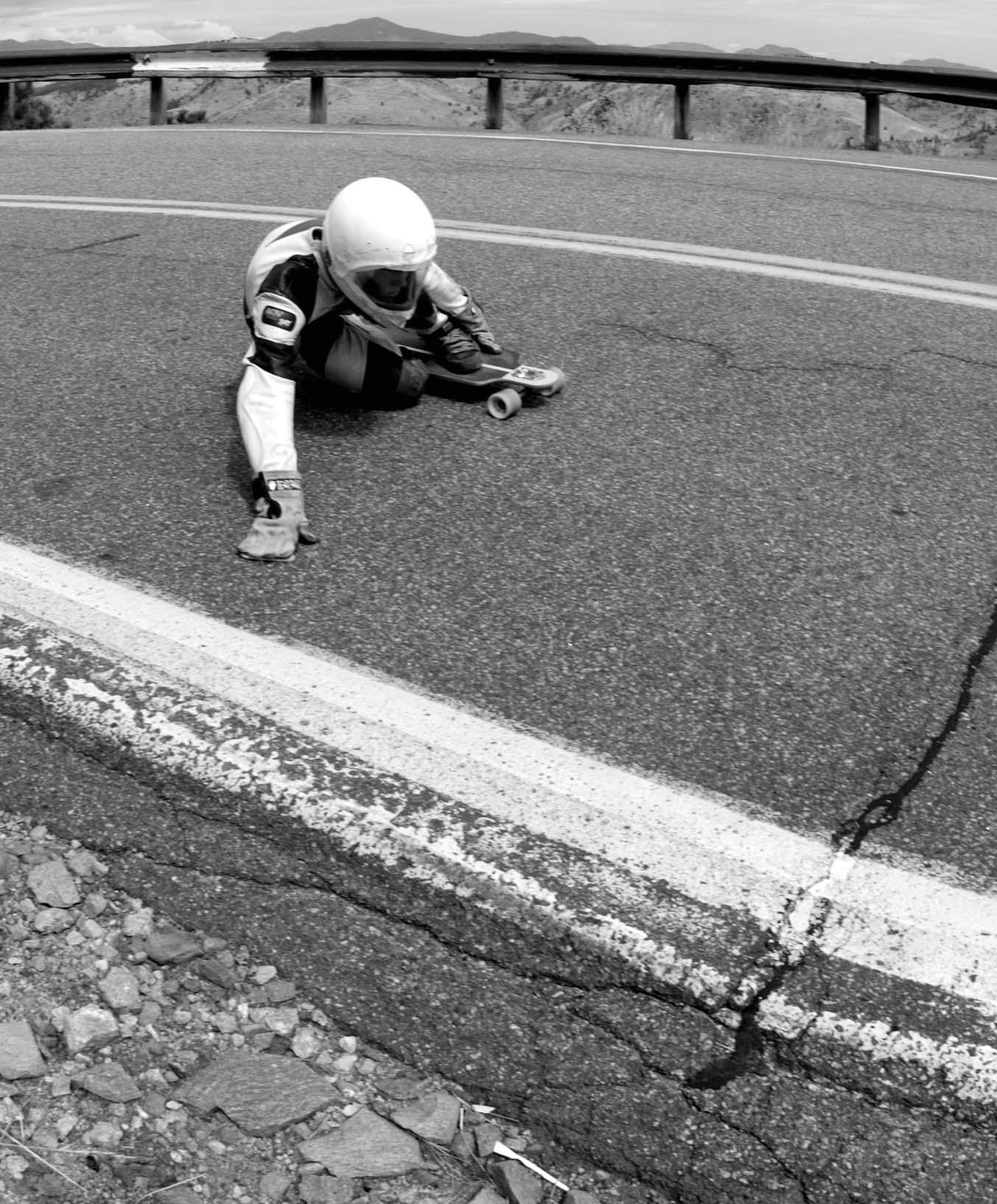
 Dane Lindblad
Dane Lindblad

64 CONCRETE WAVE SPRING 2008
Lee Wilson and Cameron Lawerence (right)


66 CONCRETE WAVE SPRING 2008
Braden Wahr
Conception to Reality
THE AUSTRALIAN SKATEBOARD RACING ASSOCIATION




 By Colin Beck, a.k.a. Bugs | Photos: Bill Fonseca
By Colin Beck, a.k.a. Bugs | Photos: Bill Fonseca
This is a journey of speed and enlightenment. This is the idea that became real. This is the story of ASRA.
Desperate for a carving fix during the long, snow-less summer months, I developed a habit of carving my trusty longboard through the placid roads of my rural Japanese town. But I was frustrated that the roads were so placid and that to get up a decent head of steam, I needed to pump up to speed rather than simply carving.
This was during 2003 and 2004, when the modern slalom renaissance was in full swing and I began reading about slalom every day on the NCDSA slalom forum.
I started setting slalom courses in the street outside my house and quickly became the extrafreaky gaijin in the eyes of my conservative neighbors.
When I returned to my native Australia in 2005 I was keen to meet up with fellow slalomers. After long periods trawling online skate forums I knew that there had been occasional slalom sessions in Sydney, but the scene seemed to have fallen dormant. A master plan emerged on the horizon.
My goal was simple: I wanted people to slalom — and if there weren’t any other slalomers, I would have to create some. I put a message on an online skate forum to try to get people to come to a slalom session. Three people came, one of whom was Haggy Strom, who had raced in the USA and had slalomed with Paul Price from the UK when Paul was living in Australia in 2004.
From this unpromising beginning the slalom scene in Sydney slowly grew throughout 2005, but things really kicked up a gear in November 2005, when Haggy Strom bought a Trakmate timing system. Suddenly people saw the whole point to wiggling around cones — you could compare your time to other people’s and more importantly, try to beat your own best time.
With the timing system in hand, we held our first outlaw race in December 2005 and were stoked to get a large contingent of racers traveling the 1,000 km (620 miles) from Queensland to compete. Our little slalom scene in Sydney now seemed like a part of a national movement.
2006 was a year of consolidation, with informal outlaw jams taking place on the first Sunday of each month. Nicknamed the “Church of Slalom,“ these were popular enough, but the scene started to hit a brick wall as the months went on. Something more was needed to take it to the next level.
So in late 2006 we finally decided that a proper legal organization was needed to allow us to hold legal (non-outlaw) races. We formed ASRA (Australian Skateboard Racing Association) and decided that instead of a monthly outlaw race we would hold a five-race series throughout the year, with points awarded for each race and an eventual series winner. The inaugural “Conehead Cup“ series was an amazing success, with great turnouts, fast racing, and the events even injected much-needed cash into ASRA. A vibe was happening — every man and his dog wanted to have a go, it seemed.
The future of the Australian slalom scene is happening now. From the seeds of its low-key beginnings there is now a strong and self-sustaining grassroots scene. It has also has captured mainstream attention as one of the main events of the gravity-themed “Newton’s Playground“ festival held in Bathurst in March 2008. (Keep tuned for report.)
Our challenge is to spread the slalom stoke from its stronghold in Sydney and Queensland to the rest of the Australian continent, and to showcase slalom to the entire skateboarding community. The formation of ASRA has allowed us to stretch our sights in terms of legal competitions and sponsorship and start thinking in bigger terms. It’s all good as long as the grassroots stays strong.
Australian slalomers tend to either come from a longboarding background or an old-school bowlriding background. Like slalom everywhere, there’s a lot of older guys involved, but there’s a fair bit of younger talent that are hooking on the vibe. This includes a promising girls‘ division.
We’re lucky to have people with a great mix of skills. The ASRA logo was designed by graphics guru Scott Tansley, race T-shirts have been created by screen printers, slalom boards have been made by board builders, timing systems designed and built by backyard inventors, and sponsorship money provided by the slaloming businessmen among us. This diversity has created a fantastic vibe; everybody is genuinely stoked to be part of such an open and friendly scene.
Australia is blessed with perfect Southern California-style skateboarding weather and has a strong urban surf culture. The way things are running, it’s destined be the new slalom capital of the world, so now there’s no excuse to avoid getting down here to experience a happening scene.
Wanna race? Go to skateboardracing.org.au
SPRING 2008 CONCRETE WAVE 67
The UK’s Paul Price spreading slalom worldwide.
Steve Daddow at Newton’s palyground
Haggy Strom storms the course at allawah
Colin Beck holding court at ‘the church of slalom’
SEVERE SKATE WARNING
Bondi Bowl-A-Rama, February 23, 2008 STORM AT BONDI BEACH, AUSTRALIA
By Nick Sable
It’s that time of year again to mess with the beautiful people of Bondi Beach, Australia. The Bondi Bowl-A-Rama event is part of the World Cup Skateboarding series that just gets better each year. Now in its fourth year, it’s off the hook with more than 60 national and international riders attending. Add to the mix more than 6,000 people visiting the event, and it‘s a bomb waiting to explode.
With the mighty Bondi pool getting a brand new blue paint job for the event, when the sun shone it looked picture perfect. Bleacher stands were erected for the crowds; a buzz was hap-
pening in Bondi. With “Double D” Dave Duncan on the mic with our very own Cam Ward, the crowd were getting fired up for some outrageous pool skating.
The throwdown began with the masters‘ division, with the likes of Steve Caballero, Kevin Staab, Pat Ngoho and Lester Kasai, to mention just a few. Cab and Staab were dialing the lines, despite never having skated Bondi before. Cab threw frontside/ backside handplants a la Winchester, while Staab showed the punk rock vert style.This was Kevin’s first visit to Oz; he says he is hooked! Venice homeboy Ngoho showed


68 CONCRETE WAVE SPRING 2008
Steve Caballero taking in the view
Photo: Bill Fonseca
Bucky Lasek showcases his winning style.
Photo: John Harle
smooth, effortless Dogtown style that was a joy to behold. Lester was, well, Lester — going big, high and burly, always a crowd pleaser.
Australian talent in the event stepped up their game too. Mick Mulhall just destroyed the crowd with some killer airs – we salute you, mate! – and local ripper Nick Marsh just ripped with his slash stylin’. Adrian Jones, Danny Van, Tony Hallam, Johnny McGrath and Cameron Dowse all went off as well.
While we applied more sunscreen and wiped the sweat from our brows, the pros were busting to session. Rune Glifberg showed fast technical lines; Omar Hassan, a Bowl-A-Rama regular, went total gnar factor 10 in the square corner of the pool, with McTwists thrown in for good measure, and put in one of the longest frontside five-o to fakie I think I have ever seen pulled like it was just another day at the office. But man, what an office!
The Aussies were definitely on good form. Renton Millar’s 7-foot backside ollies just blew the place to bits. Nathan Beck just keeps getting better each time I see him skate. Jeff “Skunk“ Williams won best trick of the event with a pop shove-it noseslide to fakie around the square corner. Try that one, I dare ya! Local Adam Luxford skated silky smooth, showing why it’s his local, and an impromptu doubles session suddenly happened with Benji Galloway in the U.S. corner and Corbin Harris is the Oz corner, fast and furious.
Now, to say Sergie Ventura loves a good crowd to play up to would be an understatement; ripping style, total showman. But the winner of the pro division was Bucky Lasek – Hawk-like precision with the tricks (yes, frontside rodeos in Bondi!) and a blasting style made sure this was a man who flew home 10K richer.
A promising girls‘ event saw Izzy Mutu take a very well-deserved win, followed by Aimee Harris and Aimee Brecks.
Big props to all the sponsors for supporting such a must-see event, and thanks to all the organisers, with special shouts to Chad Ford and Sasha Steinhorst for the organization.
The Bowl-A-Rama is now turning into festival size, with events such as associated art shows, etc. running from a week before the comp, leading up to the famous after party at the Beach Road Hotel (yes, the band played “Possessed to Skate!“)

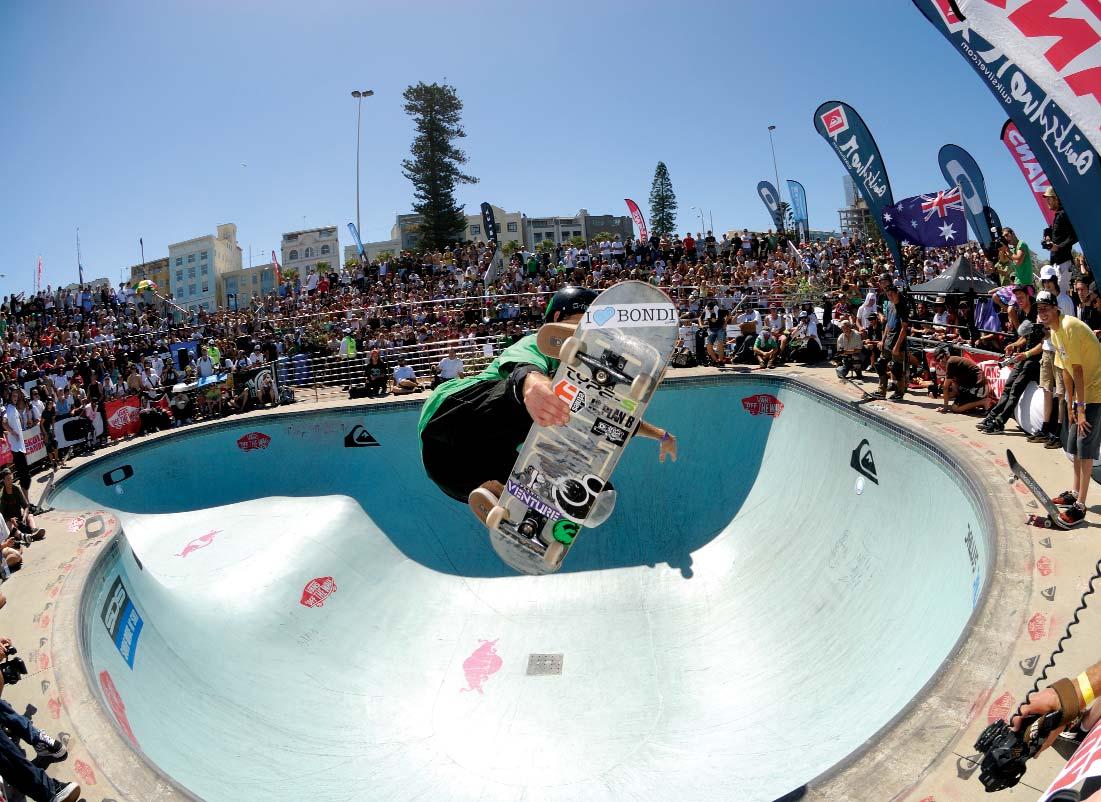
As the sun sets over Bondi Beach for another Bowl-A-Rama I recommend this: Beg, borrow, or hock yer grandma’s silver to get the flight here. This is Australia, this event is world class, you WILL be impressed, and you WILL not want to leave.
PRO FINALS
1st PlaceBucky Lasek$ 10,000

2nd Place Rune Glifberg$5,000
3rd Place Omar Hassan$3,000
4th Place Renton Millar$2,000
5th Place Benji Galloway$1,000
MASTERS‘ FINALS
1st Place Steve Caballero$2,000
2nd Place Mick Mulhall$1,100
3rd Place Kevin Staab$700
GIRLS‘ FINALS
1st Place Izzy MutuJeweled Gold & Silver Rodeo Buckle
2nd Place Aimee HarrisGold & Silver Rodeo Buckle
3rd Place Aimee BrecksGold & Silver Rodeo Buckle
BEST TRICK
Jeff “Skunk“ Williams – Pop Shove-it Noseslide to Fakie around Corner
SPRING 2008 CONCRETE WAVE 69
Mick Mulhall does Australia proud.
Photo: Dave Pang
Jeff 'Skunk' Williams - the sticker says it all...
Photo: Bill Fonseca
Kevin Staab
Photo: John Harle
ERIK LUNDBERG
Defies Gravity At Newton’s Playground
 By Marcus Rietema
By Marcus Rietema

Reigning IGSA World Cup Series Champion Erik Lundberg kicked off the 2008 season exactly where he left off — by winning the inaugural Newton’s Playground event in Bathurst, Australia. The skater from Stockholm, Sweden, known there as “Snakie,” overcame a troubled qualifying run to win on the famous Mount Panorama Racing Circuit.


Newton’s Playground was a groundbreaking event combining downhill skateboarding, street luge and slalom racing with a festival that included some of Australia’s biggest bands, a vert ramp, BMX dirt jumping, parkour, sliding and more. The event was organized by the Bathurst Regional Council and the Australian Skateboard Racing Association (ASRA), and sanctioned by the IGSA. It will hopefully serve as a model for major international skateboard races produced in the future.
Canadian Scott “Scoot” Smith earned the top

qualifying position on Friday with a run that was nearly a full second faster than second-placed Ethan Lau of the United States. Corey Leeson was the highest-placing Australian, in third. Both Lundberg and IGSA World #2-ranked Mischo Erban from Canada had disappointing qualifying performances, with Erban posting only the seventh-fastest time and a crash sinking Lundberg to the 18th spot. Could Lundberg and Erban overcome poor qualifying positions and challenge Smith for the win? It promised to be an exciting showdown at the first World Cup of the year. The first two rounds of eliminations were held on Saturday. Top qualifiers including Smith, Lau, Leeson, the UK’s Pete Connolly and Rylan “Raggie” English advanced easily to the semi-final rounds. Rebounding strongly from his poor qualifying performance, Lundberg also moved forward. The big news was the elimination of

70 CONCRETE WAVE SPRING 2008
Corey Leeson
Photo: Bill Fonseca
Ethan Lau
Photo: Bill Fonseca
Scott Smith
Photo: Bill Fonseca
Photo of flying man with flag by Bill Fonseca
Erik Lundberg leads Mischo Erban
Photo: Dave Pang
Aussie veteran Steve Daddow, who qualified fourth, and Erban, who seemed to have trouble adjusting to the fast, technical course. A solo crash in the second round spelled the end of the day for Erban.
Sunday’s final heats were all about Lundberg. The 20-year-old downhill ace defeated a truly international field to earn the title and the cash. Lau, hailing from Hawaii, came in a strong second to earn his best World Cup Series finish to date. Top qualifier “Scoot” Smith finished third. Olivier Bareaud from France came all the way from the 29th starting position to take fourth. Connolly won the Consolation Final to finish in fifth.
The IGSA World Cup Series breaks until July 9-12, when it resumes in Peyragudes, France.



Newton’s Playground was the incredible first stop of the 2008 IGSA World Cup Series. A big thank you goes out to Eddie Spearing who originally had the idea of a downhill race at Mount Panorama. The Bathurst Regional Council for giving the event a chance. Simon Rollin, Kath Perry and all the Newtons Playground crew for making it happen. A big thanks as well to all the sponsors, the ASRA crew, the volunteers and all the riders from around the world who supported the event. It was the combined efforts of many people that made this race a success. Start making your 2009 plans to join skaters from around the world on a mountain top in Australia!
NEWTON’S PLAYGROUND FINAL RESULTS
1Erik LundbergSWE450.00 points
2Ethan LauUSA432.62 points
3Scott “Scoot” SmithCAN424.37 points
4Olivier BareaudFRA416.84 points
5Pete ConnollyGBR409.88 points
6Humberto MeloBRA403.36 points
7Rylan “Raggie” English CAN397.22 points
8Corey LeesonAUS391.40 points

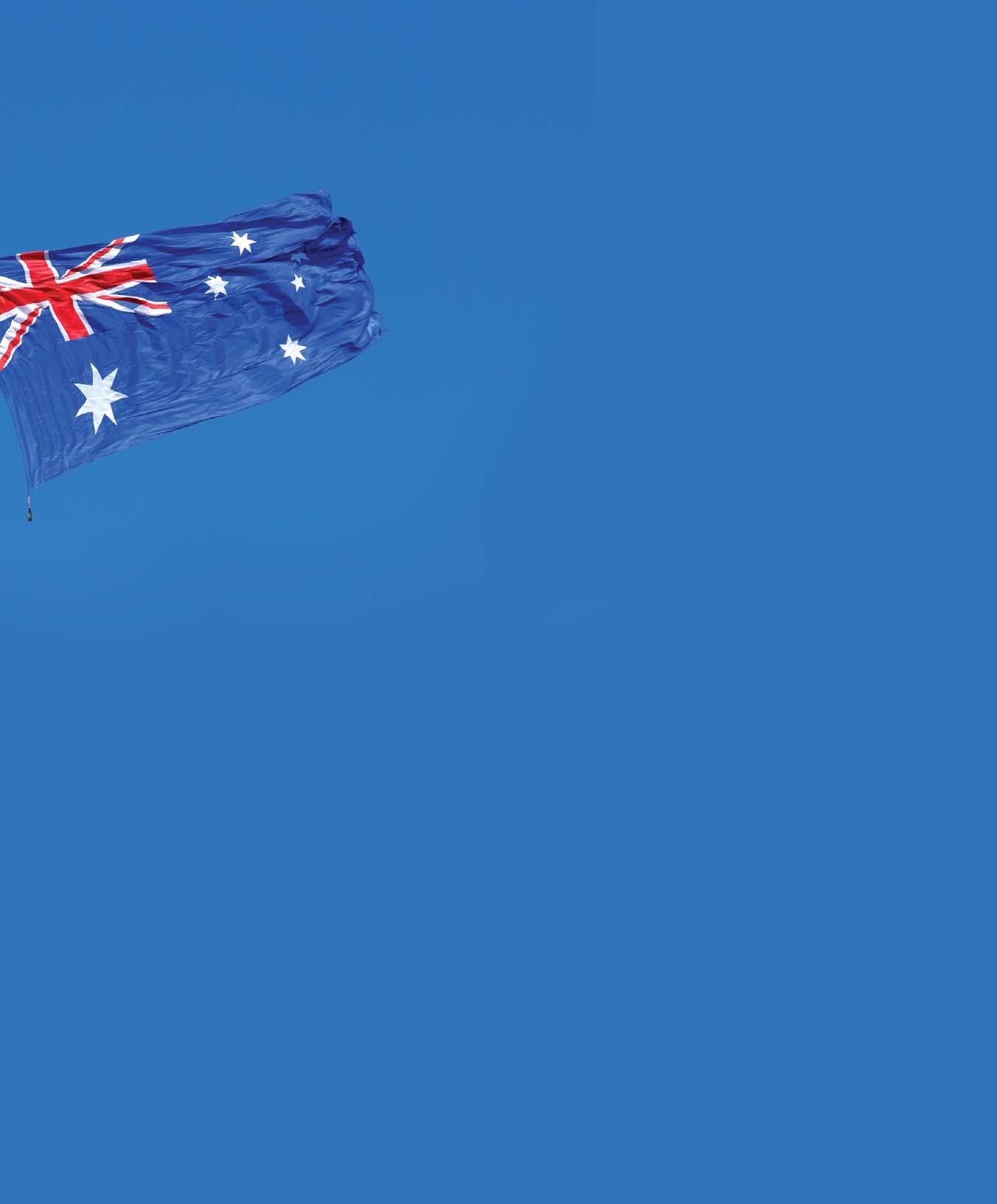
9Mischo ErbanCAN385.84 points
10Stephen DaddowAUS380.52 points
SPRING 2008 CONCRETE WAVE 71
Olivier Bareaud
Photo: Bill Fonseca
Steve Daddow
Photo: Dave Pang
Erik Lundberg’s Podium
Photo: Bill Fonseca
Daddow and Spearing crashing as Bareaud sails by
Photo: Bill Fonseca
HAVE IT

A JOURNEY INTO THE WORLD OF SKATEBOARD CUSTOMIZATION
By Michael Brooke
About eleven years ago, I picked up a book called “The One to One Future.” In this ground-breaking work, authors Don Peppers and Martha Rogers examined what happens when technology allows companies to market to customers on a one to one basis. The book originally was published in 1993 and a decade and a half later, it’s incredible to see how on point they were. I couldn’t help but think about the one to one future while I was preparing this article on skateboard customization. It is my belief that skaters all over the world will pick up on the benefits of having skate gear that is uniquely created for them. This article examines three areas of customization: deck construction, board graphics and grip tape. I am sure it’s only a matter of time when we see truck and wheel customization. Until that moment arrives however, there is still a tremendous amount to explore.
BOARDPUSHER — Design Your Own Deck
Back in the summer of 2007, my son Jonathan and I had an opportunity to visit the offices of Board Pusher in Denver, Colorado. We met with owners Lucas Bond and Jason Atencio, who took us on an extensive tour of their facility. The idea of Board Pusher is simple: go to their site, upload up your own artwork onto the deck of your choice, and a week or two later the customized deck arrives in your mailbox.

Board Pusher started with a basic idea. As Lucas explains, “Growing up skating, there were many times that we wanted to have decks with our own graphic on them. We would buy blanks and use stencils to spray-paint our logo on them. We had a couple of little brands at various times, and we would push decks on kids at school.” It was a number of years later when the idea resurfaced that Lucas realized there had to be an economical way to accomplish one-off skateboard printing. After a lot of R & D and months of programming, they had all the pieces in place. The only problem was that all this hit at the height of the blank deck controversy. For Lucas, it was something of a sore issue. “It seemed even more appropriate at that time, since it became obvious that the quality of decks and graphics was taking a back seat to other concerns.”

As Board Pusher sees it, customization and skateboarding



go hand in hand. “For many skaters, skateboarding is about self-expression and individualism. I think some skaters do not necessarily feel represented by any of the leading brands. Customization is a way for them to build their own niche in the scene,” he says. As for the actual quality of the decks, it was a major hurdle to overcome. “It was crucial that we were getting a final product that we were satisfied with. There are some techniques out there for printing one-off decks, but none of them

72 CONCRETE WAVE SPRING 2008
produced the quality and reliability we needed. So there was a lot of R & D on the manufacturing side of things.”
The Internet has been a key component of the growth of Board Pusher. The company also works with local shops and offers custom deck vouchers for resale. This gives retailers an opportunity to get a piece of a market that is still mainly Internetbased. However, as Lucas explains, the Internet is not only a main source of business, it is also the only way for him to deal with all the logistics. The ‘Net allows Board Pusher to keep track of which graphic goes with which order. “With so many different combinations and choices, it can get to be a nightmare real quick unless you have a solid logistics,” Lucas says.
A main part of the company’s business is small skate crews who all want their own design. Board Pusher also receives a lot of gift orders. “One interesting aspect of customization is dealing with the customers. You get people of all kinds, and the fact that they have all put some creative effort into their product makes dealing with them all the more interesting. You immediately get to see a side of your customers you might never know existed otherwise.”

To deal with the demanding pressure of customization, Lucas says they try to keep a tight schedule to make sure everybody gets their decks as fast as possible. It can bring up many humorous (or stressful) situations. Lucas takes things in stride, however. “The joke in the warehouse is that certain designs are just cursed. You can print 100 decks with no problem, and then you hit one that has to be redone 3 times before it is right. Nothing can drive you crazy like a cursed design.”
Board Pusher sees a bright future for customization. “As the industry grows, it gets more and more diverse. I think that custom products are going to help fill the voids that the major companies don’t go after, or don’t even know exist,” says Lucas. boardpusher.com
BUSTIN BOARDS —
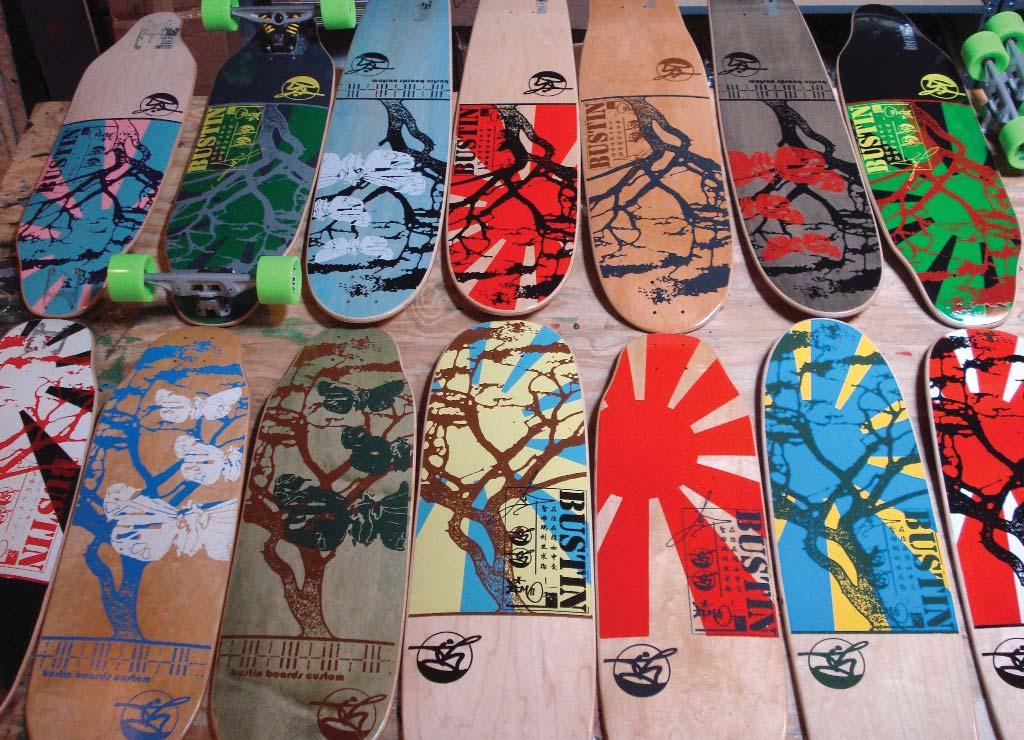
One of a Kind
Bustin Boards is going after a niche within a niche. Bustin allows customers to make their own custom longboards and mini-cruisers. Ryan Daughridge, one of Bustin’s founders, met up with me last year at ASR. His background is in Web programming, and it’s come in handy as he’s gone about the process of building the company. Ryan and his friends believed from the start that skateboarding is a sport of individual expression: “We felt that the products should be tailored for your own style and technique.”
Bustin Boards saw the way that brands in other industries were beginning to introduce custom products, and they wanted to be the first to bring this kind of individuality to skateboarding. The Bustin crew brought their three passions together: skateboarding, art and a sense of individuality. “We knew we could create great boards that people would love to ride, but we really wanted to do something different than everyone else and not follow the age-old model,” explains Ryan.
Bustin’s philosophy is pretty straightforward. Many skaters ride in packs or groups, but for the most part it is about you and your board. “Your board is your tool, your paintbrush, your vehicle of expression.” Bustin feels it is empowering to realize your own uniqueness; it makes you confident and powerful. “We wanted to give this confidence to our customers by truly allowing them to create their own board.”
When I went to Bustin’s site and created my own design, I found the whole process easy and enjoyable. It’s fun messing around with graphics and colors. Behind the slick interface, you can tell people have been hard at work. Ryan says that customization forces the manufacturer and the consumer to accept new terms and procedures for doing business. “Most of the time, it is not something that takes place in the usual skate shop setting. Instead, we are challenged to find new ways to communicate and agree on a final product.” I understand what he means by this. As a consumer, I have to trust that the complete I was ordering via a computer screen would perform well. Two weeks later, I had my answer –the Complex model is truly a fantastic ride.
For Bustin, the biggest obstacle has been to make their products valid through their website and over the phone. “At first, most people who contacted us had never seen any of our boards and were trying to decide whether or not it was a risky investment. This uncertainty about the actual product was compounded by the general uneasiness of shopping online,” Ryan said. Bustin addressed these issues by ensuring that their website, customer service and final product met all expectations at a full 100%. “Slowly, as our company grew and more boards hit the streets it became an easier sell.”
As with any business, happy customers with excellent testimonials have meant that people have arrived at Bustin’s’ site ready to purchase. Even so, when compared to the older model of retailing, customization can be a tough sell, but Ryan is realistic. “It is a tough sell relative to the
SPRING 2008 CONCRETE WAVE 73
old model, but the customer satisfaction, if you succeed, is also relatively higher. It becomes more than just a board, it’s ‘my’ board.” Bustin believes that as customization expands, customers will come to expect that each aspect of the board will be able to be tuned before purchasing.
With respect to shops, Bustin has developed a customized approach. “After developing our entire business through direct customer interaction via the website, we wondered how we could work with local retailers and still maintain the integrity of our brand.” Ryan explains that Bustin has created a unique program of releasing limited-edition prints to shops. “We will be recruiting artists and only releasing 100 of each graphic, signed and numbered. Our goal is to avoid the ‘cookie cutter’ process while being able to work effectively with shops.”
In terms of pricing, Bustin Boards averages about $20-25 more than a standard, non-customized board. From what they can tell, customers feel that this is a fair price to pay for a personalized product. Or course, providing a one-to-one service can conjure up a number of curious situations. Ryan recalled a time when a girl called wanting to make her boyfriend a board with her picture on it. “We agreed on price and even got paid before we ever saw the actual picture.” When the image arrived, it was a picture of the girl naked aside from a few soap suds. Apparently the infamous “butt board” is still a legend at the Bustin shop. “One day I’m going to put a bounty out for someone to find that board and return it to our shop to hang up,” Ryan said.
But customization is not without its pitfalls. “As far as nightmares go, there are too many to count,” says Ryan. “I imagine this is why not many companies offer what we
offer, but we are stubborn and passionate about individuality.” Bustin has experienced a great deal of “Murphy’s Law” –whatever can go wrong, will go wrong. “We have been sticking to it long enough to anticipate lots of the nightmares, but as we add more products and service more customers, the chain nightmares are likely to continue.” Regardless of this, Bustin believes that a large part of its success has been overcoming these challenges and struggles. “We aren’t backing off now,” Ryan said. bustinboards.com
Motto uses the Internet to help them connect with artists all over the world who want to see their art get out there. An important part of Motto is featuring the original art of independent artists. Local skate shops are also very important to Motto, and a big part of Motto’s mission is to help them grow. “We see skate shops as a key element in building the skate community we love,” says Rob. Shops and companies can also have Motto create their own customized grip tape at Motto’s website, which also features artists’ grip tape and stencils for purchase.
When I asked Rob about his most memorable project, the first thing he mentioned did not concern a skateboard, but rather a lab - the Oakley Rolling Lab, to be precise. It seems the eyewear company wanted to lay down extremely complex patterns of laser-cut grip tape on all its floors and stages. As Rob recalls, “Laying down large, interlocking puzzles of grip tape under a tight deadline was a brutal but rewarding experience.” emotto.com

MOTTO — Make it Your Own
On the surface (no pun intended!), grip tape is something that is so fundamental to skateboarding, it’s a wonder that customization hasn’t come sooner. Those who saw the rider profile on Steve Lange in our 2008 Buyer’s Guide were able to see first hand his work with grip tape. Rob Riley and his company Motto are changing the face of skateboarding by offering customized grip tape. I began my interview with Rob about what led to his work in grip tape customization. “Back in 2002, I worked on a big project creating stencils for Burton Snowboards that really fueled the idea to collaborate with independent artists in bringing back grip customization from the Dogtown days,” Rob recalls.
Like others, Rob sees customizing grip tape at the heart of skating. “You set up your own deck the way you want it, and with Motto we just brought that customization to the grip tape.” Rob believes that customizing grip tape is a way to further express your own creativity. Rob sees it as a collaboration when skaters put down an artist’s grip tape design and then add their own art to it. “I really enjoy the ability that Motto has to work with so many people on their own ideas. If there is a really good skate scene in a specific area, there tends to be a lot more creative influence and more customization either by individual riders or the shops themselves.”
ROAROCKIT — Laminate Your Own Skate Deck


It’s one thing to get your own unique image on a deck or a customized grip tape job; it’s quite another to completely design your own deck, from the laminates on up. Enter Roarockit. Roarockit was started by Ted Hunter and his wife, Norah Jackson. He initially got involved with the product after having some success with skate-building courses in Hawaii back in 2001. “After figuring out the process and helping each of the 25 students make their own decks from scratch, I wanted to share the experience with skaters everywhere by creating a builder’s kit,” he says.
Ted and Norah believe that skaters want more choices. They believe that factory-produced decks don’t always offer the exact right deck for an individual. Unlike simply choosing

74 CONCRETE WAVE SPRING 2008
Motto custom grip tape for the Oakley Rolling Lab
different hardware and attaching it to a premade deck, the Roarockit kit allows builders to custom-build the deck itself. As Norah explains, “This means skaters can now make their own choices for their deck, including the composition, materials, style, weight, shape, concaves, nose and tail shape, and of course the graphics.”
Ted believes skaters’ needs are like those of any other athlete: “They require the proper gear to suit their abilities and what discipline they are riding, from the bowl to the hill. Being able to hand-build a deck means total control over how that deck performs for their style of riding.”
The process for creating your own deck from scratch is rather intriguing but, thankfully, not too difficult. Skaters shape their own foam molds, glue up their own veneer layers and use a vacuum bag with a simple hand pump to press the veneers of wood together. If you can use a roller and have ever used a bicycle pump, chances are you can handle the Roarockit.

Roarockit’s “Thin Air Press” technology was first adopted mainly by longboarders, who picked up on its ability to make unique shapes. “The technology is brand new to skateboard deck making,” says Norah. “Like any new product, it needs to be proven before believed. At first, there were skeptics (from the street deck world) who dismissed the whole process, but our recent sales results indicate that more street deck kits are sold than longboard kits.” It’s now dawning on skaters that the Roarockit

Thin Air Press method can be a successful process for street skaters who just want to make a solid deck to put custom graphics onto. It’s also being used by serious longboard designers who make prototypes for refining custom shapes. Skaters both young and old are discovering what those in the manufacturing sector have known for years — the vacuum technology is worthwhile.
What the Thin Air Press and the one-sided foam mold have been able to do is make creating a custom deck a much easier and less time-con-


SPRING 2008 CONCRETE WAVE 75
“THE ROAROCKIT METHOD HAS CHANGED THE WAY CUSTOM DECKS ARE MADE, WE’VE MADE IT AFFORDABLE AND EASY TO DO, AND WE PROVIDE THE TOOLS AND MATERIALS TO MAKE IT HAPPEN.”
Ted created this sculpture called“Reaching For Light.” Each board is pressed inside aThinAir Press without a mold then hand bent and twisted into shape
Ted checks the pressed decks,which will sit overnight to dry. Inside theThinAir Press,each deck is evenly clamped with about 3,000 lbs of overall vacuum pressure. (left photo) Roarockit teacher Michael Bozinovski has shaped a custom foam mold and his design includes kick tail and concave plus a middle layer of blue veneer. (bottom photo)
suming process. “Creating a deck with concave and rocker was a challenge that not every builder was able to master successfully,” says Norah. “The feedback we get from skaters who have used our kit is that we have simplified the process, and it is now super-easy to shape any kind of deck they want to ride.” Roarockit provides folks with a great deal of information to ensure success with their projects. There are numerous “how to” videos on their website along with hundreds of postings on skateboard forums.
Ted and Norah are pleased with how things are developing. Explains Ted: “We know that the Roarockit method has changed the way custom decks are made, we’ve made it affordable and easy to do, and we provide the tools and materials to make it happen.” Norah says their customers are from all over the world and are all kinds of people, into all types of skateboarding. “Our Internet customers are all styles of riders: street, pool, bowl, luge, slalom, downhill, cruising, racing, and ‘transportation-ists,’ old and young. They build decks for school projects, for casual riding, serious custom builds and for their small business and even as art pieces for hanging on the wall.”
said. Using a special laser engraving system, Soul Ryde is able to create incredibly intricate graphics in the wood. The 3-D effect is stunning, and the decks are truly exquisite. Some might even say the Soul Ryde decks are almost too nice to ride; they are truly works of art.


Michael believes that skaters like the idea of customization because it gives them options and the ability to make something their own. “It makes it personal for them. It lets them be different from the masses, knowing that they own the only one like it, and they don’t have to worry about the next guy having the same exact board. It’s an extension of who they are.”
When it comes to profiling a typical customer, Soul Ryde isn’t just limited to just one type. As Michael says, “I’m not sure if we really have a typical customer. They range from board collectors who just want a piece of art, to everyday guys who just really want a rad custom. We do sell a lot of boards as gifts, though.” The idea of using a personalized skateboard as a gift seems to be really taking off. soulryde.com
RESTLESS — Custom Graphics and Shapes
Roarockit has recently opened a deckbuilding school in downtown Toronto. Students of all ages and experience levels come in to build decks, taking advantage of the assistance and a workshop environment. Weekly “Open Studio” evenings are set up for custom builds on a dropin basis. The After School program is open to all ages; surprisingly, there have been many parent/kid teams who have signed up to work together. Other customers are woodworkers and RC hobbyists, who purchase Thin Air Press kits from retailers such as Lee Valley Tools, Woodcraft and Rockler in North America and Carba-Tec in Australia. roarockit.com
SOUL RYDE — Custom Laser Engraving

Soul Ryde was profiled about six months ago. Owner Michael Salmon grew up in South Carolina and got his start in college, making boards tailored specifically to individuals. “All of my decks had graphics that were completely custom to the customers’ interests and personality,” he
A key obstacle to the growth of customization is building enough volume to make it work. As Michael points out, creating a business around customization can make it hard to get numbers. “You can’t just load stores up with product and sell masses online, because every product is unique to the buyer. It takes times to make the name for yourself and for the orders to start rolling in.”
Soul Ryde realizes that there will always need to be stock boards for the stores and the beginners. For the true riders and enthusiasts, however, customization is where it’s going, says Michael. “Pretty much everything has already been done, and you can only reinvent the wheel so many times. I think that more and more custom options will become available as well as more competitive pricing, which in turn will drive more of the market toward the customization side of things.”
As it has for the other companies profiled in this article, the Internet has been a lifeline for Soul Ryde’s business. “It has helped us tremendously [because] it has allowed us to offer a dedicated part of our site to customizing your own board right online. This way the buyer can build and design their own board right there before they buy it,” Michael says.
Based in Montreal, Quebec, Restless wanted to bring something different to the Longboard community. Not only can you design your own graphics, you can also customize your own shape. The company was founded by four passionate skaters: Christian ChenardLemire, Alaric LeBlanc, Dither Flores and François-Olivier Théberge. As Christian explains, “we saw Restless as a way for riders to design their board and have a professional finished product at an affordable price. We noticed that many Longboarders created their own decks. Restless wanted to take customization to a great level and their site definitely provides customers with an enormous amount of choice. It took Restless almost three years to fine-tune their methods and they are still tweaking things. At one point the company was working with skateshops, but found that when it comes to customization, things just get way too complicated.


For Restless, customization is more than just putting a different kind of wheels or trucks on your deck. “Customization will mean having a personalized graphic and also designing the shape, concave, tail and nose of your board” says Chris. Most of their customers are between 16 and 30 and Chris was quick to point out they do receive a number of female clients. Those with an artistic background seem to have really tapped into what their site offers. When I asked Chris for details about some of their more memorable images they have received, he was a bit coy. ”When you offer customization on the level that we do, you’re bound to have people making really funny-looking boards. Without going into details, let’s just say that some people would like to have graphics on their boards that I wouldn’t show to a kid.” Viva la difference! Restlessboards.com

76 CONCRETE WAVE SPRING 2008
The finishing touch to a hand-built deck is a custom-designed and painted graphic!








SPRING 2008 CONCRETE WAVE 77
Applied Just Like Grip Tape



Slip Tape® is a light weight engineered polymer sheet that is 6X more abrasive resistant than steel, it acts like another laminate layer drastically increasing the performance of your board.

Slip Tape® gives a consistent smooth slide that feels like a new deck that the paint just won’t wear off.
Slip Tape® protects the bottom layer of wood from being cut. This prevents the board from loosing response and preserves the strength for the life of the deck!
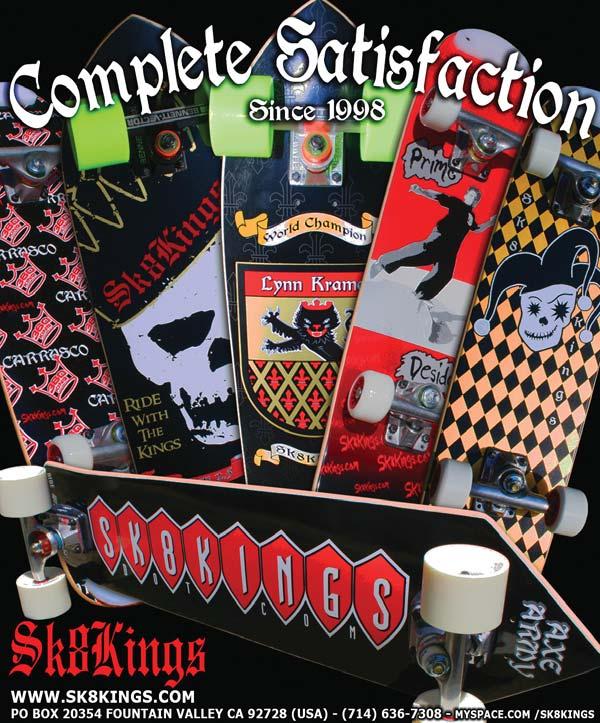
78 CONCRETE WAVE SPRING 2008 ©2005-2007 Yatz Co. Patents Pending www.sliptape.net 888 203-0011 Consistently Smooth Slides Stiffens Board for More Response Reduces Wheel Bite Reduces Pressure Cracks
Performance for the Life of the Board
More
® ®














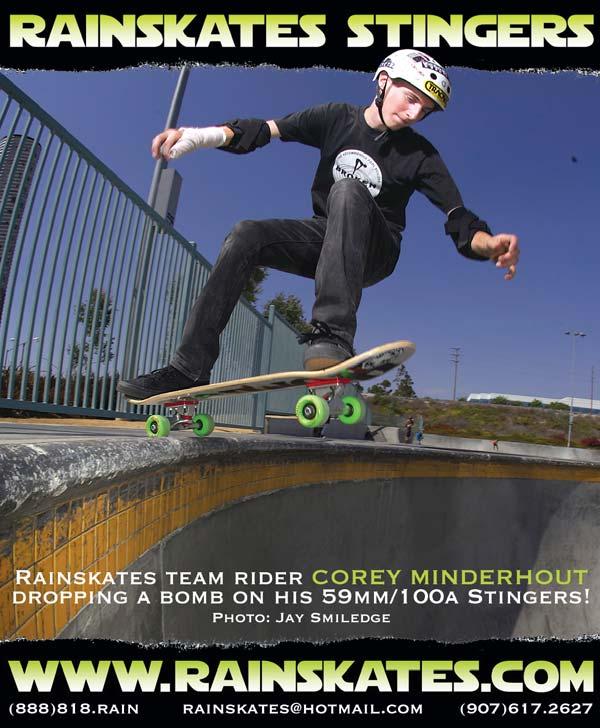


SPRING 2008 CONCRETE WAVE 79
PROSand CONS

Skateboarding’s Parallel Universe
By Miles Masterson
Who was the first person to ride a skateboard in South Africa? Was it Bunker Spreckels? Probably not, skating had been rolling in the beach towns of the Southern tip of Africa long before his notorious surf trips in the 1970’s. No, by the time “The Player” and his flamboyant entourage arrived here, there were already the humble beginnings of an African skate scene and industry.

Skateboarding in South Africa has always gone through the same boom and bust cycles of North America, Europe or Australia. But not simply content with just going underground in the lulls, it would virtually disappear here altogether for years at a time, making its survival at all that much more of a miracle.
What defines the existence of skateboarding anywhere though? Whilst the roots of the sport will be always be born from gravity, it is the dollar (or in our case the rand/dollar exchange rate) that has always lubed the wheels of its progress. A legitimate scene can only really be sustained with the development of an “industry”- one at least initially for the most dependent on imports, and not bound by the limitations of crude homemade equipment. And if the pinnacle of any country’s skate scene is to boast a locally made signature skateboards and “professionals”, where does South Africa stand in comparison to the rest of skateboarding world?
Well, for a start, here even today the term “pro skater” is a mantle few — if any — South African skateboarders wear easily...

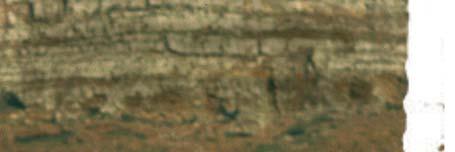
The ‘60s and ‘70s


In a curious twist, a fortunate few do lay claim to professional status by the late 1970s though, or at least the salaries to match. “I bought my first house at 21 and some months earned up to R5000,” recalls ‘70s South African skating star Gary Smith of his salary and endorsements at the era’s peak (still more than the overall national average here today). “It was huge loot. I bought an Alfa Romeo and at the demonstrations there were 5000 spectators and they were doing a roaring business in the parks.”
Similar to how it unfolded Stateside, SA skateboarding’s first, short “craze” began in late ‘50s and early ‘60s on metal-

80 CONCRETE WAVE SPRING 2008
Phil Hajal: DHX 2000
Photo: Miles Masterson
wheeled boards. These were sold in some sports shops and later imported by the likes of SA surfing’s Cape Town-based surfing godfather, John Whitmore, whose self-titled surfboard label even had a “skate team” for a few years. It soon faded though, and it was only when skaters got their hands on new-fangled smooth polyurethane wheels and improved decks in the mid ‘70s, that South African skateboarding flourished into its heady somophore boom, although once again, few years behind everywhere else.
In Durban, “Surf City” – a semi-tropical surf paradise, wedged between the warm Indian Ocean and the vast Zulu nation — a Xerox of DogTown was spat out. In the early to mid ‘70s, much like LA, Durban’s Bay of Plenty featured the best waves and was the centre of the country’s competitive surfer scene. But further down the beach, where the waves weren’t as consistent, it was different. Closer to the dockside and the red lights, the neglected area of South Beach – in many ways then our Venice Beach — longhaired rats tic-tacked and carved barefoot on the promenade, emulating the tricks they saw in the few Skateboarder magazines they could find.
“My first board was made from a tomato box,” remembers one South Beach surfer/skater Gary Stephens, who eventually became known as our Jay Adams, both for his smooth style and reckless approach to life. Stephens also became an SA champ, caught the eye of early Durban skate entrepreneur Snowy Smith, and for a time became part of Snowy’s Power Tracks team,
which claims Snowy, cleaned up at skate contests.

Snowy reckons he was also instrumental in organising and setting up the first SA Skateboarding Champs – with freestyle, slalom, tricks and downhill as disciplines – which were held at Roy Hesketh Park in Pietermaritzburg, about 60 miles inland from Durban, in 1976, and then just outside Surf City, in 1977.


As the decade progressed Snowy, South Beachers Gary Smith and Gary Stephens and others then began to travel 400 miles inland to Johannesburg – a.k.a. “Joburg” — to connect with the growing scene there. Eventually, boards sales flourished and there were regional and national skateboard associations and championships, huge crowds at comps and demos, coverage in surf magazines and local and national newspapers.
According to Snowy, he and his brother Robert had been supplying self-made skate
John Steenkamp of Radical Skateboards and Brian Roberts of Solo Sport Skateboards, all based in Joburg. Thanks to demand, skateboarding’s spread quickly to surf and sport shops along the coast down to Cape Town, 1000 miles to the west.
In what could be described as South Africa’s San Francisco, Cape Town, skateboarding took root independently from the Durban scene. Peter and Tessa Wright, of The Corner Surf Shop, reckon they were the first to import new generation skate goods into South Africa. Peter opened his store at the surfing town of Muizenberg in 1971, and soon contacted Joe Stevenson at Hobie Alter in California, from an advert he saw in Surfer. He then brought in various makes of wheels and trucks, such as Chicago, Sims Pure Juice and Kryptonic. Whilst they imported some boards too, Peter and Tessa recall these became too expensive, so they began to make their own boards under the Wright label and also manufactured their own aluminium trucks.
goods through their downtown Durban shop, Surf Africa, which had been open since the late ‘60s. Smith, colourful and outspoken character, reckons he helped skateboarding to grow in the late ‘70s in both Durban and Joburg more than anyone else, a claim not all the old timers agree with. Even today, some criticise Snowy for wanting to dominate the industry, something he denies vociferously. Regardless, through his efforts, Snowy will always be a key figure of South African skateboarding in the 1970s.
Apart from Snowy, the scene in Durban mushroomed further when surf shop owner Mike Larmont began importing containers of equipment from the US from about 1974, at the insistence of one Randy Rarick, who told him it was booming in the US and despatched containers of skate hard goods here, including Cadillac Wheels. For a short time, Larmont capitalised on the emerging boom by selling skate equipment in Durban and also sent it to sports and surf shops all over SA. Other commercial players later in the era included Ted du Plooy and Colin Cilliers of Alpha Skateboards,
Wright’s shop was in many ways the epicentre of ‘70s skating in Cape Town. Peter hosted what he is sure is the country’s first formal skate event in about 1975 and helped set up SA’s first legit skatepark, the Concrete Wave, in the town of Fish Hoek. He was also involved to a lesser degree in parks and events in malls in other suburbs. Thanks in part to his efforts, Cape Town boasted excellent amateur skaters such as Steven Kellner (who later became a British champ), Kevin Dennett, Fiona Patterson, Andrew Cilliers and Russell Addinall, a bowl, slalom and downhill skater Peter

SPRING 2008 CONCRETE WAVE 81
Unknown Skater, late 70s
Photo: Skete Edge Archive
Ashley Falk, Wright Ramp, late 70s
Photo: Peter Wright
Russel Addinal, Concrete Wave circa 1975
Photo: Peter Wright
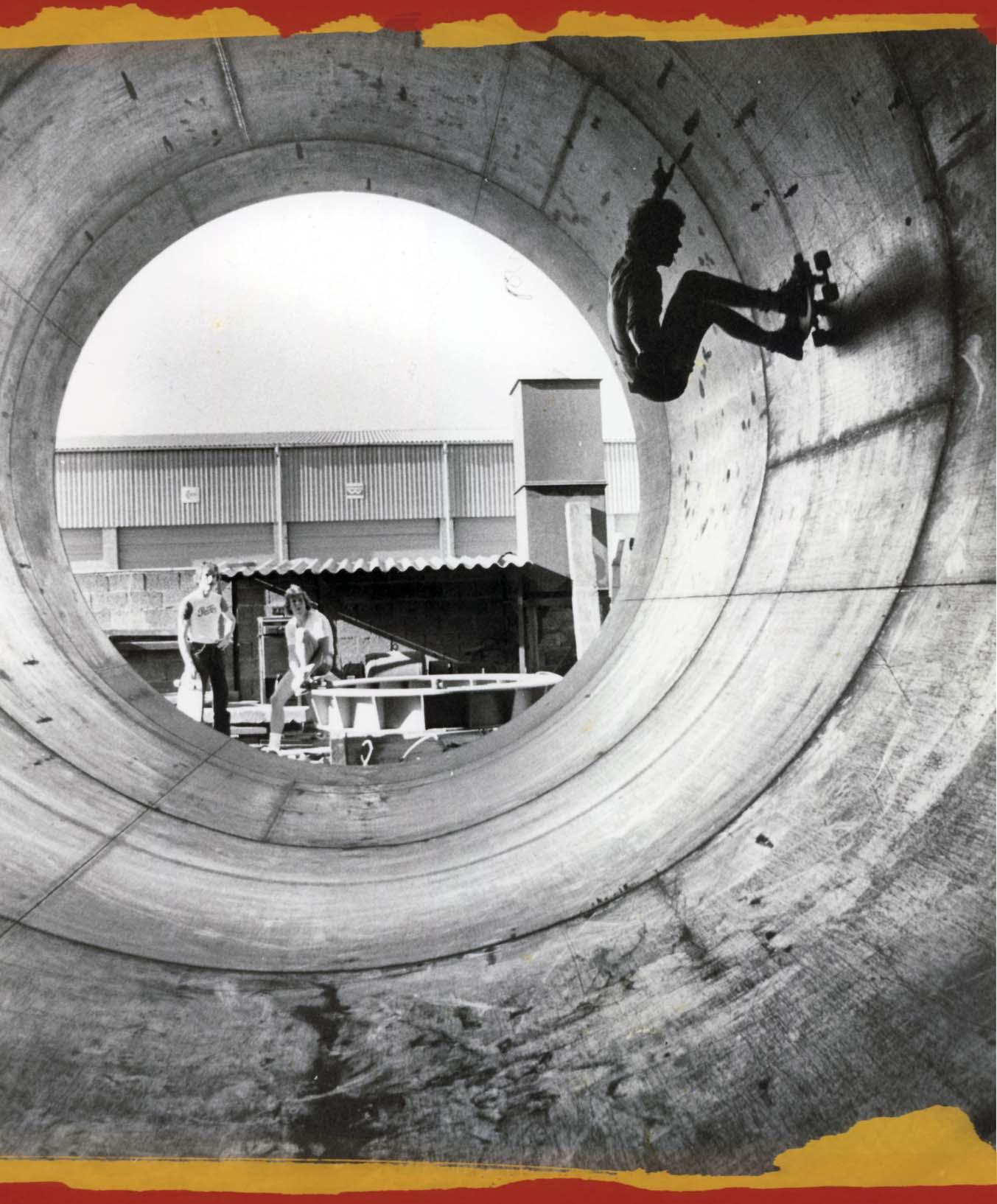
82 CONCRETE WAVE SPRING 2008
Gary Smith, Joburg Pipe
Photo courtesy Gary Smith
— who travelled to many US trade shows — reckons could have beaten most US or UK guys at the time. A 1978 UK annual “Skateboard” documents another Cape Town skater, Peter Clark, as holding the Guinness World Record for downhill skating speed — at 66.5 mp/h — that year.

However, apart from the Joburg and Durban crews, which were less than a day’s drive apart, the country’s skaters didn’t ever really travel locally to compete against the other guys (and girls) in a comprehensive national championship. By many accounts, at the time in Durban there were a handful good skaters such as Rob Custance and Dave Knutsen, but the two Garys, Smith and Stephens, and Brian Gilham ripped the hardest, or at least, they say, got the most money to do so. Gary Smith himself credits Joburg skaters of the time such as Archie Graham and the Van Zyl brothers as being tops.
Smith also recalls how by then he paid by Pepsi and other corporate sponsors to tour and do skate demos on a portable quarter pipes and over-vert fibreglass ramps. Smith also appeared with Chris Chaput on the cover of US skate mag Wide World of Skateboarding in 1981, and is rated by some of his more reliable peers of the time as being as good as the overseas pros. He was also one of a few skaters riding pools during the late ‘70s, as these were being drained all across Durban.
But whilst Smith and others did travel to Europe occasionally, none had ambition to compete in the US. “We were so comfortable being paid to skate here,” he smiles. Notorious wild child Gary Stephens, put off by local politics and erratic contest judging, in turn shunned contests Jay style, and became a


full-time demo skater as resident pro of the newly opened Solid Surf concrete skatepark in Honeydew, Joburg. Stephens also appeared in TV ads and had his own signature deck on Alpha for a short time.
In 1978 a visit by US pro Chris Chaput bolstered the scene, and there were more SA champs and comps held in Durban and at the brand new concrete bowls of Cresta skatepark in Joburg. Some believe mass-produced Pepsi skateboards signalled the beginning of the end of the ‘70s skate boom though, as they flooded the market, driving the legit manufacturers and importers out of business. Politics and sour deals, involving both those inside, and sharks outside skateboarding wanting to cash in, and a currency rapidly plummeting in value, further contributed to the decline.

By the end of the summer of 1982, just as skateboarding was starting to pick up again in the US, the talented riders and the genuine promoters of South African skateboarding had burned out or been bankrupted. All the parks had closed (or in Cresta’s case, become a waterpark/roller-rink) and South African skateboarding went into a deep slumber, in fact a coma, where it stayed for a few years, until the next wave broke on our shores.
The 1980s
Who actually first ripped up the fibreglass at Cresta and rekindled skateboarding’s African fire is lost in time. Most heads from that time agree that skaters such as Brad Napier, Pete Furneau, Brett Wolmerans, Haldane Martin, Mike Burrell and others pioneered skating at the now dilapidated Cresta from about 1984, and carved its lovely, smooth transitions almost daily. From this isolated talent pool, came many of the best skaters of the next boom, including a few groms who would dominate the contest scene.
The period to follow was one of rapid progression for both ramp and early street. All-time SA legend Brett Wolmerans could ollie over almost anything, and the tranny dogs were learning new tricks all the time. UK ex-pat Pete Furneau then brought the boys a copy of the now classic skate film ‘Animal Chin’ in about 1985 and from this the Cresta crew learned all the basic grinds, rocks, stalls, handplants and air variations.
In the beginning most of their equipment was either home made, although a few managed to get hard goods from overseas, brought in by those lucky enough to travel, or by mail order, which was still pretty expensive and available only to the most cash flush. Future skate champ Sven Martin, Haldane’s younger brother, recalls this vividly. “It went from Variflexes to maybe five American skateboards in the country and we made them last like maybe a year and that was like with Gullwing trucks and Ratbone wheels,” he laughs.
Sadly, it became necessary for the Cresta skaters to look further afield for transitions as the old park was eventually levelled to make way for a mall. Luckily some of them found an empty pool in a field next to a highway in Joburg. Sessioned in the ‘70s, this was the Banana Bowl, and it quickly became the next de facto training ground for the late ‘80s rippers.
“You couldn’t skate it like a proper pool with lines,” remembers Sven. “So we had to build up the shallow end and it was super kinked and rough and eventually we bowled out the whole shallow end and used to skate back and forth like a ramp.... that’s how we learned to skate.”
Around this time skating had begun to grow to the point where all the other skaters of South Africa began to gravititate. Out at a bowl in a town called Vereeniging, a core skate posse, including SA legend Joe Megan, were skating hard. In Pretoria, an hour or so to the north of Johannesburg, skaters such Alex Rodrigues, Rueben Kinsella and Alan Buekman were also building ramps and skating in the city’s wide streets.
SPRING 2008 CONCRETE WAVE 83
Russel Addinal, Long jumping, Capetown Photo: Peter Wright
Concrete Wave Skatepark, fish hoek Photo: Peter Wright
Down at the coast, in Durban, a small skating clique had begun to appear again on the beachfront, and some were emptying pools around the city. Before long, the Joburg and Pretoria and surrounding crews had begun to hook up with their coastal cousins, especially during school holidays, which were often the first chance many of them had to see how they had progressed in the months between. More and more regular contests were held in Joburg and Durban, where one of the first events of the
late ‘80s was held at a surf expo and won by Cresta OG Brad Napier, with lone ‘70s remnant Dave Knutsen in second.
Many of these early contests were initially sponsored by surf companies Island Style and Surf News, who also built a ramp at an inland city called Pinetown, the location of many big events. Skaters were by now scoring decent equipment, imported individually from overseas and increasingly through surf shops. Watch brand Swatch then came on board as a major sponsor and provided the cash for a deluxe, four sheets wide, six feet high mini ramp built by Haldane, with Cresta kid Eben Combrinck taking the first ever SA mini ramp title at a jam in Umhlanga, just outside Durban, in 1988.

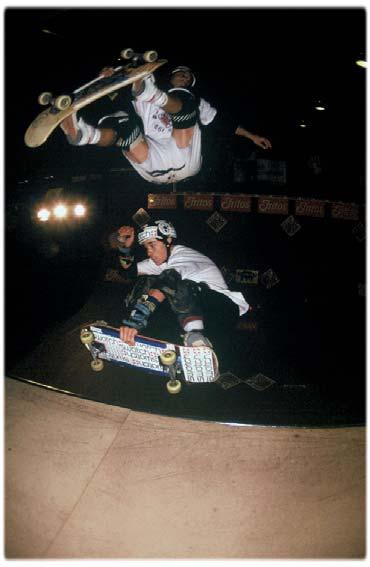
Stalwart Durban skater and promoter Peter Webb, who also produced the country’s first skate movie “Taking out the Trash”, then went on to form the influential organisation, “Skater’s Alliance” the same year, with core members

centives, including Eben Combrinck, who rode for surf brand Quiksilver; and Peter Furneau and Sven, who rode for Swatch. In fact, Sven arguably became the closest to achieving “pro” status during the late ‘80s, as he signed a deal with Swatch that rivalled the brand’s international contracts. Along with his incentives, Sven, now a pro mountainbiker and photographer in the US, recalls making a fortune, “if I won a contest, the prize money was up to R3000, which was a lot in those days,” he grins.
Sven’s bro Haldane, by now working with Island Style, had been experimenting fairly successfully with making his own boards even back at Cresta, then came close to getting being the first South African skater of the era to get a signature deck, only for the surf company to baulk at the logo his girlfriend designed. “It was a freaky sketch of a dysfunctional family and it was too disturbing (for them),” says Haldane “and I quit a few months later.”
such as Pete Furneau, Brad Napier, Haldane Martin, Brett Wolmerans and Rory Mcleod. They were instrumental in organising more events in Joburg and Durban and had their own series rankings and coverage on television, newspapers and in Zigzag surf magazine.
Thanks to the efforts of Webb et al, the Durban scene flourished, with skaters such as Mike Kleynhans, Randall White, Rory Hines, Brenton Dawber, Brett Lazarus and Warren Chapman leading the charge, although not at the pace of Joburg skaters, who began to dominate most of the comps. Of course, in the beginning everything was totally amateur, with product prizes and endorsements the only rewards. “You couldn’t make a living from it unless you worked in surf/skate shop,” says Webb. But a few top skaters eventually began to go on sponsored trips to events and demos, including Sven, who went on a national tour with the country’s first overseas visiting skate team – the Zorlac tour of Steve Schnier, Peanut Brown, Aaron Dieter and Damon Bird — in the late 1980s.
Slowly a few of the best local skaters began to earn good cash from contest winnings and in-

Whilst there were smaller scenes developing and ramps being built in coastal towns in between, Cape Town had also redeveloped a movement of its own. Again Peter Wright and The Corner Surf Shop were a big part of this. Wright began importing gear again, and extended his surfboard label, Southwind, into a popular line of locally made skateboards. He also built a vert ramp in nearby Fish Hoek, and formed a skate club. Pushed out of the conservative suburb of Fish Hoek by “mother grundies’ who thought skateboarding was Satanic” (a sentiment echoed by much of the establishment in Apartheid South Africa), and misappropriated club funds, Peter eventually sold the ramp and it was moved across the peninsula to a small suburb called Sun Valley, where skaters such as Carl Treurnicht and Lyle Bowditch ruled.
Through the mid-1980s some of South Africa’s first talented non-white skaters, including the infamous Errol “Bong”, and Andre “Arnie” Lambert, who hailed from the poor “coloured” areas of apartheid divided Cape Town, came to the fore. Initially totally cut off from everyone else, they had their own style of skating, a curious mix of ‘70s freestyle and contemporary street and ramp (Bong even won a throwback freestyle contest in Cape Town as late as 1990).
Eventually though, they were welcomed into to the non-racist surf/skate scene in Muizenberg, and sponsored by various surf, skate and mainstream brands and worked in The Surf Centre in Cape Town city (which for a time had an indoor mini ramp in the late ‘80s). Along with other sponsored local white skaters such as
84 CONCRETE WAVE SPRING 2008
Sven Martin and Peanut Brown
Photo: Skate Edge Archive
Steve Schnier
Photo: Skate Edge Archive
Sven Martin Look Ahead Ramp Joburg
Photo: Skate Edge Archive
The 1990s


Of course, not everyone stopped skating. A new generation, including the younger ‘80s guys (such as Sven) who made the leap to street, were inspired by overseas skate flicks such as HStreet and the Blind videos, and US magazines, which were much more widely available than ever. Boogaloos continued to promote skating on a much smaller scale through these years and national events — such as the 1992 SA Champs at the Waterfront skatepark under the shadow of Table Mountain – continued.
Skate products were also still obtainable, although at a price. A few skaters also began importing blanks and creating board labels. Peter Webb formed “Forbidden World Skateboards”, and Ben Bergh – who later became one the country’s leading skate photographers — was involved in forming” Fraud Skateboards” in Cape Town.

Carl Treurnicht (who some say was the first to bang a handrail in SA) and Russell Lloyd, Arnie and Bong also toured the country with portable ramps, on the payroll of restaurant chain, connecting with skaters countrywide.
Skaters Alliance teamed up with Peter Wright and surf promoter Paul Botha form a series of skate events in Sun Valley. These still included slalom – dominated by ‘70s ruler Russell Addinall, which goes to show how far behind we were in some respects. The vert ramp here was then skated that same year by Tony Hawk, who toured South Africa with Ray Barbee, brought out by Joburg skatepark owner Keith Broad.
Back in Joburg, with its numerous facilities, backyard ramps and street spots, had become the strongest force overall in SA skateboarding. At “Look Ahead”, a park in Sandton built by Broad, the next generation of top SA skaters was fostered and bred, including Greg Munnik, Greg Finch, Dallas Oberholzer, Jason Swanepoel, Brendan Body, Adrian Day, Martin Kacev, Mare Badenhorst, Louis Peixoto and Lani van der Walt (to name but a few).
Around this time Mark and Gavin Powell of “Boogaloos Distribution” put up a vert ramp at their skatepark in Bruma Lake. SA vert blaster Mare Badenhorst recalls this venue as being of the genesis of formal ramp and later vert and street events in South Africa. “Competition was always tight with Sven Martin, Dallas Oberholzer or Greg Finch always taking the bacon. I
remember one vert comp where we had a highest air comp and Sven did a stalefish seven feet out of the ramp. Sick!”

Ironically, the hype generated by Tony Hawk’s visit had meant local authorities and business entrepreneurs built even more vert ramps – including one at the short-lived Umhlanga “Rox” skatepark in Durban, as well as many other shocking wood and concrete “white elephants” — just as interest in ramp skating trailed off overseas, and skating moved to the streets.
As in the US (again, a few years behind), the older skaters who couldn’t ollie packed it in — or emigrated to avoid the army, as many were forced into conscription — and thus any chance of a pro vert scene flourishing any further in SA was cut off at the knee pads. At this time the world’s revulsion at apartheid had begun to peak, and thanks to economic sanctions, the rand had begun to dip to record lows, making imports increasingly difficult.

The first incarnation of a countrywide skate body, the National Skate Association (NSA) had been formed in 1991 but as quickly it disbanded as the scene died. These rapid changes also brought about the demise of SA’s first skate mag “Skate Edge” which was run at the era’s peak for about five issues, by Haldane Martin and Durban-based Zigzag surf mag, before it suddenly folded too.
With it, the South African ‘80s skate scene slipped quietly into obscurity as the boom went bust all over again.
Through 1993, the contest scene retracted to its various regional HQs — in Joburg, where Boogaloos various parks became among the only venues for much smaller, localised events; Pretoria, where a park called Thrashers had opened; in Durban, where Peter Webb continued his tireless promotion and Island Style had built a mini ramp; and Cape Town, where Bong had opened a tiny skate store and various other sport stores and skaters tried to keep things alive.


SPRING 2008 CONCRETE WAVE 85
Russel Addinal, Capetown
Photo: Skate Edge Archive
Errol Bong
Photo: Skate Edge Archive
Sherwin Brussouw in Durban
Photo: Jorik Blom
However, it wasn’t until 1994 and the freedom of a “New South Africa”, with revitalised trade, that international skate products and magazines slowly became more affordable, and the first generation of South African street skaters could really begin their rise to prominence. A few years later, in 1996, 1610 Distribution was founded by Sven and Joburg skater Clayton Petersen in order to bring in further brands from the US and Europe — and divert some of Boogaloos’ overwhelming monopoly back into skateboarder’s hands.
The Powells, who never skated, were often criticised for making money from the scene and accused of exploiting it – although, to be fair, without them it would never have grown to what it is today. A national event was also held at the Waterfront in Cape Town in December 1996, and was won by a local street skater, Roger Coyles.



Then, two crucial things happened. Zigzag surf magazine, along with this writer, started blunt magazine in March 1997 — a surf/skate/snow/music publication inspired by the likes of Transworld’s Warp, which featured Coyles on the cover. Whilst the scene at the time was way too small to even consider a skate mag, this largely surf industry-supported crossover magazine arguably gave skateboarding the exposure it needed at the perfect time.
Then in December of that year, Boogaloos brought in the first international skate team since Hawk and Barbee. Chad Muska, Ronnie Creager, Bob Burnquist, Jamie Thomas, Geoff Rowley, Rune Glifberg and photographer Atiba Jefferson, skated all over the country (including
an unforgettable session in the forgotten gem of South African skateboarding, Joburg’s Germiston Bowl), and a subsequent feature in TWS announced South Africa’s sexiness as a skate destination to the world.
Arguably, thanks in part to this tour and to blunt’s continual coverage of the scene, South African skateboarding began to regain popularity and the level of local skating began to improve. Travis Anderson formed another skater-run distro company “Skates For Africa” in Joburg, and local skate events became more
frequent and attended by more skaters from all over. Joburg skater Dallas Oberholzer, who grew up skating Germiston Bowl, also reached the qualifying rounds in Slam City Jam in Vancouver in 1997, placing above Muska, Rowley and Andrew Reynolds. “I left so stoked, knowing that our isolation in SA doesn’t mean shit,” he said of his achievement, the first international placing in a modern skate event by a “Saffa”.
In 1998, after local skaters marched on City Hall and got funding, and with Island Style and Playstation built an indoor skatepark in Durban and where they held the Winterslam event (this was an annual underground contest started by Webb years before). Street was won by a young Durban skater George van Blerk, with Nik “Snoopy” Mavian second and slightly older Durban scene mainstay Andrew Morck third. Morck, who had been skating the city’s streets since the late ‘80s, also began work part time that year for Island Style, who had formed the skate brand “IS”. Together they began making skate shoes, the first South African company to do so. Morck would eventually work for them full time and design his own pro shoe under the label, the first such offering in SA, which was later followed by pro shoe models for both van Blerk and Mavian (who later achieved some success riding for Death Skateboards and DC shoes as an am in the UK).
In December 98, a young Cape Town skateboarder Christi Wiehahn built a skatepark, funded by his parents. Christi had been dominating South African street events for a few years, but here he was able to practice unhindered by the bust factor so prominent at the time in Cape Town, and with his burly but tech approach to all terrain and insane style, quickly became widely regarded as the one of, if not the best skateboarder in the country.
Although Christi’s park soon closed, as the 1990s drew to an end, the South African scene continued to move forward. Red Bull put on the first DHX downhill skateboarding race in Cape Town, won by Stuart Bradburn, and there were a number of international tours from the likes of Vallely, Templeton, Koston, McCrank and others, which lifted the standard even further. Street skaters such as Christi, Adrian Day, Gavin Morgan, Clint van der Schyf, Andrew Morck, Brendan Ryall, Mike Sutcliffe, Sven Martin and a legion of others too numerous to mention here, held their own during these overseas tours and the levels began to catch up with the international standard.
Yet despite some good sponsorships and incentives for a fortunate few, prizes at events were

86 CONCRETE WAVE SPRING 2008
Andrew Morck, IS ramp late 90s
Photo: Jorik Blom
Rune Glifberg, Germiston Bowl 97
Photo: Miles Masterson
Randall White, Durban beach,circa 98
Photo: Chris Van Lennep
still product dominated and most full time “pro” skaters still worked regular day jobs or in various guises in the surf/skate industry. There were also no real successful attempts made at starting local board companies and thus no pro models.
Surviving intact through the 1990s, South African skateboarding had evolved considerably, but it still had a long way to go.
The ‘00s

Somewhere around the turn of the millennium, Greg Finch became the first South African born skateboarder to get a pro model board — on Reaction in the UK. Greg, who had emigrated in the mid-‘90s and was also eventually hooked up by Emerica on their European team and featured prominently in Euro skate mags, humbly underplays this achievement though. “The hook up was good,” he says, “But I don’t think it’s like going pro on say Flip or something.” However Finch, who later went on to open a skate shop “Cides” in London, became the pride and inspiration of many skaters back home.
2000 also saw the second Red Bull DHX downhill event. French former snowboard racer Manu Antuna won the stand up, with Dallas Oberholzer second. This DHX was larger and more professional than year before, and included a vert ramp at end of the course, with demos by Phil Hajal and Sandro Dias, which blew the public away. The top skating speed was clocked at 105 km/h and South African downhill skateboarders begin to enter the top 10 of the international rankings.
In 2001 Dallas attended the Aussie X-Games in Melbourne and got a fifth in downhill and qualified for the vert final. He also later qualified for the downhill final at the Gravity Games, and the following year began the Indigo Skate Camp, among the rural huts of Kwa-Zulu Natal near Durban, another first for the country. Joburg skater Adrian Day and Sven then began importing goods under the banner of Eminence Distribution, and Clayton Petersen and Gavin Scott started Revolution Distribution, bringing in more US brands. They also started KFD skateboard company, the first such local venture in almost a decade — although despite having a number of the established and upcoming SA skaters on their team, they still didn’t feel the ambition to create signature decks.
Quality skateparks began popping up all over the country though, and more international teams visited SA, such as the DVS pro team of Keith Hufnagel, Steve Berra, Keenan Milton (RIP) and Slap’s Lance Dawes, who attended the opening of Boogaloos’ giant Cape Town

skatepark. In December 2001, the Wave House skate park in Durban was also officially opened. Tony Hawk (who had a hand in designing it), Chris Miller and Andy Macdonald skated the snake run, vert ramp and kidney pool. One session at the latter was dominated by Dallas O, prompting the overseas pros to ask “who is that guy?”. That same year Christi came 11th at the UBI Osiris World Cup in London, the highest place ever by a Saffa at an international street skating event.
But despite support from local and international skate and surf companies, and a smattering of local board start-ups, South African skaters still didn’t have pro decks. This changed in 2003, when Cape Town skater Donovan Winterburn, along with a non-skate business partner, formed Viking Skateboards and brought out pro models for a group of Cape Town skaters, among them South Africa’s first black “pro” skater, Whandile Zulu.
Winterburn, frustrated with the lack of

SPRING 2008 CONCRETE WAVE 87
Braxton Haine, age 12, at aparthied monument
Photo: Miguel Howell/Red Bull
progress in SA pro skating, cited the Australian DIY ethic as his inspiration. However, as none of the Viking “pros” ever really achieved much in the local competitive scene (besides mad popper Arnie Gray, who was a perennial highest ollie champ), and most South African skaters scoffed at their attempt and considered Viking an embarrassment to the industry. The derision became so loud that the talented Whandile –probably the most deserving of all of them –soon bailed on the scene and Viking folded soon after. Another local board company, Psycho — who ploughed big cash into developing locally made aluminium composite boards — also appeared around this time, funded by a non-skate businessman, with Mare Badenhorst and young black skater Will Twala as team riders, but they soon went the same way.
In fact, at the time South African skateboarding began to wobble as personal infighting and regional politics between the core skaters, and the surf and non-skater driven business elements in the industry, threatened the sanctity of the scene in some sort of weird inwardly destructive, small town-type syndrome. Nevertheless, despite the closure of some parks, more facilities began to appear — thanks mainly to Boogaloos and a few visionary local councils in places such as Durban, who funded a public beachfront park. The second incarnation of the NSA was then started by Cape Town skater Chris Mostert, and created a fresh countrywide skate series, finally giving the local competitive aspect some badly needed cohesion.
Cape Town based skaters Jeremy and Chris Farber then produced a series of skate movies,



88 CONCRETE WAVE SPRING 2008
Whandile Zulu, Capetown 2003
Photo: Miles Masterson
Kogelberg Downhill Race 2002
Photo: Miles Masterson
documenting the manic street SA skating scene, and later started distributing goods and hardware and opened a store under their “SPF” label. In Joburg Clint van der Schyff also produced the widely popular “AV Skateboarding” videos and his long time friend, business partner and OG Joburg skater Brendan Body began “Session” skateboarding magazine, much to the delight of SA skaters.
Thus, despite its challenges, at the end of

chaos had fostered on world trade and our exchange rate, and was looking for something new. However, despite bringing out a movie “Bang Chong” last year (which received a positive review in TWS recently) and having the skaters of the caliber of Clint van der Schyf on their team, Familia didn’t bring out any pro models either.
“With me and Gav owning the company and then being the primary riders,” says Day, “We
overseas markets and industry and when there are guys out there destroying it and not getting anything out, it seems a little self-serving.” However, recently Familia did bring out three signature models in their “Homage” series for ex-pat rippers Sven Martin, Mike Sutcliffe and Greg Finch. “It was just our little way of paying some respects to those dudes who influenced us,” explains Day. “We also did it for SA kids to know that these dudes opened up a lot of progression for (South African) skateboarding.”
2003, and into 2004, the skate industry had In South Africa had become quite robust and was also making a bit of noise overseas. Travis Anderson, who had long since sold Skates For Africa to Surf Centre in Joburg, had started his successful clothing and board company “Iron Fist”, which won the best new clothing brand accolade at the London Urban Games. Dallas won best trick on the mini ramp at a San Diego trade show and Christi famously one upped Arto Saari in California by backlipping an 18stair handrail before Arto did, and accordingly became the first homegrown Saffa to get a Check Out in Transworld Skateboarding. Fellow Capetonian downhiller Stuart Bradburn also became the IGSA world Downhill Champ, putting our downhill scene firmly on the world map, where it has been ever since.

But despite becoming a regular stop for international street skating tours, including the likes of Mark Appleyard, Reese Forbes, Alex Chalmers and Tony Hawk’s and Mike Vallely’s third visit and Bob Burnquist’s second, and large numbers of local sponsored skaters and tours, South African still didn’t have any “pro” skaters to speak of.


In 2004 Adrian Day and Gavin Morgan started “Familia” Skateboards. Day had buried Eminence due in part to the effect post-9/11
felt a little uncomfortable with doing that. It makes very little financial difference and we just didn’t want it to feel self-indulgent. We also have always compared everything we do to the
Around the same time, Farber brothers teamed up with Christi (who many feel could have cracked it in the States, but instead chose to stay in his beloved Cape Town) to form “Mischif” Skateboards. The company featured the first contemporary pro models for SA skaters in the form of Christi Wiehahn and Cape Town sensation Alan Marola (who recently came fourth in a Dubai X-Games Invitational). Iron Fist also released pro decks for Durban skaters George van Blerk and Zulu Sandile Maphumulo, and KFD, whilst not having any signature models as such, still produce a series of local decks. By all accounts these companies have all been well received by the current generation of young South African skateboarders, and their board sales rival those of foreign imports.
Whilst some in the South African skateboarding industry and scene reckon things are solid these days, just as many feel there’s still too much political infighting and bickering. Admittedly, skateboarding here has only recently become 100% professional the true sense of the word, and its fortunes continues to ebb and flow with the rest of the world skate scene and economics. The reality is that with only a couple of thousand skaters, South Africa will always be small compared to elsewhere. But with hundreds of exceptionally talented youngsters of all races dedicated to skateboarding, who knows, maybe someday one of them – like child prodigies Braxton Haine and Moses Adams — will be the first South African to get a signature board in the US and become our first real international pro?
Until then, skateboarding will roll on here at the tip of Africa regardless, the way it always has, since before Bunker’s day.
SPRING 2008 CONCRETE WAVE 89
Christi Wiehahn
Photo: Miles Masterson
Dallas Pool Smith
Photo: Miles Masterson
Next Generation
Photo: Miguel Howell/Redbull
Chris Miller Catching up with
Cboarding moved from the backyard pools and propelled itself into the new genre of big deep pools. Chris came from the Badlands and had both style and power. I skated with Chris quite a bit back then and now, more than two decades later, he still retains an effortless grace when he skates. But it’s more than just style – Chris is a very powerful skater. I relate him to as a Maserati or a Porsche. He is a skateboarding icon of speed, style and control. Chris has been a huge part of skateboarding for over 25 years… still a down to earth person and pretty much the same quiet type except for his skating.
Chris was originally sponsored by Santa Cruz. He then moved to G & S and Gullwing. Following this, he went on to have an incredible successful pro model with Schmitt Stix. The upturned nose with a unique dog graphic underneath sold in the many thousands. Eventually, Chris went on to form his own company, Planet Earth and then Adio Shoes. His skating now is even better than in the 80's heyday. Dominating the last three Pro tec Contest's, announcing at the X Games and creating new companies - Chris is at the top of his game and the skate world is lucky to still have him.

Steve Steadham: What inspired you to start skateboarding and when did you start?
Chris Miller: I started skating when I was about 10 years old. My older brother Carter always had skateboards and we used to ride up and down the sidewalk in front of our apartment. Eventually, I just started focusing in on it and
1977-79 and the surf/skate culture was certainly an influence, we used to draw Dogtown logos on our folders at school, and wear Vans and T&C shorts. I loved the Dogtown documentary because it shined a light on the era in a way I never understood as a kid.
What did the Badlands persona do for your skating?
After my parents split up I moved with my Mom out to Claremont and started skating at Pipeline Skatepark in Upland. It was really my first skatepark experience and I loved it. Pipeline was paradise to me. I became friends with everyone there and it was my home away from home, I was there almost everyday from 1980 though 1986. The terrain as a lot of people know by reputation, was very challenging to skate. I think this helped define the style of skating that personified the Badlands. Salba, Malba, Dunlap, Kevin Anderson and others that mostly came before me were all gnarly, committed skateboarders. When we were kids Salba would kick us out of the pool if we wussed out on dropping in or learning a trick. I can remember wanting to drop in on the hip of the combi and I put my board down to try, but got scarred and lifted it up. After a couple of those, Salba gave me the boot and said I couldn’t skate the pool until I did it. So, I went around to some of the other bowls and dropped in and then came back and did it. I don’t want to make it sound like he was mean to kids, ‘cuz he wasn’t. He was like the king of the park and you wanted his approval, he just pushed all the kids in a tough but good way.

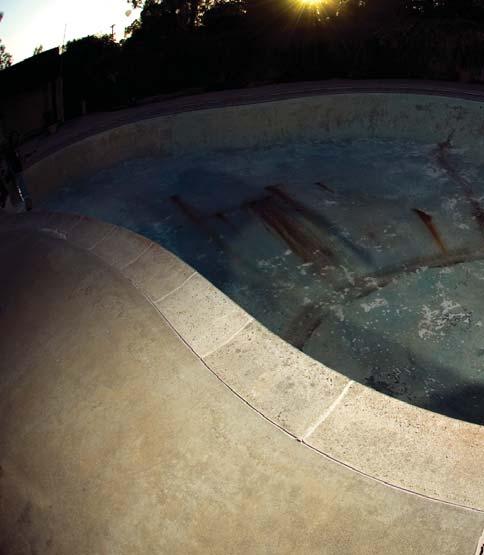
What skaters did you like to skate with and why?
Salba of course, and the whole younger crew
from Pipeline particularly Erik Jueden. He was just so good and had great style even as a little tiny kid. Also during that period we started going to all the other so cal parks like Del Mar, Whittier and Marina. I became friends with guys like Grosso and Nash, Neil Blender, Lester, Tony Hawk, Christian and Lance. The skate scene in so cal at that time was like one big extended community, it was a lot of fun.
Did you have any skaters who were like a mentor for you?
Salba for sure, and Neil Blender later on. Neil had such a unique view of the world and was the person who encouraged me to design my own graphics and helped me be more creative in my life.
When was your first Pro Contest? How did you do?


My first pro contest was Del Mar in 1985. I think I got last or second to last, me and Lester were bringing up the back of the pack there. One of us got last, I can’t remember now but I know I did badly.
What do you think about the Mega Ramp?
The mega ramp is amazing. Danny Way really took skating to a level that was unprecedented and pretty shocking at the time his video part came out. I have seen the mega ramp develop over time with Andy Mac’s first long jump thing and then the Havasu contest where more people got to try it, and then came Danny’s first version for the King of Skate contest. But even being around for all that didn’t prepare me for
90 CONCRETE WAVE SPRING 2008
Danny’s video part on the next generation Mega. I was just blown away. After that came out I did get to skate his ramp and the first time down it was the scariest feeling I have ever had in my life. Your brain has never felt a feeling so wrong and dangerous! Of course it does get easier the more you do it, but I have nothing but respect for Danny, Bob, Jake, PLG and all the guys who are doing it now and taking it beyond what was imaginable only a few years ago.
Who are currently your favorite skaters?
My favorite skaters now are Rune Glifberg, Bucky, Bob Burnquist, Jake Brown, Buster, Peter Hewit, and my son Zach. I like them all for different reasons, but I just find all of these guys really enjoyable to watch because of their style and approach.
Do you like contests?
From the perspective of feeling pressure to perform, no. But from the perspective of hanging out and skating with friends that I don’t always get to skate with, yes. I am also a fan of watching contests because you always see some amazing skateboarding happen.
What about the escalation of skateboarding’s popularity in the mainstream?
There are good and bad aspects to it, but in my view it’s a natural progression that is ok. What’s important is that we preserve and maintain the essence of skateboarding and the culture that brought us all into it. Skateboarding has always had music, art and fashion as a big part of it and

I think it’s important to honor our roots and nurture the future no matter if there are 10,000 skaters or 10,000,000 skaters. If skateboarding gets dropped by TV, I’ll still be skating, but I might have to find work in some other industry. So I guess I am glad it’s big because it’s created a lot of opportunity and vitality for lifelong skaters like myself.
What’s your perspective on street skating? Do you street skate?
Skating transitions is my favorite form of skating and I would rather do that than street skate. If I am going to skate something other that one of the perfect modern parks that are all over these days it will be a backyard pool or ditch. However, modern street skating is incredible and I am a huge fan what guys are doing now. Marc Johnson’s part in the Lakai video was exceptional and so was Silas Baxter Neil in the Habitat video. I am really into all the variety of terrain that skaters are riding these days and am happy to see it move past just stairs and ledges. The best skateboarding is multi-dimensional.
What are your inspirations to skate and get better today? Did you ever think you would be skating with all of us in your forties? There is just nothing else in the world that gives me the enjoyment that skating a pool does. I love surfing and snowboarding too, but skating is just the best for me still. I never thought I would be skating at 40, but I never thought I wouldn’t either. It just didn’t occur to me when we were 20, I wasn’t really worried about it.
How do you like what’s going on with vert skating? The level has become truly insane. I love vert skating and I love how small of a scene it is too. It’s funny, but the fact that not so many people can skate vert, and that makes it that much more special to me. What’s really amazing is how far the current group of skaters have taken it. It’s pretty incredible.
Skaters like Danny Way, Tony Hawk, Shaun White, Bucky Lasek, PLG, Bob Burnquist, Alex Pearlson and Ryan Sheckler have taken skateboarding to new heights. What are your thoughts on where they have taken the sport to? We all know where it’s been and there have been so many amazing things done but, I am more excited about where it can go. Shaun White, Alex Perelson, Rob Loriface, and Jean Postec are the next generation of vert pros and I can’t wait to see where they go with it. Shaun will make 1080’s, Alex may do things I have never thought of and Rob may do rodeo
7’s on mega… who knows, but I am excited to see it happen.
Where do you see skateboarding headed?

A new generation of skaters who are growing up skating perfect skateparks will take it places we never thought possible.
What tricks do you want to land or create?
I’d like to do nose blunt slides again. I did ‘em a long time ago on vert and haven’t tried them for like 10 years. But I was just watching Bucky do them and it made me want to try them again. I would also like to do Mc Twists again, It’s been a long time on that one as well. Other than that, just watching the Lakai video got me inspired to think about doing good lip trick combos on vert and pools. But pool coping pretty different than a marble ledge so some of that is just fantasy for me.
How did you come up with the name Adio? How is running Adio shoes changed your life? The name Adio came out of a baby name book. It’s an African name that means “be righteous”. It also is an acronym for a principle chiropractors use that stands for Above, Down, Inside, Out. In the end, we picked the name because we liked the way it sounded and looked, not really for those meanings. As far as running companies and working in the skate industry, I am thankful to be able to do this for a living. I have always been a creative person and been into art and design, so if not for being an entrepreneur I would probably be doing that in some other field. However, I have been blessed with the opportunity to create something from nothing and develop it into a reality that has become a huge brand in the industry. It’s been fun and challenging and has made my life more fulfilling.
You participated in the first X Games Legends Event, what did you think about it? You skated with your long time friends, Caballero, Peters, Kasai, Hawk, T-Mag, Schroeder, Staab, Hosoi and myself. Was it weird having a session with all of us?
The best part of contests is getting to skate with friends that you haven’t seen in a while or you don’t get to hang out with regularly. Also for all of us we’ve been friends for 20 years, so it was pretty cool. So thanks for organizing that for us!
You’re so welcome and I am so blessed to be here and part of the industry again. Skating is the raddest sport in the world… peace.
Catching Up brought to you by

SPRING 2008 CONCRETE WAVE 91
DYLAN FOLLEY
WORDS: MALAKAI KINGSTON PHOTO: SERGIE MAGDALIN

I’ve had the honor of knowing Dylan Folley for a few years and first met him at the Outlaw Ranch. As he was shredding the halfpipe, I met his dad Lance (a.k.a. Skate Santa) who waxed about how stoked he was that his kid was such a ripper. Sure, it’s typical skate dad talk, but the anything-but-typical li’l shredder I met that day is deserving of the respect. Dylan has grown into a full-fledged multi-disciplinary shredder. Hitting anything he can, he is taking podium after podium. Traveling the country in 2007, Dylan has taken 1st in TS, 1st HS and 3rd PS in the Juniors’ division at the Oregon State Games, 1st in GS and 2nd in TS (Juniors) at La Costa and 3rd at Slidefest in the open class. Although his accomplishments are huge, they are more understandable when you look at the list of people he has had the honor of riding with. He’s been influenced by Matt Wilson, Jesse Parker, Brad Edwards, NCSC, all the Gravity crew, Jamie Hart, Jonny “CCMF” Miller, Cliff Coleman, Ninja Bomb Squad and Sergio Yuppie. His favorite sessions are spent hitting Willits skatepark with his friends. He wants to thank his mom and dad and give Michael Bream a special thanks for all the support Gravity has given him.

CLEMENS
WORDS & PHOTO: CHRIS CLEMENS
Sean lives in Salt Lake City, Utah, and has reaped the benefits of a background in gymnastics, soccer and skiing, combined with a high density of local skate parks, to become a hot little skater at a young age (he’s currently 8). Although he has only been riding for about nine months, his natural talent has allowed the rapid progression of his skating ability, and he blows away some riders twice his age. He rides vert, transition and mini, and has a smooth, old-school skate style. Sean is comfortable dropping in on an 8 foot bowl, and can rip five-0 and 50/50 backside grinds with the best of them. He loves to carve and pump the bowls, has started doing backside air and has developed some innovative slide moves. Sean has no current sponsors and is not interested in competition at the moment, but would rather just skate for the pure fun of it. Sean got his dad back into skating after nearly 30 years off the board, and the two of them have fun skating together four to six days a week.

JAKE SELOVER
AGE 10
WORDS: RYAN SIMPSON PHOTO: SCOTT SELOVER

Skate, snowboard, play with the dog, play Nintendo Wii with friends, and sleep. Ah, the daily life of a 10-year-old – more specifically, the daily life of 10-year-old Jake Selover from Bend, Oregon. The crew at Gromfest first met Jake last summer at the Concrete Rodeo Finals in Battle Ground, Washington. He had just finished eating a box of mini powdered donuts and, with a ring of white dust around his mouth, dropped into the bowl, carved around on the walls and aired out the other side. “I skateboard because it’s really fun and challenging. I like going fast and doing big airs,” said Jake. “And skating with my friends is fun because we push each other to progress and get better.” And get better Jake has. One of his biggest wins came from the Concrete Rodeo competition where he won his age group and placed top 10 overall in a sea of over 100 competitors who had qualified for the finals. The wins and sponsors aren’t what skateboarding’s about for Jake, however. His passion, inspiration and drive all come from his friends in Bend.

ENZO CAUTELA
WORDS & PHOTO: TORI CAUTELA
AGE 10
Ten-year-old Enzo Cautela lives in Las Vegas, Nevada. He is currently sponsored by Herron Trucks and Las Vegas Boarding Company. Enzo is a technical street skater and a very capable transition skater. At 10 years old Enzo is already winning big competitions like the Vegas Am Jam and outperforming kids twice his age. Big gaps, giant drops and huge stairs really put a smile on his face. Recently, he did a huge shifty ollie down a 15-stair and kickflipped a monster oversized 10! In the coming years, Enzo wants to keep his focus on competitions throughout the country. He eventually wants to tour and skate professionally for many different companies. He plans to keep going higher and farther.
92 CONCRETE WAVE SPRING 2008
presented by AGE 12
AGE 8 SEAN
ANTONIO E. MOYA AGE 10
Antonio, a.k.a. “El Matador” and “Dr. Air” (first dubbed at the skate park by his friends due to Hispanic heritage and how he enjoys flying off ramps) has been skating for approximately two years. He skateboards a minimum of two hours per day (even after school) while continuing to maintain his honor-roll status at school. He is an accomplished golfer and drummer as well. At such a young age, Antonio maintains a great attitude, whether he wins or loses. He is somewhat fearless, but loves to have fun and enjoys showing off on his skateboard. Antonio and his family attend Camp Woodward West, the X Games, Mountain Dew Tour, US Open/Soul Bowl and the ASR convention every year. In addition, for the last three years, they’ve traveled all over alifornia, Arizona, Utah and Nevada attending competitions and visiting at least 30 skateparks throughout those areas. In 2007, Antonio placed either 1st or 2nd place at numerous skate contests in California and Arizona. Sponsors: RETAKS Backpacks, Skate City Indoor Skate Park, Go Fast Energy Drink.
ROBERTO GONGORA AGE 14
Roberto Gongora is a smooth-skating 14-year-old from Bend, Oregon, whose love for the sport is evident in everything he says and does. Roberto has been skating for three and a half years and has really excelled in the past year or so, mastering big lien to tails three feet out of vert as well as a variety of inverts and some big gap transfers. Roberto’s goal in life, like most young skaters, is to become pro. He is sponsored by the Local 5-0 (indoor skate park in Bend) and just got on flow with Rebel Skates out of Portland. His aggressive attitude and smooth style will take him far. His favorite skaters are Bob Burnquist and Bucky Lasek. Roberto also won the title of Most Improved Skater of the Concrete Rodeo series, which earned him a week at Woodward West.
ANTHONY ANAYA
AGE 11
CHRISTOPHER HERMENS
AGE 9
Anthony is part of the new wave of skateboarders that skate everything. He favors vert, bowls and transitions, but enjoys street, slalom and sliding too. Anthony’s skateboard influence came from his dad, and he started skating at 3. He started competing in contests when he was 9, and is compiling a list of top finishes that shows promise to only get longer. His sponsors include Powell Skateboards (flow), Bones wheels (flow), 187 pads, RETAKS, Pancho’s of Pismo Beach, Podium Distribution, and AnayaSports.com.

Although he’s been skateboarding for less than a year, this kid from Aloha, Oregon took quickly to the sport after his neighbor built a 5‘ mini ramp and various street transitions. Adept in vert and street, he enjoys 50/50’s, feeble slides, staple guns and BS/fakie rocks on vert while perfecting his flip trick repertoire on flat ground. He’s been featured on a friend’s skateboarding website and, though he hasn’t yet competed, hopes to be sponsored someday. His orthopedic surgeon father, now an avid deck collector, encourages Christopher but stresses the importance of sport safety. If Chris had his way he would be skating all day (but only after homework is done) at local skateparks Reedville, Beaverton or Newberg, or at the indoor Dept Of Skateboarding facility, depending on the fickle Oregon weather. Attesting to his rapid progress has been the rate at which he goes through boards, an average of every two months, so he’s a regular at nearby skate shops.



SPRING 2008 CONCRETE WAVE 93
WORDS & PHOTO: MARIO MOYA
WORDS & PHOTO: MICHAEL GOETZ
WORDS: MICHAEL FURUKAWA PHOTO: ANAYAPHOTOGRAPHY.COM
WORDS & PHOTO: BILL HENSLEY
Lisa Farrows
The charming Ms Farrows is as delightful as she is talented. Affable, with a wonderful sense of adventure, a twinkle in her pretty eyes, and always willing to give it a shot. Did I mention that she rips when she skates and she never hesitates? And I’m not talkin’ about rollin’ down the street either. She’s runnin’ cones and skating parks with the big boys. I personally watched her drop in on a halfpipe and wrench her ankle so bad that I thought we were hospital bound.
Now let’s talk about the artwork – rich and vibrant colors, bold themes, stunning details. It just flows through her veins. I’ve watched her take a marker and create absolute art at a skatepark, in full gear, between runs! Her painting style reminds me of an amalgamation of Shag, Godard, Paul Frank, Sam Gambino, Coop, and maybe a touch of anime.
Skaters have a love/hate feeling about her skate deck work – they LOVE the way it looks and they HATE that they hafta buy another deck to skate while they hang their Farrows board up! Curse you, foul squishy temptress!
What else can I say? She’s smokin’ hot, she can skate, paint, draw, climb, parachute, make syrup, and brighten any room she’s in – whether with her amazing artwork or just herself. Smitten? You bet I am!
— Fatboy
P.S: For a chance to win one of Lisa’s custom-painted decks email mbrooke@interlog.com by July 31, 2008

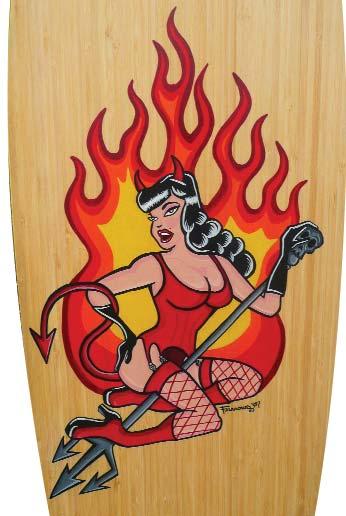










94 CONCRETE WAVE SPRING 2008
ART DEPARTMENT




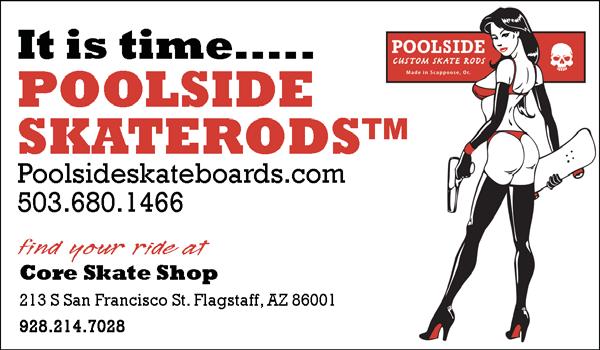



SPRING 2008 CONCRETE WAVE 95















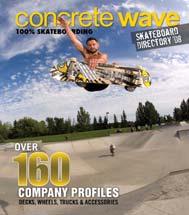




96 CONCRETE WAVE SPRING 2008 Name:Address: City/State/Zip:Email: Please send check for $26US made payable to Concrete Wave or international money order or PayPal mbrooke@interlog.com 5 ISSUES + BUYERS GUIDE = $26US International subscriptions are $32 US. Canadian subscriptions are $26 CAN. Send to Concrete Wave 1054 Center Street Suite 293 Thornhill Ontario, L4J 8E5, Canada. Please allow up to 8 weeks for delivery of your first issue. subscribe to
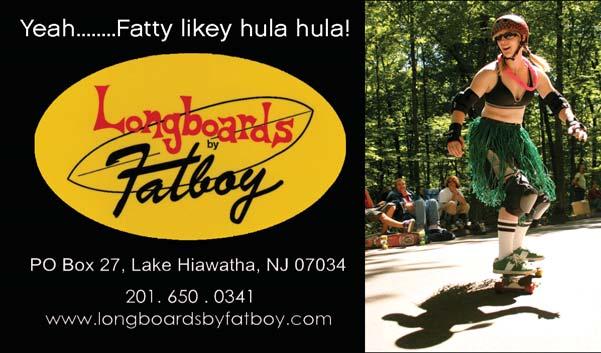



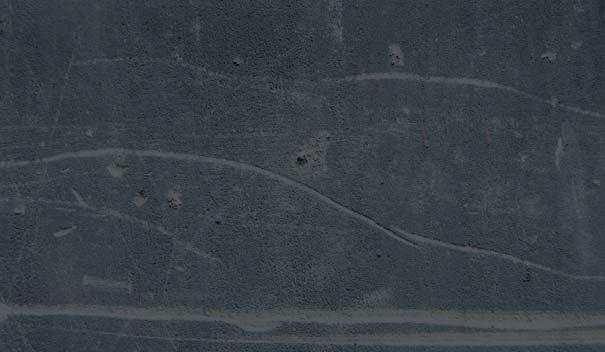

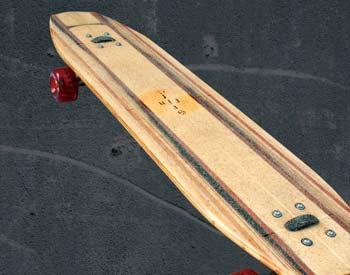





SPRING 2008 CONCRETE WAVE 97
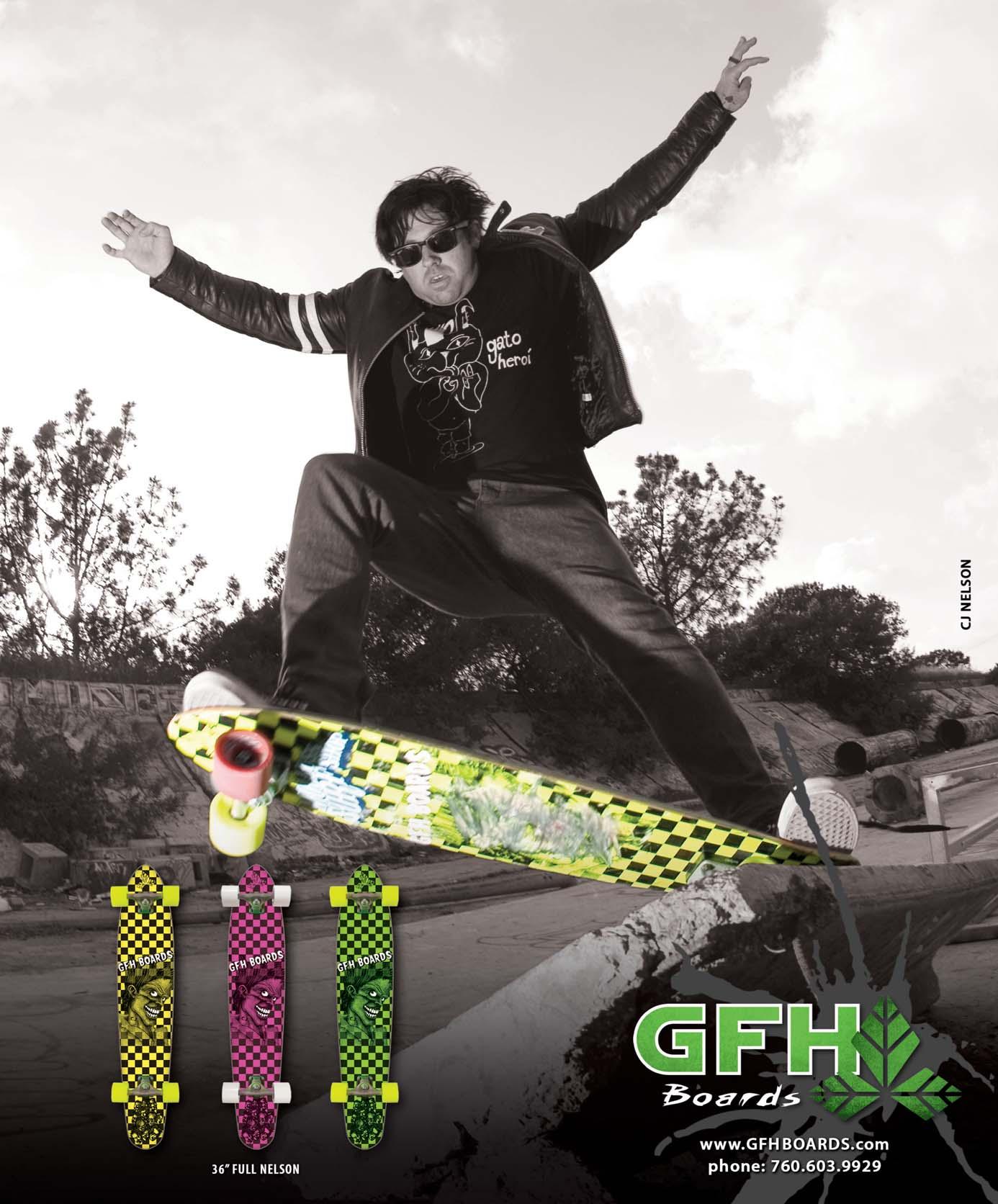











































































 By Dave Clark
By Dave Clark





 By Steven Fröhlich
By Steven Fröhlich






 By Blair Watson
By Blair Watson








 By Marine, father and skateboarder Keith Butterfield
By Marine, father and skateboarder Keith Butterfield







 Bill R.
Bill R.














































 By Jon Caften
By Jon Caften


















 By Markus Suchanek
By Markus Suchanek





































 By Markus Suchanek
By Markus Suchanek
















































 By Michael Brooke
By Michael Brooke









 Dane Lindblad
Dane Lindblad







 By Colin Beck, a.k.a. Bugs | Photos: Bill Fonseca
By Colin Beck, a.k.a. Bugs | Photos: Bill Fonseca





 By Marcus Rietema
By Marcus Rietema




























































































































































